



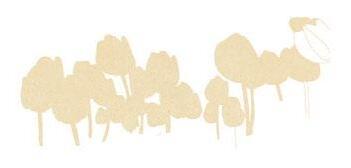






























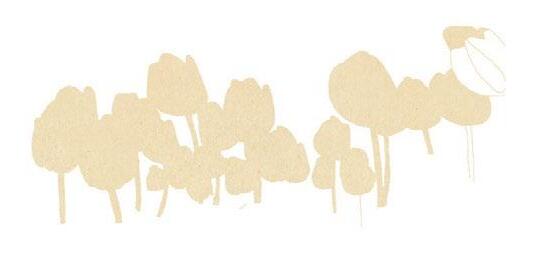

NETHERLANDS FALL 8/2017


Amsterdam is the kingdom of XVII-century canals, legendary architecture and enticing windmills. It is a “Heaven” of liberal values. Its freedom attracts millions of travelers, though it offers much more than just canals, the red-light district and its so-called coffee shops.
Go outside in any weather (it rains in Amsterdam for 270 days a year) and follow the trails walked by many tourists; take a boat ride on the Singel, Herengracht, Keizersgracht, and Prinsengracht canals; look at the hand-holding houses on the shore; select the best terrace with a wonderful view and enjoy a Dutch beer.
Take a bike ride – Amsterdam hosts more than 800,000 bikes. Yes, there are more bicycles in this city than there are people! This is the local lifestyle; due to the flat landscape and circular routes, there is no better way to discover the sights of Amsterdam than while pushing the pedals.
Get lost in the Jordaan – you’ll feel like you are travelling in time when you walk in the most impressive Amsterdam district. This used to be the workers’ living quarters and is now a place for adventures with its narrow streets and strange buildings, art galleries, antique stores, courtyards, cozy bars and restaurants.
Feel the local aroma – if you wish to discover true Amsterdam, leave the city center and visit De Pijp. It is a lively, fun place with tasty food, drink and shopping spaces. De Plantage will charm you with its XIX century elegance, while Oosterpark will suprise you with its vibrant multiculturism.
Feel the culture in the Museumplein – Rijksmuseum, Van Gogh Museum or Stedelijk Museum of Modern Art – just a partial list of Amsterdam’s amazing museums. The legendary Dutch artists’ legacy lives on in the works of a new generation of novelty-seeking artists and designers.
Try the raw herring – inexperienced gourmands may be somewhat afraid of how it sounds, but do not leave Amsterdam without this culinary impression. You will notice fish stands that sell this Dutch delicacy all over the city. Eat it quickly – the seagulls may try to steal it from right under your nose.
Enjoy some retail therapy – go straight to 9 Straatjes, meaning 9 streets. You will discover vintage and concept stores between the streets and canals that strangely intertwine in this district. Here you can buy anything from designer dresses to artisan make-up.
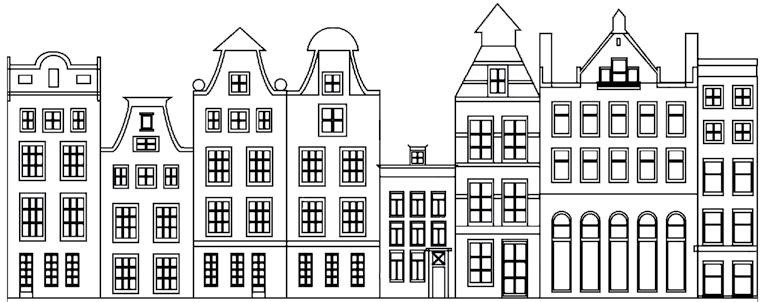

If you’re looking for an original souvenir, avoid the tourist traps and acquire authentic Dutch-designed items and Amsterdam brands in De Hallen.
One word describes life in Amsterdam: Gezelligheid. It is hard to find an exact English translation; it approximately means cozy, warm and pleasant. Gezelligheid is a cocktail enjoyed at 4 PM at a candlelit table overlooking the canal away from the cold winter outside. Gezelligheid is finding a shelter during the storm. This is the word that the Dutch use to convey happiness. Please enjoy your trip with Voyager by SOLO to seek this happiness. Feel the multilayered setting – make Amsterdam personal!
Tea Skhiereli Editor-in-Chief

Letter from the Editor
2 VOYAGER 8/2017

© 2017 EYGeorgia LLC. All Rights Reserved. Can unstructured data reveal structural risks? Our accounting and reporting service team can help you achieve statutory compliance and avoid risks. Contact us: +995 (32) 215 8811 George.Chaganava@ge.ey.com
It’s an honour for me to write this introduction in Bank of Georgia’s Voyager magazine. The previous editions were really inspiring and I hope the Dutch edition meets your expectations as well.
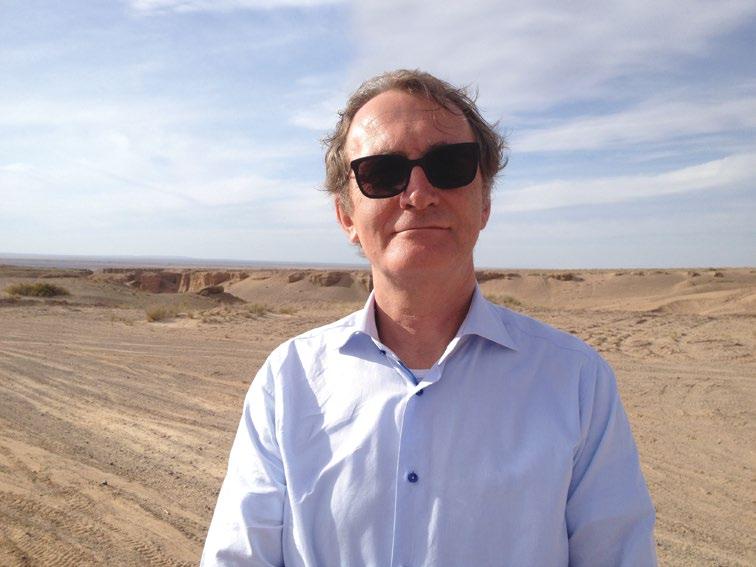
In the past two years my wife and I have fallen in love with Georgia and committed ourselves to both its further development and to promote bilateral cooperation. We enjoy travelling and meeting new people and even have adopted a Georgian dog, that has already visited the Netherlands a few times!
As Georgia, the Netherlands are a small country bordering a sea, but that is about all that is comparable between the two countries. Different from Georgia, my country is defined by rivers flowing through a flat land, making a delta, fertile but always threatened to be flooded. Before Christ, when Colchis was already known for its gold and crafts, our country was poor and dominated by petty agriculture. But – as Georgia – it was proud to be independent and tribes defended themselves – be it futile – against first Roman and later Frankish governance.
My country learnt to accommodate both tom its natural and political environment and became part of larger medieval structures, like the Frankish kingdoms and the Holy Roman Empire. From the late 16th century, however, we fought our war of independence and our sovereignty was recognized after 80 years of war, in 1648.
In the meantime my people had explored the seas and oceans and conquered countries around the globe, like
present day Indonesia, South-Africa, parts of India, WestAfrica and the Americas and had become established trading partners of China and Japan. For about two centuries the Netherlands were the only country having regular access to Japan, traces of which are still identifiable in both Japan and the Netherlands. But still most of our income was generated by regional trade with our immediate European neighbours. We developed agriculture and industries at home, closely related to these endeavours. This interaction between navigation, world-wide trade, agriculture and urbanization defined our culture and our mindset.
I hope that reading this magazine will confirm the association of these Dutch aspects with the Netherlands as an exploring, adventurous, and pragmatic country. We are scoring high in international indexes when it comes to innovation and logistics, as much as being internationally oriented (you find Dutch tourists literally everywhere), pragmatic and tolerant.
The Netherlands are now a densely populated country, a bit smaller than Georgia, but 17 million inhabitants, one of the richest industrialized countries in the world. We are fully aware that we owe our wealth to where we are – the North-Western European delta – and to interaction with our neighbours and the world at large.
We have to keep developing and need an open global system, integration in the EU and international Rule of Law. In the global, competitive environment we need, as much as other countries, to accomplish the Sustainable Development Goals, defined by the United Nations and innovate and adapt.
4 VOYAGER 8/2017
Jos Douma, Ambassador of the Kingdom of the Netherlands to Georgia






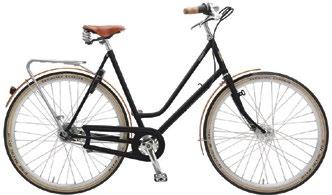



CONTENT AMSTERDAM DISTRICTS / HOTELS / MUSEUMS RESTAURANTS / CAFES / BARS CLUBS / SHOPPING CONTRASTING AMSTERDAM 54 THE LANDS OF INHERITED FREEDOM 56 MADE IN THE NETHERLANDS 59 THE ROYAL FAMILY 60 LORD OF THE SEAS 68 THE GRAMMAR OF DUTCH ARCHITECTURE 72 THE EAR 76 DANCING –AN INTERNATIONAL LANGUAGE 80 THE SPORTING GOLD AND SILVER OF THE NETHERLANDS 86 EDUCATION IN THE NETHERLANDS 89 THE STORY OF RED WINDOWS 92 LEGALIZED “MISDEMEANORS“ 95 WHY SHOULD WE EAT FLOWERS? 98 GASTRONOMY THE GOURMET PALETTE OF DUTCH CHEESE THE FLOWER LAND 108 CITIES DELFT / UTRECHT / THE HAGUE / ROTTERDAM MAASTRICHT / GIETHOORN / ZAANDAM LEIDEN / HAARLEM 14 / 53 110 / 127 102 / 106 6 VOYAGER 8/2017

IMAGINE 2950 ₾ From LANDSCAPING EVENT HALL KINDERGARTEN SECURE AREA Open park with secure access points. LOBBY An ideal place for business meetings with a dedicated concierge service. A colorful environment and caring teachers for the tiniest residents of Tbilisi Gardens. Perfect place for noisy parties and huge events. 21 000 m2 of green area to relax. All day gym with experienced trainers. Olympic-size and kids swimming pools. FITNESS CENTRE POOL IN THE CENTER OF THE CITY All in one place First New York Skyscraper in Tbilisi
I
Editor-in-Chief
Tea Skhirieli
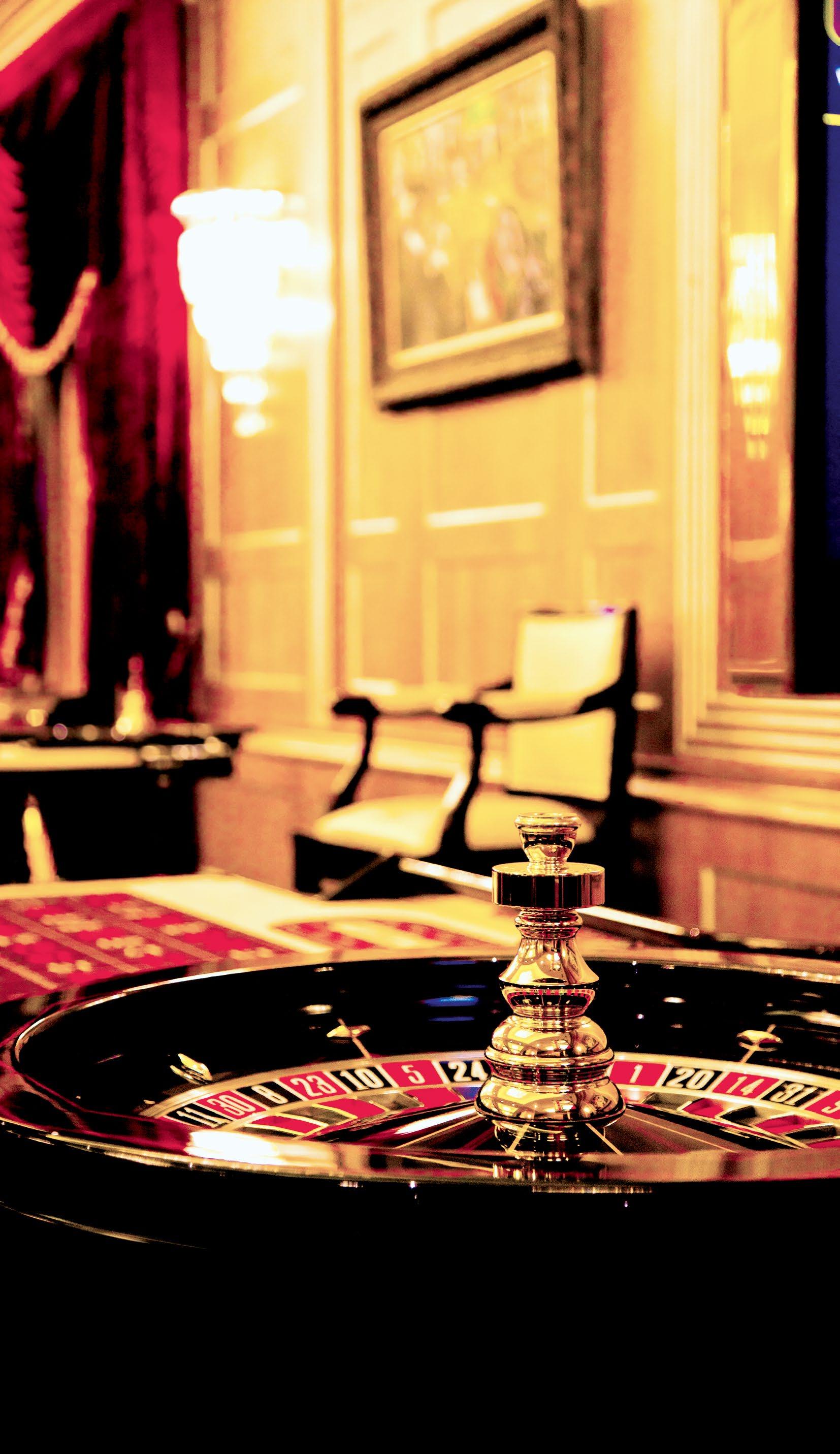
Designer Nino Kavelashvili
Illustrations by Maia Sumabdze
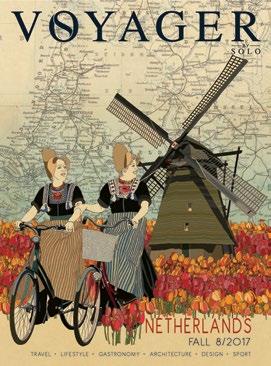
Translation by Lika Barabadze
Art - Director
Nino Daraseli
Editor Salome Dadunashvili
Authors:
Aka Morchiladze
Bidzina Baratashvili
Nikoloz Chkhaidze
Marina Kipshidze
Lasha Bughadze
Ciuka Kipshidze
Irina Bagauri
Marika Shalikashvili
Nanuka Chavchavadze
Project Manager / SOLO DIRECTOR
Eka Duchidze
Project Consultant
Nino Gegeshidze
SOLO Brand Manager

Keti Nikoleishvili
Administrative Assitant Giorgi Vasadze
Advertisement Manager
Nazi Goshadze
Special thanks to the Embassy of the Kingdom of the Netherlands in Georgia and to Sopio Kotiashvili, Rimma Shaginian, Maka Kekelidze and Ana Tevzadze
8, 2017
Photo - Shutterstock, Holland Media Bank
amsterdam Mediabank
+995 599 330 364 / Published material owned by LTD SOLO. Written Consent of the Company necessary for use of any material published in this magazine. Publisher: LTD SOLO
+995 32 2 44 44 00
Advertising:
Phone.:
ISSN: 2346-8130

* Entrance fee $300 to be redeemed in cash chips or slot ticket. Ambassadori Hotel, 17 Ioane Shavteli str. +995 32 211 21 21 info@ambassadori.casino www.ambassadori.casino
TBILISI SOLO LOUNGE MTASTMINDA 11 Chitadze Str.
TBILISI SOLO LOUNGE PALIASHVILI 23, Paliashvili Str.
TBILISI SOLO LOUNGE ABASHIDZE 70, Abashidze Str.
TBILISI SOLO LOUNGE TSINTSADZE 12, Tsintsadze Str.
TBILISI SOLO LOUNGE Chavchavadze 29, Chavchavadze Ave.
TBILISI SOLO LOUNGE KAZBEGI 24G Kazbegi Ave.
TBILISI SOLO LOUNGE KAZBEGI 25 Kazbegi Ave.
KUTAISI SOLO LOUNGE KUTAISI 5 Q. Tamar Str.
BATUMI SOLO LOUNGE Batumi 22 Rustaveli Ave.
TBILISI SOLO LOUNGE TSERETELI 73 Tsereteli Ave.

TELAVI SOLO LOUNGE Telavi 3 Cholokashvili Str.

www.solo.ge Tel: +995 32 2 44 44 00




CITY OF HAND-HOLDING HOUSES
SALOME DADUNASHVILI
Tilting houses cling to each other like new soldiers at the front line. Some are leaning forwards, as if trying to escape, while their friends are stopping them. Inclining rooftops over the narrow streets long for each other like sweethearts that have been pulled apart.
There is not a single straight line in this city.
This city is surprised at nothing, and is generally calm about everything.
Every second house in this city is black, yet colorful.
This is Amsterdam – the city of canals, wild bicycles and seagulls.
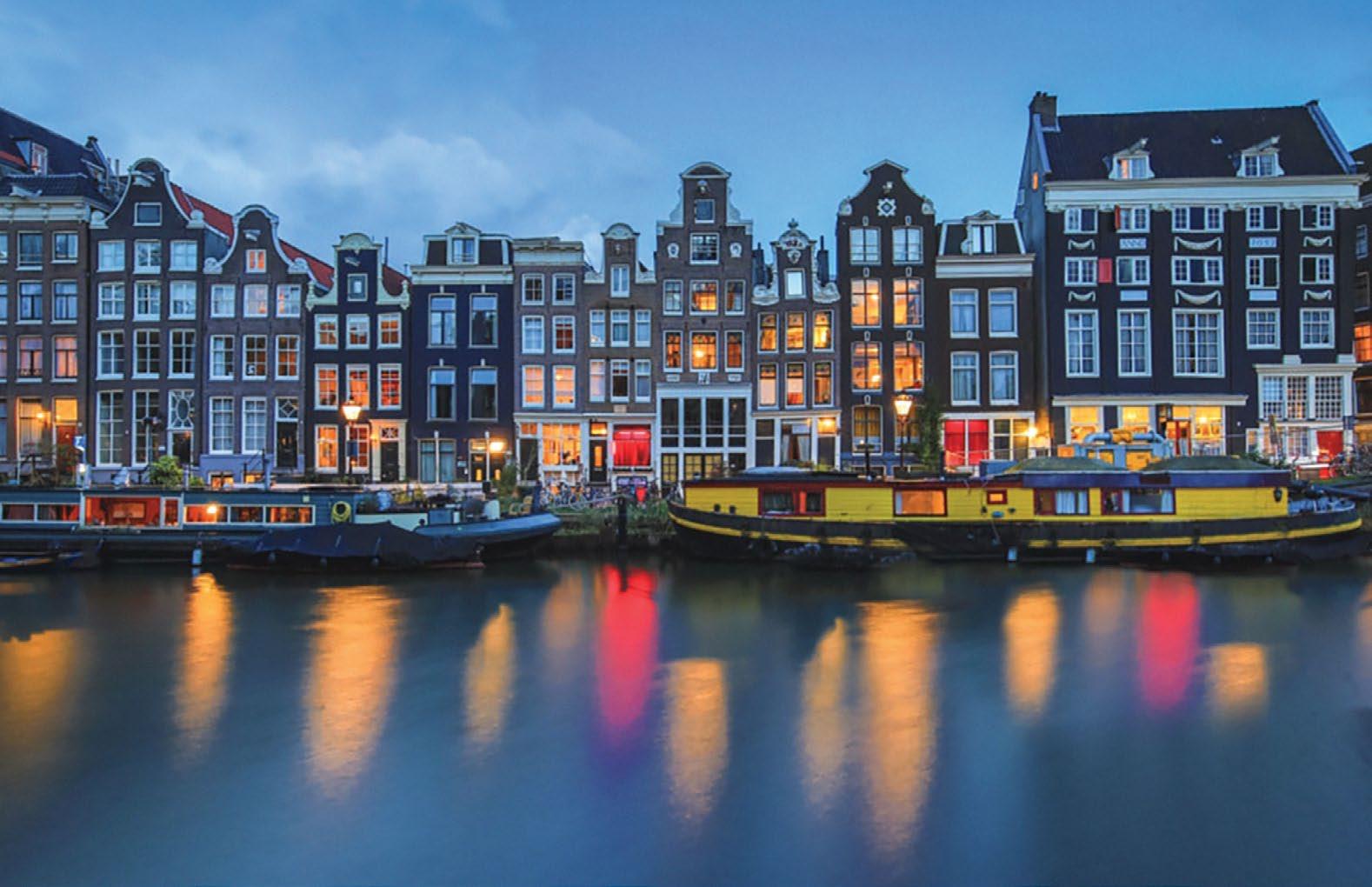
The sexual energy of people excited by funny smoke and accessible love in the pink quarter smashes against the glass
walls, where the night butterflies display their almost entirely plastic bodies. House roofs are ornamented with white decorations, just like our childhood cakes were adorned with layers of frosting. Proud seagulls walk on the inclined roofs. Time after time, they sit on the chimneys and laugh at the tourists’ vain bustle.
Amsterdam dwellers shun curtains – that is wonderful as the life that takes place in different dimensions behind the aquarium-like glass windows is much more interesting than the one that takes place along the canals.
Amazingly beautiful flower arrangements are placed there, reflecting the blue sky. Humming-bird-like exotic flowers bow their heads to tulips.
All of the flowers are unique, thoughtfully selected, and carry a purpose.
14 VOYAGER 8/2017
17th century Amsterdam’s ghosts are hidden in the corners of old mirrors. Items looted by half-pirates, seamen, and adventurers were sold in this city, settling down in the form of pearls the size of eggs and china as thin as rose petals.
The demand for beauty increased with the riches of the city’s traders. Rembrandts and Vermeers constantly painted portraits of those content traders and their wives; still life of exotic produce and scenes saturated by thousands of secret codes still adorn walls today...
Every piece of land that the Dutch have conquered from the sea and swamp has bloomed into a thousand colorful tulips. Tulip bulbs turned into golden coins, and golden coins poured into thousands of Dutch painters. As a result, the content faces of “anyone who is anyone” look at us from the museum walls –portraits of truth and integrity.
Amsterdam is an unusual city. Once you lose your concentration, its name becomes engraved in your heart, just like the name of a sad and happy woman – Saskia – is engraved on a simple stone of its oldest church.
This name sounds like a magical song for everyone who has looked into the clotted space of Rembrandt Van Rijn’s portrait backgrounds. Saskia was the wife and muse of the greatest artist of all time, who sold her grave.
It was a good deal. Rembrandt needed money and the plague-ridden Amsterdam needed burial spaces, so time after time, tombstones were thrown away and the bones of less lucky people, whose relations determined their unusual journey, were replaced with the new dead.
Many Amsterdam houses are part of the city’s cultural heritage list. Hooks often adorn their roofs, which were used to lift furniture inside that would not fit into the narrow 17th century hallways.
Imagine, you’re sailing on a ship on the Amstel River and you see how a piano or other piece of furniture flying above you.
These houses are like their inhabitants – tall and slender. Such long-legged people swish by you, whistling and spinning you around.
Also, I’ve never seen so many admirers of whistling.
Every city has its own voice the unique audio rhythm. Amsterdam talks to you, if you listen. Silent splashes of water, the ironic laughter of seagulls, the honking of bikes and ships. This is the sound of Amsterdam. However, don’t close your eyes for a long time because you’ll get under a blue bike of one of the chirping creatures and find yourself in a canal.
CENTRUM, DE WALLEN CROWDED SQUARES
You will find very noisy and very quiet royal places at the center of Amsterdam. The 1889 central station, the Barlage, a stock exchange dating back to 1896, the 15th century Nieuwe Kerk and the 17th century Town Hall (now the Royal Palace) are located there.

De Wallen is the oldest settlement in the city, where the oldest, twelfth-century Amsterdam shoe soles were found. It houses the oldest Warmoesstraat Street and the oldest cathedral, Oude Kerk. An entire chain of fashion shops stretches from Dam Square to Leidseplein and it's better to avoid the crowds there during the tourist season.
I amsterdam
This slogan, the symbol of unity and a physically tangible idea – I Amsterdam – is an obsession of the city and its inhabitants. Located behind the Rijksmuseum, a huge “I Amsterdam” slogan is installed on Museumplein. It has become the city's symbol.
The slogan is two meters high and 23.5 meters long. The same greeting is depicted at the Amsterdam's airport, and the third slogan constantly changes its location throughout the entire city.

15 VOYAGER 8/2017
DISTRICTS / AMSTERDAM
RED LIGHT DISTRICT “LEGALIZED MISDEMEANORS"


Prostitution in Amsterdam is as old as the city itself. In the XV century, prostitutes flocked to the port of Amsterdam to earn money for food. The police banned them from standing in the street. They were allowed to sit by draped windows instead. If a narrow strip of red light appeared in the window, the man could enter. Open windows are no longer forbidden, but the tradition of using red curtains is still intact.
Walking in the street are safe, though some rules should be observed. It is not permitted to take photos of women during work. If a street vendor offers to sell you a bicycle or drugs, you should decline. They are trading illegal goods and stolen items and if you get detained by the police, you will have to pay a big fine.
Visit the mirror district, Spiegelkwartier, if you are interested in art galleries and antique shops.


CANAL DISTRICT, NINE STREETS BEST SHOPPING
The 14-kilometer canal system, with excellent coastal buildings, small streets and eighty bridges, is really impressive, and in the midst of all this, the Nine Streets district is located. It features a shopping mall, where many cafes, high-class boutiques, best hotels and design stores are located.
JORDAAN, HAARLEMMERBUURT, WESTERPARK BOHEMIAN BOURGEOISIE
Fashionable shops and traditional cafes are housed in the narrow streets in the picturesque area between the canals. Jordaan never shared the aristocratic charm of other districts. Workers' and rebels’ homes attracted the most creative and excluded people of the city, including Rembrandt. This area is a real labyrinth of small streets. Noordermarkt market is located in the middle of the Jordaan, featuring cafes, fashionable restaurants and organic products.
PLANTAGE, OOSTERPARK GREEN
DISTRICT
Beautiful small houses, wide boulevards and green areas: Tropenmuseum, the Botanical Museum De Hortus and the Artis Zoo are situated here. Plantage houses the Rembrandt House Museum, the Dutch Renaissance Museum, the Jewish Museum, the Scientific Museum NEMO and the

Westerstraat and Rozengracht is a place of unique fashion and Dutch design. Haarlemmerstraat is several steps away – a long street where you can find a lot of vintage, design stores and coffee shops. Festivals and creative workshops are held in the nineteenth-century Westergasfabriek. The quiet Haarlemmerbuurt is in the epicenter of the architectural renaissance; the settlement is rapidly changing.
Renewed Marine Museums. As for the east of Oostenpark, the city's air becomes even more transparent - the tranquility of railroad tracks and paths and neo-renaissance homes will surely impress you. Former military buildings were turned into artistic spaces here.
Nearby Beunklein is a real culinary center where you can have a wonderful pizza, coffee and ice cream.
16 VOYAGER 8/2017
AMSTEL RIVER, UTRECHTSESTRAAT QUIET CANALS
The city’s namesake river is loved by its dwellers. A historic theater Carre, bridge Magere Brug, built in 1887, and a XIX-century wooden bridge are located on its bank.
The popular Rembrandtplein Square dates to 1668, and the longest street, Utrechtsestraat, is full of fashionable boutiques, wonderful cafes and concept shops.
This street crosses the network of canals, housing an impressive Van Loon museum, with the XVII century yard.
OLD SOUTH LEGENDARY MUSEUMS
Old South is the most prestigious district in the city. The magic Museplein is located here - one of the greenest spots in Europe, with its architectural wonders: the Rijksmuseum, Royal Concertgebouw, and the Van Gogh and Stedelijk Museums. Hoofstraat is a highclass shopping area, while Baerlestraat features great stores and cafés.
There is no big difference between the old and the new, or the wealthy and the middle class, but the scent of privilege is always felt in this area.
DE PIJP STREET FAIRS
Due to its creative atmosphere and cultural diversity, De Pijp is also known as the Latin Quarter of Amsterdam. This colorful area is the most fun and vibrant in Amsterdam.



During the 20th century, De Pijp was associated with Albert Cuyp Market –the most ethnically exotic street market in the Netherlands. After more and more newcomers opened shops there, the district became the nest of advertising creativity.
De Pijp is amazingly diverse. The street market as well as high-class boutiques are located here. Sandwich stalls and fashionable cafes are side-by-side; carpets sellers and ethnic dining coexist.
OLD WEST, DE BAARSJES THE KINGDOM OF TALENTS
Almost the entire western part of Amsterdam was inhabited by the working class in the nineteenth century. Its architecture is less distinguished by its sophistication and looks more like the Soviet Union than Holland; however, it is worth a visit for its cultural eclecticism and creative atmosphere. This was the target of gentrification; real estate was purchased by young urban families, followed by the opening of supermarkets, bicycle shops and vintage furniture boutiques.
There is also a former tram-producing plant, De Hallen, which is one of the best markets for culinary ingredients and features cinema, libraries and studios. In De Baarsjes, old school buildings are turned into wonderful studios.
This district is also known for the Heineken Experience museum, presented in the old beer factory.
NORTH, IJ SHORELINE ARCHITECTURAL TRANSFORMATION
Traditionally only workers lived on the north side of the river Ij, in the windy streets, away from the luxury of the center. Now the cheap real estate, empty factories and workshops allow for great cultural transformation.
From the 1980s, architects, creative agencies and event organizers have moved to the north of the area and turned it into a festive, dancing place. The cafés of the district have been refined and their wide terraces welcome the river breeze. The EYE Film Museum is one of the biggest attractions in the north. The huge Amsterdam Tower stands next to it. By 2018, a several-hundred-meter hotel will open beside it.
17 VOYAGER 8/2017
DISTRICTS / AMSTERDAM
CANALS
You should definitely visit the circle of canals created in the 17th century, considered a symbol of Amsterdam.

You will find the most beautiful and magnificent houses on GOUDEN BOCHT – the so-called “golden winding road”, which is the area from Leidsestraat to Vijzelstraat along the Heregracht canal. "One View, Fifteen Houses" – this amazing view opens from the corner of Reguliersgracht and Herengracht canals, fitting 15 bridges into one panorama but keep in mind you must be standing on the odd-numbered side of the street to see it.

MAGERE BRUG
The ‘narrow bridge’ over the Amstel River is one of the most famous painted bridges in the world. By night, it is lit with 1,800 light bulbs. The modern bridge was built in 1934 though Kerkstraat bridge has stood there since 1691.
Until 1994, the bridge was opened and closed through the true mastery and effort of two bridge operators. When joined, the two sides of the bridge must have perfectly matched each other.
The operators stood on the different halves of the bridge and regulated the balance using their own weight.
The best way to view Amsterdam is to travel around it by water. There is a wide variety of cruises on the canals for this purpose. Amsterdam is a compact city - in just over two hours you can sail past many architectural sights.
Several canal travel tours operate on the hop on-hop off principle, which means that you can get out onto the shore at any stop and vice versa.
These ancient houses with luxuriously decorated facades and pointed roofs are part of the Netherlands' national heritage. Most of these marvelous buildings were built around the circle of canals in the golden age of the Netherlands, when the construction tax was calculated according to the width of a building’s façade. The narrow houses are a distinguished phenomenon; for example, there are three famous buildings whose width is just slightly more than 2 meters. One of the most remarkable examples of such architecture is the house at: Kloveniersburgwal 26.
AMSTERDAM CANAL CRUISE
You will experience the full attractions of Amsterdam during this comfortable, calm tour. Price: 16€

HOP ON _ HOP OFF BOAT TOUR 24 H.
Enjoy a 24-hour free-flow cruise on Amsterdam's historic canals. Price: 25€


OUDE HOOGSTRAAT 22
Considered the narrowest house in Amsterdam, it was built in 1600. It is 2.02 m wide and 5 m long; each floor has one tiny room. Currently the building is open to the public and hosts the smallest of Amsterdam's teas houses.
SINGEL
7
The structure of this building located on the Singel canal is unique. It has a very narrow rear façade although the front façade is slightly wider.
A clear example of the narrow spaces characteristic of Amsterdam is Trompettersteeg Street at just one meter wide.
18 VOYAGER 8/2017
MUSEUM HET REMBRANDTHUIS
The outer façade and interior of the Rembrandt house museum is preserved in its original form the way it was in the 17th century when Rembrandt lived there.
In the museum, you will see Rembrandt's workshop, living rooms, as well as his cabinet, where many works of art and rare antique pieces are displayed. This is a unique room where Rembrandt’s rich collection is presented.
MUSEUM VAN LOON

This house was bought by Hendrik van Loon, one of the founders of the East India Company, in 1602 for his son, Willem van Loon, as a wedding gift.
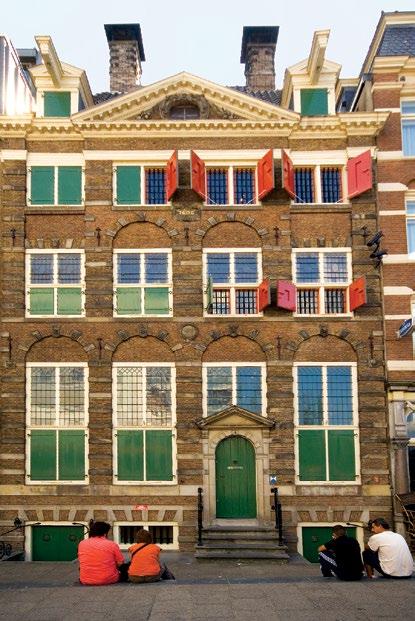

STEDELIJK
You will not find a better place to get acquainted with contemporary art than Stedelijk. This dynamic museum follows the trends of development of art.

The nine rooms of the artist's apartment are restored completely in their original form. The museum also exhibits paintings of Rembrandt’s contemporary painters. In the new wing of the building, you will be able to see an almost complete collection of Rembrandt’s graphic works. A special point of pride for the museum are four copper-plate engravings completed by the artist himself. Open: every day at 10.00-18.00
Ticket price: 13€
Jodenbreestraat 4 www.rembrandthuis.nl
This perfectly preserved building allows us to learn about the life of a Dutch family in the 17th century. The interior of the house has remained intact for centuries and still fully reflects the brilliance of the Golden Age.

Ticket price: 9€
Open: every day _ 10.00-17.00

Keizersgracht 672
The main part of the exposition is made up of such art movements as De Stijl, Cobra, Nouveau Realisme, Pop Art, Minimalism and Zero-Art. Among other styles, you will find such artists as Picasso, Monet, Cezanne, Matisse, Chagall, Renoir, also the Dutch Karel Appel and Piet Mondriyan.
Open: Everyday - 10.00-18.00 on Fridays until 22.00
Ticket price: for adults 17.5€, Free admission up to 18 years old.
Museumplein 10 www.stedelijk.nl
CONCERTGEBOUW
The concert hall with the best acoustics in the world is located at Museumplein. More than 600 classical, pop and jazz concerts are held annually in this hall.
Netherlands Royal Orchestra, considered the best in the world, plays at the Concertgebouw.

AMSTERDAM ARENA
Amsterdam arena is the home stadium of the “Ajax” football club, which can hold 53,000 spectators. The building is distinguished by its retractable roof; it closes in bad weather so matches and concerts are never postponed.

Arena Boulevard 1
HERMITAGE AMSTERDAM
The "Hermitage Amsterdam" is a branch of Saint Petersburg’s state hermitage and displays exhibits of St. Petersburg's rich collection here.
Amstel 51
Mahler, Rachmaninov and Stravinsky have conducted in this concert hall. The stage also remembers such musicians as Leonard Bernstein, Yehudi Menuhin and Vladimir Horowitz. Concertgebouwplein 10
19 VOYAGER 8/2017
SIGHTSEEINGS / AMSTERDAM
BLOEMENMARKT
This is the only flower market in the world that floats on water. One of the cult Amsterdam spaces was opened in 1862. There was a time when the flower traders carried their goods to the city center on their barges along the Amstel River.

Presently, greenhouses are set up on the floating barges where besides the flowers you can buy other plants, bulbs, and seeds for your own garden.
Singel 1012
BEGIJNHOF
"Begijnhof" is one of the oldest inner yards of Amsterdam and the best way to get away from the city's noise.


In olden times, this was the dwelling place of Beguines – religious unmarried women who lived together.
A visit here is truly a surreal experience and it is definitely worth looking for the secret entrance to Begijnensteeg.
OUDE KERK
Surrounded by small houses, this old church remains a cozy, peaceful paradise at the heart of the stormy Red Light district. The church’s octagonal Gothic bell tower served as a landmark for sailors approaching the shores of the Netherlands.
Oudekerksplein 23
COMMENT
In the city that is full of flower selling points, giving a nice bouquet is always a good gesture. Amsterdamers can distinguish between a bouquet hastily bought at the station and delicately selected flowers from the artisan district.
ONS’ LIEVE HEER OP SOLDER
"Our Lord in the Attic" is the name of the oldest museum in Amsterdam in translation. During the Golden Age, following the Reformation, the Netherlands became a protestant country where Catholics were prohibited from conducting religious services in public places.

WESTERKERK
Westerkerk is the largest Protestant church in the Netherlands, built in 1631. The beautiful building makes a great impression with an 85-meter high tower overlooking the entire city of Amsterdam. In 1669, the painter Rembrandt Van Rijn was buried somewhere here (nobody knows exactly where).
Prinsengracht 279
VONDELPARK

This green zone spreads across 45 hectares and is visited by 10 million people annually. With open-air theaters, children's playgrounds, cafes, and restaurants, this park, named after a 17th century Dutch poet, Jan Vondel is a real oasis of activity in any season. The park was created in 1865 by landscape architect Jan Zocher. He used the principles of English garden landscaping in his design with constructed desolate pathways, real forests and ponds creating an impression of an ideal natural landscape. Entry to the park is free.
That's why in 1661, a wealthy merchant Jan Hartmann decided to start a hidden church in the attic of a building. The Catholic congregation traveled here from different places to attend mass and for confession. This is the place where freedom of religion started in the Netherlands.


Oudezijds Voorburgwal 38 www.opsolder.nl
NIEUWE KERK
Neiuwe Kerk (translated as "the new church") is a famous landmark of Amsterdam, where for centuries the coronation of the Dutch kings took place.
20 VOYAGER 8/2017
ANNE FRANK HUIS
In 1957, the Anne Frank Foundation opened a memorial museum in Amsterdam in the house where Anne Frank's family had been hiding from the Nazis for two years. The rooms ravaged by the searches were restored to their original appearance, and in the other halls of the museum, they show biographical films about Anne as well as materials about the Holocaust, Fascism and Antisemitism in Europe. There is usually a long line at the entrance of this sorrowful yet very popular museum.
The Nazis occupied Amsterdam for just two years but out of the city’s 90,000 local Jews, only about 10,000 survived (including 3,500 Jewish children).
PORTUGUESE SYNAGOGUE
The Portuguese synagogue in Amsterdam belongs to the Sephardi Jewish community. The enormous synagogue building was constructed in 1671-1675 by Elias Bouwman and has not changed much to this day. Even today, there is no electricity and the 350-year-old chairs remain intact. The author of the project was

WEST JERUSALEM
inspired by a description of Solomon’s temple in the Old Testament. He definitely succeeded in building one of the most beautiful synagogues in the world. The main effect of this place is that the feeling of time disappears and you can easily imagine yourself as a person from the 17th, 18th or any other century.
Mr. Visserplein 3
Open: everyday, however, only online ticket holders are admitted from 9.00 am to 3.30 pm. Tickets should be purchased on the museum’s website two months in advance.
From 3.30 pm you can buy a ticket at the entrance.
Ticket price: For adults - 9 €, for children up to 17 years - 4.5 €
Prinsengracht 263-267
www.annefrank.org

Amsterdam was called West Jerusalem back in the 17th century and the local Jewish community was already considered to be the largest in Europe. During its 700year history, Amsterdam has sheltered Jews exiled from England, France, Portugal, and Poland many times, as well as those who escaped the inquisition in Spain, the fascists in Italy and the Nazis in Germany.
In the last decades of the 16th century, after the establishment of the Union of Utrecht (1579), the Netherlands basically announced freedom of religion and many religious exiles have since came here.
In addition to freedom of religion, there was another reason for the massive resettlement of people to the Netherlands: at that time, Amsterdam had become one of the largest maritime ports in western Europe and offered great business opportunities.
The wild trade went on in the Jewish Quarter of Amsterdam; there were diamond workshops and luxurious houses of the West and East India company shareholders there.

Rembrandt, who lived near the Jewish Quarter, found the models of his Bible characters there also.
By the 19th century, wealthy people lived in the Jodenbuurt Jewish neighborhood – brokers, pharmacists, merchants, lawyers. Among them were many rich people but the owners of the diamond factories, who became extremely rich during the “diamond rush”, began to builds villas in the neighboring district of Plantage.
Jews have made a significant contribution to the development of the Netherlands economy. As a result of their work, Amsterdam became one of the centers of world trade in the 17th century.
The Sephardi population participated in the creation and development of such industries as sugar, silk, tobacco, and chocolate production. Amsterdam became a center of the diamond-processing industry, and diamond processing became a distinctively Jewish trade. In the second half of the 17th century, Jewish bank deposits grew and large Jewish bankers who gave out loans to the Netherlands government emerged.
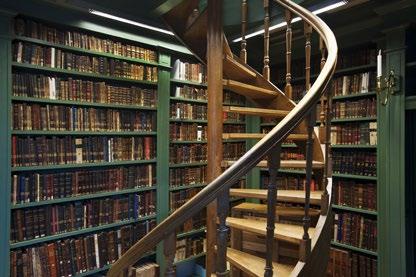
21 VOYAGER 8/2017
THE JEWISH QUARTER HOUSES A JEWISH HISTORY MUSEUM, WHERE UNIQUE MANUSCRIPTS AND ANCIENT BOOKS ARE PRESERVED.
SIGHTSEEINGS / AMSTERDAM
Amsterdam, crisscrossed by a thousand canals, has its own museum island. A museum square is a given property of all big cities. This makes it easier for viewers to see them, and obviously creates better working conditions for the museum workers. Today, museum marketing implies bringing museum spaces closer together. One can see Van Gogh, contemporary art, and many other magnificent museums in this district of Amsterdam.
And there is more: all of these buildings are placed on a large and beautiful green meadow. The magnificent brick building of the Rijksmuseum is constructed in the Gothic style; it dominates this space.
To describe the importance of this museum’s collection, truly filled with masterpieces, one can mention only
RIJKSMUSEUM


Gallery of Art in 1800; in 1808, it was moved to Amsterdam and the collection was hosted in the Royal Palace. Since then, the museum has changed its location several times.

The final collection was ultimately formed in 1885 but the idea of establishing such a museum emerged much earlier - in 1798 (at that time, the idea of creating a national museum was spreading across Europe).
It housed 200 exhibits at the time of its initial opening. The first acquisition - "the Threatened Swan" by Jan Asselijn – still holds an honorary place in the museum. In 1808, the new king, Louis Napoleon, ordered that the collection be moved to Amsterdam to increase the importance of the new capital. Numerous masterpieces were added to the collection in Amsterdam. Among them was Rembrandt's "The Night Watch".
The story of enriching or splitting the museum collection lasted for many years. Finally, an architect called Pierre Cuypers designed a new building for the museum, though critics considered it too medieval and not sufficiently Dutch.
Since its official opening in 1885, the museum has added many departments and today is one of the largest and richest art spaces in the country. Its collection is amazingly diverse. Everybody will find a distinctively interesting space for them here. Those who love the decorative arts and jewelry will be enormously pleased.
22 VOYAGER 8/2017
two paintings: "The Night Watch" by Rembrandt and Vermeer’s "The Milkmaid".
The Rijksmuseum opened in The Hague under the name of the National
© Erik Smits
Self Portrait as the Apostle Paul, Rembrandt Harmensz. van Rijn, 1661 © Rijksmuseum
Night Watch, Rembrandt Harmensz. van Rijn, 1642 © Rijksmuseum
The most beautiful furniture created in the 16th and 17th centuries, which previously decorated houses of the wealthy Amsterdam merchants, stands before you with its sophisticated magnificence.
A rich collection of the ship models owned by the museum paints the Dutch as distinguished sailors. Every little boy's eyes light up when they enter this exhibition hall. The large model of the sailing ship from “Pirates of the Caribbean”, created with amazing detail, indicates the strength of this small country’s naval fleet.

Naturally, the largest number of visitors is gather in the "Night Watch" hall. This splendid and magnificent painting of Rembrandt, which is basically a portrait of the city militia, is always the center of attention. This dynamic scene, which significantly differs from the other portraits of militia made by the painter’s contemporaries, is essentially a film scene. It is not a coincidence that a famous director, Peter Greenaway, decided to make a film about this painting. Rembrandt, a re -
markable painter and most importantly, an innovator, can be seen here on a totally different scale.
The Rembrandt paintings stored at the Rijksmuseum are also interesting in the way that they let you see how this distinctive artist developed. Portraits created by the 26-year-old Rembrandt and those painted a few years before his death are a wonderful example of the evolution of an individual’s talent.
There is a constant line in front of “the Milkmaid” and other works by Vermeer, displayed in the same hall. For obvious reasons, all of the genre scenes created by Vermeer are a source of constant interest; however, interesting paintings by his contemporaries create a good glimpse of the period.
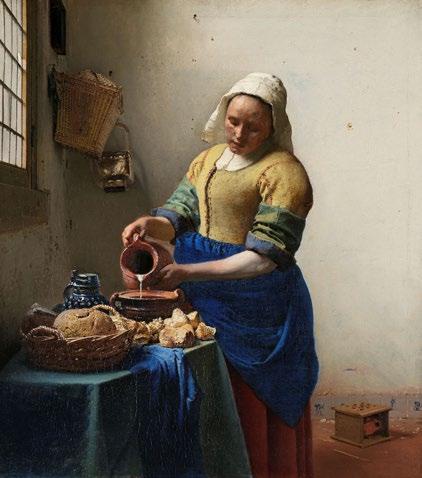
The must-sees are:
The "Hall of Fame", featuring works of the Dutch Golden Age grandmasters, including world renowned masterpieces by Frans Hals, Jan Steen, Vermeer and Rembrandt.



Among the impressive exhibits are Rembrandt Van Rein's "Night Watch" and Jan Vermeer's "The Milkmaid". Even if you do not have much time, make sure to visit this hall as you will be able to see the best works of the Golden Age in one place.
To learn more about the Golden Age, see the historic "doll houses", the oldest of which dates back to 1676.

23 VOYAGER 8/2017 MUSEUM / AMSTERDAM
© Rijksmuseum
The Jewish Bride, Rembrandt Harmensz. van Rijn, c. 1665c. 1669 © Rijksmuseum
Still Life with Cheese, Floris Claesz. van Dijck, c. 1615 © Rijksmuseum
Portrait of a Couple, Probably Isaac Abrahamsz Massa and Beatrix van der Laen, Frans Hals, c. 1622 © Rijksmuseum
The Milkmaid, Johannes Vermeer, c. 1660 © Rijksmuseum
Winter Landscape with Ice Skaters, Hendrick Avercamp, c. 1608 © Rijksmuseum
One of the most distinguished halls is the exposition of the so-called doll houses. Petronella Oortman was the wife of Johannes Brandt, an Amsterdam merchant. It is not clear why this respectable lady decided to order a doll house from an anonymous craftsman, but the fact is that we received an absolute masterpiece as a result. The doll house, reaching the height of an adult, replicates the interior of the rich merchant’s house with full precision. Tiny marble fireplaces, redwood furniture and curtains of expensive cloth – even the decorated walls – look exactly as they were in reality.

The table is adorned with tens of tiny porcelain glasses and plates, painted blue, and all of the necessary utensils hang on copper hooks in the kitchen.
Hundreds of diamonds shine in the hall of jewelry, but the items that these precious stones decorate are so important that you would not even notice the diamonds.
RECOMMENDATION
You should plan a whole day to visit the museum. If you truly want to see the paintings and sculpture of the late medieval period in full, amazing models of ships, furniture, ceramics and jewelry, and most importantly, an amazing collection of paintings, you will need to arrange a break in the museum's café.
Unlike many museums, the Rijksmuseum has a truly superb cafeteria. Amsterdam dwellers often come here for breakfast even when they do not plan to visit the collection.

Tickets can be bought in the interior area of the museum, therefore everyone can visit the enormous atrium.
In the afternoon, the museum café offers a wonderful lunch, though at this point the number of people and therefore the length of the line to sit at the tables increase significantly.
It is better to go to the museum in the morning. Although one would rarely see lines as long as those at the Louvre here, you will be able to buy a ticket and have a morning croissant in tranquility at 10 am.
The museum has an exceptionally interesting shop. Glass cups and jugs, seen moments ago in the halls and lovingly painted by Dutch artists, can be purchased in the store. These high-quality replicas are handmade individually by the glass artists. Prices range from 29 to 170 Euros.
IF YOU ARE INTERESTED IN CERAMICS AND ESPECIALLY IN THE HISTORY OF PORCELAIN, YOU CAN WITNESS THE AMAZING JOURNEY THAT CHINESE PORCELAIN TOOK ON ITS WAY TO EUROPE. YOU WILL SEE THE ATTEMPTS AND SUCCESSES OF THE DUTCH MASTERS IN CREATING THEIR OWN PORCELAIN.
Distinctively interesting are the decorative figures created with large pearls. The small people in dressed in clothes decorated with mother of pearl, enamel and precious stones form an amazing sight.


Porcelain copies of items displayed in the museum created in the Delft Factory are especially interesting. They are very expensive and some are quite large, but the museum offers a great service: the purchased item will be delivered to your home address in your country.


The museum is open every day from 9.00-17.00, but keep in mind that the ticket cashiers close at 16.30. I advise you to buy an electronic ticket in advance. You be able to use the "fast entrance" and will not have to stand in the line.
Admission price: Adults - 17.50 €; Children (up to the age of 18) – admission free of charge.
Museumstraat 1
24 VOYAGER 8/2017
MUSEUM / AMSTERDAM
Bloempiramide, De Metaale Pot (toegeschreven aan), naar Lambertus van Eenhoorn,
ca. 1692ca. 1700 © Rijksmuseum Dolls’ house of Petronella Oortman anonymous, c. 1686 c. 1710 © Rijksmuseum © Rijksmuseum










 ROUTE RECOMMENDED BY VOYAGER
ROUTE RECOMMENDED BY VOYAGER

There is a wide variety of water transportation options available in Amsterdam; most guests only sail through the Canal District and never even set foot on its soil.
We strongly advise that you devote one full day to walking the shore of the Canal district where a whole new world will appear in front of your eyes - fantastic palaces, designer stores, quiet bars and cafes that are rarely visited by anyone other than the locals.
CAFÉ TABAC (Brouwesgracht 101, Jordaan) – Situated on the most picturesque crossing of the Canal District, this 17th century café is an ideal place to watch the boats; it is also situated at the entrance of the Jordaan district.
ANNE FRANK’S HOUSE (Prinsengracht 263-267, Canal District) – the house of Anne Frank, now a museum, concealed the Frank family from the Nazis in 1942-1944.
PULITZER'S BAR (Keizersgracht 234, Canal District) –You can enjoy cocktails from 3 pm in this classical art-déco style bar, frequented by the intellectual elite of the city.
NINE STREETS (Keizersgracht 359, Negen Straatjes) – This enclave of small streets is a true paradise for fashion lovers; every corner of the nine streets hosts ideal boutiques for "non-mainstream shopping". THE FROZEN FOUNTAIN (Prinsengracht 645, Canal District) – Here you can find the most impressive designer collections of lighting, books, watches and carpets which you would otherwise only see in museum collections.
MUSEUM HET GRACHTENHUIS (Herengracht 386, Canal District) – You can study the history of luxurious items and learn the details of the heritage of the Channel District in a 17th century building.
DE GOUDEN BOCHT (Herengracht, Leiderstraat and Vijzelstraat, Canal District) – wonderful gardens, beautiful 17th century houses and 15 bridges are located in this space.
MUSEUM VAN LOON (Keizersgracht 672, Canal District) – The museum of Ferdinand Loon, a contemporary of Rembrandt, where the original kitchen, garden and shed are preserved.
BLOEMENMARKT (between Singel, Koningsplein and Vijzelstraat, Canal District) – The largest floating flower market in Europe, where the array of flowers will dazzle you.
HOPPA! (Singel 460, Canal District) – This small tavern, located in the historic Odeon Theater overlooking the channels, offers only local drinks.
HOW TO TRAVEL FROM THE AIRPORT
TRAIN
Trains from Schiphol Airport Railway Station leave for downtown Amsterdam and other cities of the Netherlands every 15-30 minutes, except from 00.30am to 5.00 am when it travels in one-hour intervals. It takes approximately 20 minutes to reach downtown Amsterdam and costs 4.20 €.

BUS
Buses from the airport leave every 15-30 minutes starting from 5 am. It takes 30 minutes to travel to Museumsplatz on the #197 express. Ticket price: 4.75 €.
TAXI
It takes about 20-30 minutes to travel to the city center by taxi. Price: 40-50 € + 10% tip. You can pay with cash or with card. The taxi service in Amsterdam is the most expensive in Europe. We would also advise against renting a car or travelling with your own car to the Netherlands.
Everything is within arm’s reach in downtown Amsterdam. Tram is the best transport; you can buy your ticket directly from the bus driver or the tram coach. A single ticket, which lets you travel anywhere in one hour, costs 2.90 €. If you plan to take several trips, we suggest you buy a daily ticket (price 10.50 €).
Keep in mind that you must activate your travel card every time you enter or leave the transport on a special device installed at the entrance. The fine for travelling without or with an expired ticket is 70 € if paid on the spot or 85 € if paid later.
Do not smoke in trains and railway stations. Special zones have been created for this. The fine for smoking is 25 € and throwing away a cigarette butt will “cost” you 40 €.
If you rent a car, remember: due to very strict limitations, it is difficult to park your car in the city and can cost you a lot. Surveillance equipment is active day and night and if you park in the wrong place, there is a high probability that your violation will be recorded on video. A yellow note will await you on your windshield which will inform you where and when to pay a fine - 67 €.
26 VOYAGER 8/2017
TRAVEL

PULITZER

The hotel is located across 25 17th18th century buildings on the bank of the canals in one of the most popular neighborhoods of Amsterdam. The fashionable Nine Streets and the unique stores of Jordaan district are so close that you can view everything in a short time by walking, cycling or taking a boat from the hotel. The Pulitzer offers its guests 225 rooms, an interior garden for harmonious peace, a restaurant and a bar.
Great attention is paid to the culinary mastery at Pulitzer. Here you will find Pause - a light garden cafe, where you can have a snack at any time of the day and the Jansz restaurant with simple yet exceptionally prepared dishes inspired by European cuisine. The Pulitzer bar is an ideal place to try a masterfully mixed delicious drink.
DYLAN
Dylan is known as the hotel with the most elegant style in Amsterdam. It is made up of the buildings of the Keizersgracht canal. The interior is an excellent example of a combination of classical and modern styles.




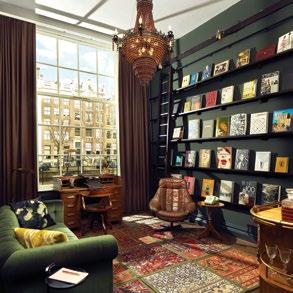
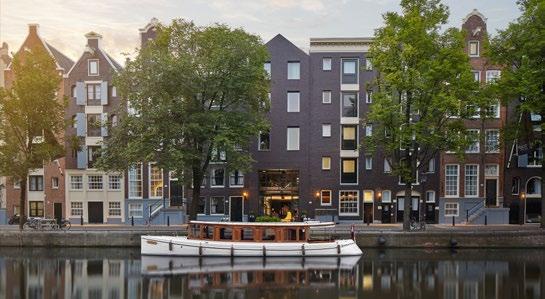

In 1960, Peter Pulitzer (the grandson of Joseph Pulitzer, the founder of the Pulitzer Prize) saw great potential in the old buildings built along the canal, bought twelve of them and gave Amsterdam its first five-star hotel. Last year, it was renovated and its classical elegance was complimented with modern style.
Simple at first glance, Jansz, however, is a high-class restaurant where the biggest focus is on high-quality ingredients. The perfectly prepared modern and classic dishes are distinguished by their Dutch accents and complemented with international aromas and tastes.

Pause – it is exceptionally pleasant to restore one’s energy in the quiet gardens and outdoor terraces of this cafe. You can see heavenly views, green oases and ravishing old buildings from where Pause is hidden. In Pause, you will be offered a great breakfast, morning coffee, light dishes and a glass of wine.
Price: 350€
Prinsengracht 315-331 www.pulitzeramsterdam.com
Dylan is a favorite place for those who value quality. The fascinating old facade reminds us of the unique and rich history, while the interior is remarkably cozy and homey. An interior garden and the gastronomic concepts contribute to the hotel’s sophistication and elitism.
There are 40 rooms and suites in Dylan. Each has a unique design and color palette. Sixteen rooms were completely renovated in 2014 and are distinguished by their impressive decor and copper overtones.
28 VOYAGER 8/2017
The restaurant VINKELES has been awarded one Michelin star and 18 Gault Millau points. It can hold up to 38 guests and has a French-style menu with modern strokes. The mood of an authentic 18th century bakery and exclusive service by the chef adds to its charm. In the hall, you are surrounded by very old ovens, and a garden view opens out from the window. The chef uses only the freshest ingredients in his seasonal menu and the aromas of the dishes are truly exquisite. Guests describe VINKELES as "fervent, subtle and refined".
ANDAZ
Amsterdam's legendary history harmonically fuses with the high-flowing energy of Hotel Andaz Amsterdam Prinsengracht. This hotel consists of 122 rooms and suites where pets are allowed. In every corner of the hotel, starting with the lifts and ending with the bathrooms, you will encounter unique works of art, including magic wall paintings, stories engraved on the wallpapers and sculptural furniture.
This hotel, located in the historic Amsterdam, is a labyrinth of sophisticated rooms. Here visitors will enjoy breathtaking views of the Prinsengracht canal, landscaped gardens and an exclusive observatory. Each of these spaces was created by the Dutch architect and designer Marcel Wanders.


Dutch cuisine traditions, high-quality local and regional ingredients and the master craftsmanship of the chef are combined in the dishes of the Blue Spoon restaurant. The dishes are

SEVEN ONE SEVEN
The High Wine concept was invented here. You probably remember its predecessor, High Tea; you can receive the same wonderful experience through the same concept but with a different drink. Every day, from 15.30 to 17.30, guests are served with four different wines and small complementing "dishes", which costs 39.50 € per person. This menu changes every season. The wines available here are from all around the world.
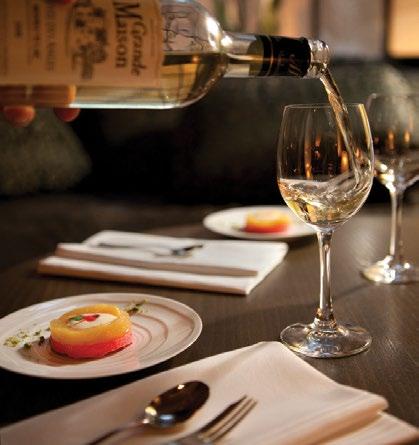
Price: 245€
Keizersgracht 384
www.dylanamsterdam.com
Hotel 717 is located on the Prinsengracht Street in the middle of a system of canals. Two enchanting suites overlook the 17th century Prinsengracht. For more elaborate views, follow the oak stairs which will lead you to seven large suites. The rooms are named after Dickens, Goethe, Mahler, Picasso and Schubert.
In the past, this building belonged to a rich sugar merchant. To emphasize his wealth, he bought the adjacent houses and created a residential complex. In the summer, you can spoil yourself in an elegant inner courtyard un-
ideally seasoned and will surprise you with their unique strokes: for instance, Dutch cod and braised lentil with bacon vinaigrette. You can watch the garden through a wall of glass. All of this is inspired by "Alice in Wonderland".
The restaurant is distinguished by its minimalistic design: porcelain blue and white colors, clean wood, black leather. On Sundays, you can enjoy a brunch that will make an unforgettable impression upon you. Fresh salads, a home style bakery, the best local fish, sausages and cheese - everything is made from fresh seasonal ingredients.
Sunday brunch is served from , 12.00 to 15.00; for adults, the price is 39 €, and for children of 6-12 years of age it is 19.50 €. Food for children up to 6 years of age is free. Prices start from 350€
Prinsengracht 587
www.amsterdamprinsengracht.andaz.hyatt.com

der the old maple tree. This place will make you feel at home with its relaxing and calm atmosphere. The hotel offers babysitters, personal shopper-advisors and in-room massage services.
Prices start from 470€
Prinsengracht 717; www.717hotel.nl/en
29 VOYAGER 8/2017
HOTELS / AMSTERDAM
scrubs and massages as well as Vichy showers for hydrotherapeutic rituals. In Akasha, you will find the only Watsu pool in Amsterdam where you can simultaneously receive hydro-treatment and meditate.
CONSERVATORIUM
Conservatorium is a hotel of rich art history. It is located in the middle of the Amsterdam Museum district and near P.C. Hooftstraat – the elite shopping district. Until 2008, it was a conservatoire (the hotel rooms still retain amazing acoustics), now owned by The Set Hotels chain. At the entrance, you will be enchanted with a combination of classic and modern details in the large space. The oak floors and furniture in the suites and rooms is set in a wonderful autumn palette. The bathrooms feature large rain showers and marble baths. For special pampering, you can visit Akasha's Holistic Recreation Center. Spa Akasha provides some of the best spa treatments in Amsterdam through an ideal combination of innovative western technologies and ancient oriental traditions. There are personal hammams for cleansing
The Tunes Bar is prominent for its ravishing decor and cozy atmosphere and will offer you delicious cocktails from all around the world. A diverse culinary experience can be seen hidden in the exotic cocktails and the complementing food.
Restaurant Taiko is considered one of the most beautiful dining spaces in Amsterdam. The design comprises stainless steel, glass and bamboo elements, all of which, combined with its dramatic mood and illumination, create a modern Japanese restaurant of impeccable style.

ingredients, all of which you can enjoy with the world's best wines (there is a choice from 850 different wines here). Les Caves De L'Europe is the priceless wine cellar of the hotel.
Here the Dutch chef will offer you novel versions of familiar Japanese dishes, for example, tiger prawns and kimchi gyoza; the sommelier will also help you to choose a suitable drink. Plan to visit it earlier on the weekdays and make sure to book in advance at the weekend.

Closed on Sundays. Fixed menu – 85-110€; à la carte menu – 70€
Prices start from 500€
Van Baerlestraat 27 www.conservatoriumhotel.com
Freddy’s Bar – one of the symbols of Amsterdam and a gathering place for local high society. There is a pianist and an array of delicious snacks.
Right by it is Freddy's Fumoir – an old-fashioned gentleman's club where you can enjoy a delicious dinner, cognac and the best cigars.

Prices start from 260€
Nieuwe Doelenstraat 2-14
DE L’EUROPE
De L'Europe, opened in 1896, instantly became the favorite hotel of the Amsterdam elite and famous people from all around the world. There are 48 rooms and 63 suites, each decorated with reproductions of Dutch painters.

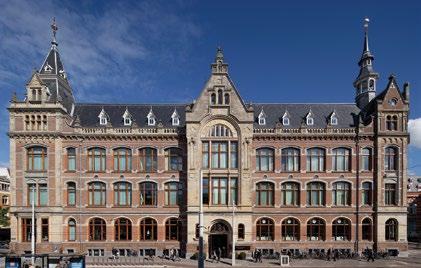
The two-Michelin-starred restaurant Bord'Eau offers you an aromatic symphony of dishes made from amazing

Promenade – on this comfortable terrace you will be offered distinguished cocktails, real London tea, a light menu and delicious cakes. At De L'Europe, midday tea (42.50 €) can be enjoyed from 15.00 to 18.00; adding Champagne will cost you 10 €.

30 VOYAGER 8/2017
THE HOXTON
This is one of the most fashionable boutique hotels in Amsterdam. It is located in the historic trading building house on the bank of the Singel canal. There are 111 rooms, each providing a beautiful view.
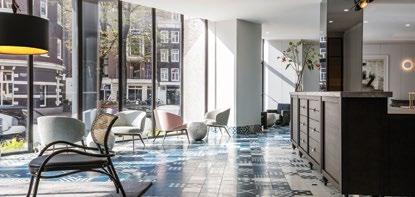



The first floor of the hotel hosts an Italian restaurant - Lotti's. The main resting space is adorned with a retractable glass roof which opens up at sunrise. In the back, you will notice plush velvet benches and armchairs. Dinner is especially comfortable here.
W HOTEL

The W Hotel has the best location in Amsterdam, with a panoramic 360-degree view of the city from the upper floor lobby, and the terrace pool overlooking the Royal Palace and Dam Square. The hotel interior, 217 rooms and 21 suites are inspired by elements of the old telephone station. W Hotel offers a variety of gastronomic choices: the menu of The Duchess restaurant is inspired by the light, sophisticated aromas of southern France and Italy.
will offer you an exceptional compatibility of tastes and impressive methods of utilizing high-quality ingredients. The food here is simultaneously simple and extravagant. The menu is very diverse, ranging from the finest steaks to various grilled vegetables.
Prices start from 250€
Herengracht 255
www.Thehoxton.Com
VOLKSHOTEL
Many cafes, restaurants, bar or clubs in Amsterdam are located in buildings that had a different function before. Many warehouses were turned into clubs and old factories transformed into the finest restaurants.
Volkshotel is still one of the most impressive among such metamorphoses; in the past, it used to be the office of the largest newspaper of the Netherlands. Each living area of this 175-room hotel is decorated with steel, concrete and wood, although some of them
In this type of menu, French Mediterranean dishes are prepared with an Italian influence. Artichoke, squash, lemon, olives, truffles, seafood, tomatoes, pasta and fresh meat – these products will be used to serve you a healthy and light meal. The Mr Porter restaurant

In Butcher, you can have delicious hamburgers – it's a mecca of Amsterdam “fast food”.
Prices start from 450€ Spuistraat 175
KIMPTON DE WITT
have been especially planned by designers and friends of the hotel owners. Hotel guests can enjoy the city’s panoramic views while taking a bath or relaxing in the sauna in the resting area on the eight floor.
One floor below is a restaurant and the Canvas club. In this constantly crowded place, the menu is affordable for everyone, but it is mostly well known that you can dance here from 11 pm until the morning.
Prices start from 69€
Wibautstraat 150, Oost, Volkshotel.Nl
If you enjoy a cheerful, lively yet somewhat strange atmosphere, this hotel is for you. The architectural trio of the Palace Quarter includes a 16th century building, which has become a 274-roomed wonder of modernism. Here you will find dark, painted wooden floors, geometrical decorative carpets, walls set in pastel tones, Pols Potten porcelain parrots “locked up” in Atelier Areti lamps, and the main element of the design - the green botanical décor of the entrance hall and the quiet interior yard with plants – the Lobby Courtyard.
Prices start from 190€
Nieuwendijk 60; www.kimptondewitthotel.com
31 VOYAGER 8/2017
HOTELS / AMSTERDAM
The restaurant will offer you seasonal Italian dishes with a Dutch influence. Make sure to try the famous Bitterballen from the bar menu.
CIEL BLEU THE CHEF’S TABLE
Hotel Okura houses several wonderful restaurants. They attract gourmands that appreciate European and Asian cuisine. The hotel’s Japanese restaurant Yamazato is a prominent place for sushi lovers. It already has one Michelin star, although Okura’s pride is the two-Michelin-star Ciel Bleu.
"For inspiration, we traditionally travel, but the style of the new generation of chefs is also very impressive. The fact is that science and innovation are part of today's kitchen."
CIEL BLEU IS LED BY TWO CHEFSONNO KOKMEIJER AND ARJAN SPEELMAN. THEY CREATE, DEVELOP AND INVENT NEW DISHES TOGETHER. THEIR PARTNERSHIP IS A RECIPE FOR SUCCESS.
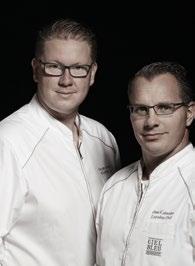
the Brouwerij 'IJ brewery in Amsterdam. We use natural resources from Holland itself. The abundance of fresh water and salt water also affects the diversity of our products. "
Amsterdam has long been a culinary destination in Europe, so what the client wants is the main question for every restaurant. Last year, Ciel Bleu completely rejected its à la carte menu and replaced it with the chef’s menu.
ENVY NEO-DUTCH CUISINE
The best chefs create the most inventive new Dutch dishes (for example, mollusks marinated in ginger beer with salty orange slices) that are consumed in an instant. You can order individual items from the menu or five or six tapas. You can try Italian ham and Dutch sausages – even those that pleasantly surprise with an aroma of lavender.
The Ciel Bleu chef interprets French cuisine. If you have access to the chef’s table (reservation required; seats 4-10 people), you will be confronted with the chef’s virtuosity. The tasting menu, which is an excellent way to understand the restaurant concept, costs 160 euros. If you want to combine the food with wine, 95 euros will be added to this amount.
"The restaurant cooperates with Dutch companies to promote local products. Obviously, we use only high-quality ingredients. For example, we have an agreement with
LA RIVE MEDITERRANEAN AROMAS
This is the real journey to the world of taste. Here you will find French and Mediterranean flavors and a unique menu that changes seasonally. Sophisticated Asian touches are evident in the
"Since the clients have chosen our restaurant for dinner, they already know what Ciel Bleu is –they want the experience we offer. They want to understand our ideas and expectations, so we make the choice ourselves."
The main concept of Ciel Bleu is the unique, unforgettable taste of the food in addition to the warmth, hospitality and high level of service.

Select an outer table when you make your reservation as the middle tables are high and the bar stools are not very comfortable. Our advice is to make a reservation a few days beforehand because on Fridays and Saturdays even the middle tables are occupied.
Lunch costs around 35 €, dinner – 45€.
Open for: lunch on Friday, Saturday and Sunday - 12.00-15.00, for dinner from Monday to Sunday - 18.00-01.00. Prinsengracht 381; www.envy.nl
SINNE CLASSIC FRENCH CUISINE
restaurant and harmonious balance of the dishes. Here are some of the amazing ingredients used: kumquat, green tomatoes, sea buckthorn – the things you see in the kitchen! The professional sommeliers of the restaurant will pair an ideal wine with the dish.
La Rive offers vegetarian food and an à la carte menu. A seven-course meal starts from 90 €. Open: dinner for Mondays and Sundays - 18.30-22.00
Professor Tulpplein 1 www.restaurantlarive.nl
You can enjoy a special dinner at the Michelin-starred restaurant Sinne. The name itself is a Swedish word that means "sensation," "character," or "mood". That is how the food is presented in this restaurant - not just to eat but to experience.


All the dishes in the exclusive three different eight-course menues are created with great eagerness. You can also see the preparation process in the open kitchen to the rear. Threecourse menu: 38.00€
Four-course menu: 47.00€

Ceintuurbaan 342 www.restaurantsinne.nl

32 VOYAGER 8/2017
LION NOIR EUROPEAN CUISINE
Dim lighting, dark wood, dark green walls with light-colored paintings and surrealistic touches make this area a unique space. This restaurant won design of the year . The same can be said for the service and menu: the staff are friendly and the chefs are not shy with their spices.
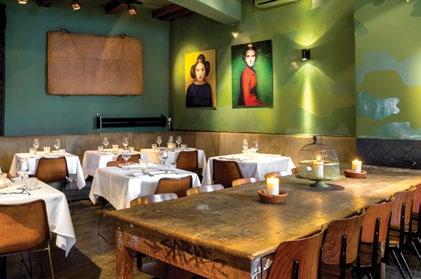
JOHANNES MEDITERRANEAN CUISINE
Straight lines and black-and-white décor indicates right away that dish presentation is important in Johannes. In June 2016, a new Chef, Roderik Goores (who used to make magic in La Rive kitchen) came to Johannes and started cooking innovative dishes with French and South European influences.
WOLF ATELIER A SPECIAL
ENVIRONMENT
You can’t pass Wolf Atelier indifferently – its huge iron and glass structure is located on the old railway bridge. It offers wonderful lunches.

The menu changes monthly and you can easily choose your desired dishes from four, five, six and seven-course menu. The latter is for gourmands who want to taste "inventive" dishes all evening.
You can also stay in the garden by the elegant rear facade or terrace during summer days.
Lunch and dinner - 44 €
Open: Monday-Friday - 12.00-14.30, 18.0022.00; Saturday-Sunday - 18.00-22.00
Reguliersdwarsstraat 28
www.lionnoir.nl
LASTAGE FRENCH KITCHEN
French methods and Dutch ingredients exceed all expectations in this tiny, 30-seat restaurant located near Amsterdam's Red Light District.


The restaurant has a Michelin star. Do not be fooled by its size – Chef Rogier van Dam reaches new heights with his innovative dishes. He uses Dutch flavors, such as mackerel and jenever. He makes his own sausages and hams.
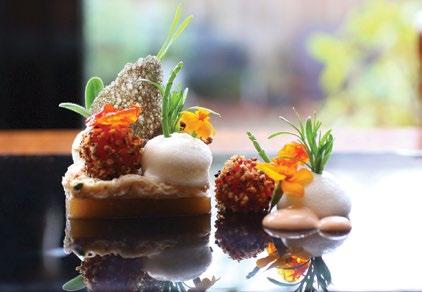
Geldersekade 29
www.restaurantlastage.nl
Every dish is paired with wine. The four-course menu costs 52.50 €; the six-course menu costs 72.50 €.
The restaurant is open every day after 17.00. Only a four-course menu can be ordered after 21.30.
Herengracht 413
The elegant and simple interior features dark gray tones with wood materials and turquoise touches. Chef Michael Woolf has been trained in award-winning restaurants in the Netherlands, hence, his dishes are impressive. Here you will be offered an à la carte dinner menu, a five-course "permanent exhibition" menu and a fifteen-dish "atelier". Six different starters are offered in the lunch menu ranging from a classic egg steak to lemon and eggplant and Israeli couscous. It constitutes an ideal lunch with a crisp Pinot Blanc and a light salad.
Closed on Sundays. Prices: fixed Menu – 45-70€; à la carte – 45€
Westerdoksplein 20
www.wolfatelier.nl
It's a rare restaurant where guests are up late on weeknights.
TOSCANINI ITALIAN CUISINE
It is quite possible that you’ll have to wait for half an hour by the bar, even if you have reserved a table a few days before. This is because no one wants to leave Toscanini.
The menu features excellent dishes and the exclusive wine list offers Italian wines from all regions of the country. Because Toscanini is very popular, the service cannot be ideal, though consider it an expression of Italian lightheartedness and enjoy the evening.
Closed for lunch hours and on Sundays. Prices: Fixed menu - 49 €; à la carte – 40€
Lindergracht 75
www.restauranttoscanini.nl
33 VOYAGER 8/2017
RESTAURANTS / AMSTERDAM
RONGASTROBAR ASIAN FUSION

Don’t worry if you start missing Asian food in Amsterdam. Rongastrobar is one of the best restaurants in the city where you can taste the most refined Asian fusion dishes. Many people know about this, so reservations are required. If you want to try your luck, you have to fight for a table: lunch from 12.0014.30, and dinner 17.30-23.00.
It is worth visiting this restaurant. There are no words to describe the tender ribs prepared with the chef’s special recipe or delicious shrimp with sweet-hot sauce. We’re not even mentioning the duck, shrimp and chicken dumplings. This place is one of the first places on any gourmand’s list in all of Amsterdam. Dinner for two including beverages will cost you 100 € on average.
Kerkstraat 23
www.rongastrobaroriental.nl
THAIS RESTAURANT LEMONLEAF THAI
This restaurant is a famous place where you can enjoy the highest-quality Thai dishes. It has a wonderful owner and staff. Booking is necessary as it is almost impossible to find a free table at the weekend.
Open: Tuesday-Saturday - 15.00-22.30, Sunday - 16.00-22.30
Plantsoenstraat 29; www.lemon-leaf.nl
FOU FOW RAMEN
AUTHENTIC JAPANESE CUISINE
After five years of life in Japan, a Chinese-Dutch film director decided to open a restaurant where everyone could taste his favorite Japanese national food. He founded his new restaurant in Jordaan.


Chicken ramen “shio" is ideally seasoned and delicious with any sauce. Pork ramen “tonkotsu” is full and delicious. The menu features vegetarian ramen “shoiutsa”, saturated with spices – a slightly exotic dish that you will not find elsewhere in Amsterdam.
Closed on Mondays.
Price: à la carte – 18€
Elandsgracht 2A www.foufow.nl
DE JAPANNER
MIDNIGHT IZAKAYA
In the city where a several-course dinner is considered normal but you can only find croquettes and kebabs at midnight, this little Japanese Izakaya loyally serves food lovers until 3 AM. When you visit De Jappaner, you feel like you are in Tokyo, or Osaka, in a crowded bar, enjoying freshly prepared gaioza, agedashi tofu or chicken katsu with a cold beer.
Closed for lunch.
Price: à la carte – 25€
Albert Cuypstraat 228 www.dejappaner.com
MOMO MODERN ASIAN CUISINE
Momo has become popular since the moment it started to offer Amsterdam modern Asian cuisine. The bar has a triangular shape and cocktails are made with Asian influences - for example, the Chinese five-spice old-fashioned drink and whiskey Choya plum wine.

Momo's menu is varied - Japanese versions of ceviche and tacos for starters followed by everlasting sushi and sashimi menu.

Larger dishes such as black cod with spicy miso, fried perch with black cherry and ginger, huge crabs, oysters and shrimps, will transport you to Asia. Here you can stop for sushi and champagne or stay for dinner.
Prices: Fixed menu – 62-72€; à la carte – 70€
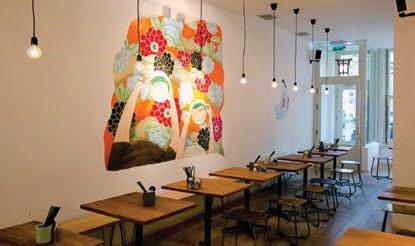
Hobbemastraat 1 www.momo-amsterdam.com
DYNASTY FUSION
This is a great place to taste lobster or duck liver prepared in an Asian style and turbot with lemongrass. You can sit in the garden in the summer. The unique dishes are made with Thai and Chinese methods. Dynasty has been open for 30 years and the royal family and politicians are frequent guests.
Open: Every day - 17.30-22.30
Reguliersdwarsstraat 30 www.restaurantdynasty.nl
34 VOYAGER 8/2017
THE SEAFOOD BAR SEAFOOD
If you love seafood, Sea Food Bar is your dream place. In this small but comfortable light atmosphere, you get the whole riches of the ocean presented on ice.

BRIDGES
FISH RESTAURANT
This restaurant offers Dutch fish with a French touch. Imagine smoked eels and Dutch vineyard escargot, or mackerel tartar with green strawberries and sesame seeds.

For those who do not love seafood, there are lots of meat and poultry dishes. Visit the bar for a light snack. Reserve tables in advance.
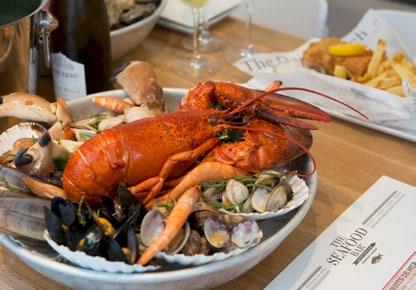
RED
STEAK AND LOBSTER
What can we say about this restaurant, which is so popular but only serves two main dishes? The sophisticated, completely green interior; the delightful and attentive staff; excellent location; and list of affordable wines determine the charm of this restaurant.


For beginners, it is practically like a visit to an aquarium, and for experienced lovers of seafood, it is a true gastronomic feast.
If you come with your friends, I recommend the seafood bar and mixed grill. This is practically a full restaurant assortment placed on three huge trays.
The restaurant also has an excellent choice of oysters. We recommend Umami #3 or Boudeuse # 4.
This bar was designed to satisfy lovers of the Burgundy lifestyle with fresh dishes made from seafood and a glass of wine for dinner. The French traditions are preserved, as evidenced by the interior of the bar. You can enjoy seasonal fruits, Spanish ceviche, Japanese tempura, shrimp and English fish and chips.
Open: Everyday - 11.00-22.00
Ferdinand Bolstraat 32
Lunch — 60€, Dinner — 65€ . Open: Monday-Saturday - 12.00-14.30; 18.30-22.30, Sunday - 18.30-22.30
Oudezijds Voorburgwal 197
VISAANDESCHELDE SEAFOOD
Notwithstanding the less impressive environment, uncomfortable location and uninteresting façade, Visaandeschelde is regarded as one of the best seafood restaurants in the city.
Its high-class seafood dishes are created by combining great craftsmanship with original ideas and special ingredients. A lightly smoked salmon, which is flavored with quinoa and eggs, is one of the most delicious dishes. The salad is made with lobster, duck liver, truffle and balsamic vinegar. Although tourists do not know
COMMENT
These features alone were not sufficient to make it so famous – it’s the perfectly delicious nature of its two distinctive main dishes - steak and lobster. Closed for Lunch. Price: à la carte – 30€ Keizersgracht 594; www.restaurantred.nl
about this place, Visaandeschelde is filled with Amsterdam natives, so you have to reserve a table in advance.
Closed on Sundays. Prices: Fixed menu – 45-65€; à la carte – 50€
Scheldeplein 4; www visaandeschelde.nl
Tipping in the Netherlands is a subjective matter. It is not calculated in exact percentages; often, the total price is rounded: the cost of EUR 2.85 is rounded to 3 €, or taxi service fee of 37.50 € will be rounded up to 40 €. Because locals use cards more frequently than cash, they verbally tell the personnel about the tip: “Make it three".
Service is more formal in restaurants and cafes and tips constitute a standard 10%. Do not tip hotel bellboys, cleaners, wardrobe staff or concierges. Moreover, the locals would like you to avoid doing that or else they will have to do the same.
35 VOYAGER 8/2017
RESTAURANTS / AMSTERDAM
D’VIJFF VLIEGHEN
DUTCH CUISINE
This is a famous place for Dutch dishes. The dining space is distributed across different rooms, one of which is painted by Rembrandt. The menu contains modern and creative interpretations of dishes made with typical Dutch ingredients.


Spuistraat 294-302, city centre
MOEDERS
DUTCH CUISINE
Homemade food is the best, but tourists in Amsterdam do not always have the opportunity to visit the locals. One of the best places in the city center is called Moeders ("Mother"). Only traditional Dutch dishes are prepared here. They offer the taste of home.
Rozengracht 251, Canal ring
WORST GASTROBAR
Worst offers homemade sausages (including lobster and blood sausages). You can taste other meats for breakfast as well like prosciutto and sun-dried culatello. Those who do not love meat are advised to go next door where Worst's subsidiary Marius is located.
Barentszstraat 171
LA LUNA STEAKHOUSE
They say the best Argentinian steak in the city is served here. The friendly staff will definitely help you choose between filet mignon, sirloin or ribeye. This restaurant is located by Amsterdam’s noisy Leidseplein, so this can be the best starting point of your nightlife. The average price of a steak is 11.00 Euro.
Open: Monday-Thursday - 15.00, Friday-Sunday from 13.00.
Lange Leidsedwarsstraat 25
GEBROEDERS HARTERING
NEO-DUTCH CUISINE
Dinner consists of a five or seven-course daily menu. Starters include local oyster and sausages. The main dishes are perfectly prepared; the ingredients are well-balanced and seasoned with spices. Main dishes include roasted pork and potato purée and wonderfult fillet with a fine anchovy butter.
In contrast to similar restaurants, you may order a main dish only.
CHOUX CREATIVE, INDUSTRIAL DESIGN
This restaurant recently opened in Amsterdam and is one of the most popular. Its owners worked at two successful restaurants, Foyer and Repere, before they launched Choux. Choux's threecourse menu is constantly changing. It includes a vegetable, fish and meat course. The kitchen is not afraid to experiment with textures and aromas and offers delicious, skillful dishes that come in harmony with the industrial design.
At night, Choux is filled with energy; all the tables are busy and the dining hall is noisy. I advise you to reserve a table in advance.
Closed on Mondays at dinner hours, Saturday - for lunch and Sunday - all day. Prices: Fixed menu – 33-55€



De Ruijterkade 128 www.choux.nl
CAFÉ DAALDER
SOPHISTICATED AND LIGHT
Daalder offers original European cuisine. Contrary to modern, new-wave Dutch restaurants, there is no menu here. Chefs prepare alternate menus and guest can choose from four to seven dishes.
Imagine a great tomato sorbet with parmesan or seared veal with truffle risotto and you’ll realize that this is a high "caliber" restaurant in Europe. The restaurant, located in a former bar in the Jordaan, has large windows, wooden walls and art-deco style touches. Daalder is a quiet place where you can read a book. Everything changes at dinnertime so do not forget to make a reservation.
Closed for lunch on Saturdays.
Price: Set-menu – 30-67€
Lindengracht 90
www.daalderamsterdam.nl
36 VOYAGER 8/2017
Closed for lunch. Prices: main menu –50-80€; à la carte – 45€
Paperstraat 10 www.gebr-hartering.nl
CAFÉ PANACHE DAZZLING BISTRO AND BAR
This bright restaurant opened in a former market. It hides behind a simple façade. The main dishes are lobster and entrecote, while starters include white pea soup and eggs, seared mackerel, fluffy rice and miso. Visit the huge bar for drinks. Closed for lunch. Prices: menu - 30 €; à la carte menu - 35 €
Ten Katestraat 117; www.cafepanache.nl
LA PERLA
PIZZA BAKED ON FIREWOOD
Its Italian ingredients, hot oven and delicious pizza makes La Perla one of the best pizzerias in city. It is a favorite place for locals in Jordaan. It's almost impossible to have dinner at peak time if you do not reserve a table in advance. Price: à la carte – 25€


Tweede Tuindwarsstraat 14
www.pizzaperla.nl
SPAGHETTERIA
PASTA-BAR
Spaghetteria is a place that you won’t just stumble upon – it is located on the corner of a residential street. You have to know the exact address. This is the best pasta bar in Amsterdam. There are six different types of pasta in the seasonal variable menu: two vegetarian, two fish and two meat ragout. Dishes come with a salad and one dessert, beer and coffee (tiramisu, Peroni, espresso). Price: à la carte – 22€
Jan Hazenstraat 32
WYERS AMERICAN CUISINE

Some foods that calm us down and comfort us on a subconscious level –dishes that not only provide us with a divine taste but also spiritual calmness in the body.
Chef Sam DeMarco is pleased to offer such dishes to tired and hungry tourists and Amsterdam natives in Wyres. He enjoyed a stellar career as a chef in New York.
"I'm making tasty American food in Europe. A great choice of ingredients is available here. The pork is as good as it gets, and vegetables and seafood are amazing. This is not surprising for us in America, but I still discover a lot here. For example, every time I come across salted herring, I eat it”.
In addition to excellent quality food, Wyers has another extraordinary feature: you can enjoy breakfast, brunch, lunch and dinner.
Wyers has such a vast choice of starters that you may even decline dinner but I still recommend that you continue and try more serious dishes than chef’s sausages, foie grass and pates.
Roasted Dutch lamb is the chef’s specialty that impresses everybody. Chicken "Puttanesca" is another pearl. Smoked eel gives it an exquisite taste. The Little Monster Burger comes with Gouda cheese and DeMarco’s special sauce, bringing tears to the eyes of even the most hungry clients.
Clients visit Wyers for delicious dishes that taste like they were cooked by a Sicilian grandmother and, most importantly, they always come back.
Breakfast daily: 6.30-10.30
Lunch - Monday - Friday: 11.30-14.30
Brunch - Saturday-Sunday: 10.0014.30
Dinner - Sunday - Thursday: 17.0022.00; Friday-Saturday: 17.00-23.00

Nieuwendijk 60
cases; and burgerlijk, or bourgeois. The Butcher is not involved in this linguistic whirlwind; its burgers and fries constitute ideal intermediates between fast food and elite foods. Its architecture is also a nod to traditional butchers – the figure of a cow stands in the window.
THE BUTCHER HAMBURGERS
Amsterdam is gradually becoming the world’s capital of hamburgers. Burgers are enjoyed with humor. The word burger means citizen in Dutch and they make the most of it. For example, some hamburgers are named: burgermyster, which means mayor in Dutch; burger zaken, which means civil
Butcher's burgers are so tasty and distinguished that they now have branches in Berlin and Ibiza.


Price: à la carte – 15€
Albert Cuypstraat 129 www.the-butcher.com
37 VOYAGER 8/2017
RESTAURANTS / AMSTERDAM
DE YSBREEKER
LUNCH IN A GARDEN
Ysbreeker means icebreaker, and the cafe is named after the ship that stood at the shore of the Amstel river until 1860, broke ice in the winter and supplied the city with clean water. The menu includes a never-ending list of dishes and drinks; the prices are affordable; the staff are perfectly polite. The local garden is an ideal place to get away from the noise of the city.
Weesperzijde 23
www.deysbreeker.nl
DE PLANTAGE LUNCH
Hidden among beautiful 19th century gardens in the historic center of Amsterdam, this place is a well- balanced combination of calm and light informality. A modern café and traditional restaurant are located here. The surrounding old maple trees create a magical atmosphere.


In the summer, the restaurant's doors are opened and guests have their dinners on the terrace and enjoy the panoramic views. The chef's menu is modern and traditional at the same time; his inspiration comes from the rich cultures of southern Europe, northern Africa and the Levant region.
Open: Monday-Friday - 09.00-01.00; Saturday and Sunday - 10.00-01.00
Plantage Kerklaan 36
BUFFET VAN ODDETTE AN ELITE LUNCH
Famous people are here constantly; the Parisian-style table layout guarantees that you will accidently rub shoulders with them. The bread, meat and coffee here are from the best Dutch brands, while the diversity of the menu, which is regularly updated, keeps the café constantly active.

Prinsengracht 598
www.buffet-amsterdam.nl
BAR SPEK
ALL-DAY LUNCH
There is true freedom here - you can have a meal with your kids, meet friends, or simply sit by a table with your laptop and work. The menu is di-
GARTINE LOCAVORE PARADISE FOR LUNCH

The owners of this cafe spend a lot of time in the Beemster garden, where they delicately grow and select each of the ingredients for Gartine's small seasonal menus and even pick the flowers to decorate the tables themselves. Picture a rabbit roulette with black currant and rose water sauce with hazelnut-saturated bread and tea from garden herbs. The local aromatic sandwiches and cakes are the best in the city, so you should book a table several weeks in advance. Closed Monday and Tuesday.
Taksteeg 7 BG; www.gartine.nl
BRANDSTOF
LUNCH ON A TERRACE
This bar is located between Centrum, Jordaan and Oud-West, attracting young and energetic clients from all three districts. Its name means ‘fuel’ in Dutch, which is very ironic as the bar is located directly in front of the fire department.
verse, void of clichés and formalitiesyou can order a breakfast even at three in the afternoon or have lunch at ten in the evening. You can enjoy the sun on a terrace by the canal and watch how the bridges open.
Admiraal de Ruijterweg 1 www.barspek.nl
The menu is simple and lively. It is an ideal place for morning and afternoon snacks. On warm days, the terrace is filled with people and attracts bypassers tired of shopping in Rozengracht's boutique shops.



Marnixstraat 341
www.bar-brandstof.nl
38 VOYAGER 8/2017
THE MENU IS DIVERSE, VOID OF CLICHÉS AND FORMALITIES.
DE REIGER
TRADITIONAL CAFE
This old-fashioned café offers the best lunches; it has a high-rise space, distinguished by its redwood bar counter art-deco style lamps and old paintings. De Reiger dates back to the time Jordaan was a working-class district. Although the clients have changed, the atmosphere is still “stuck” in the past of this city district. The menus that change daily are written with chalk on the wall. Here you can enjoy lamb with rosemary sauce or tart tatin. I recommend that you visit it earlier in the day as tables cannot be booked. Dinner costs 38 €. Open: Tuesday-Friday - 17.00-22.30; Saturday - 12.00-16.00, 18.00-22.30; Sunday - 16.00-22.30
Nieuwe Leliestraat 34 www.dereigeramsterdam.nl
HET BLAUWE THEEHUIS
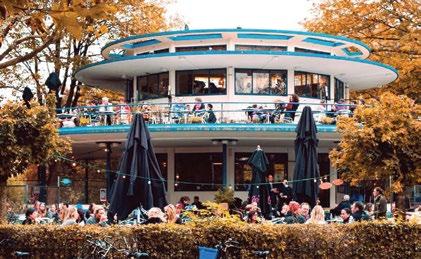
A CULT PARK-PAVILION
A garden hidden in Vondelpark, this Bauhaus style park-pavilion, created using British landscape design traditions, is a real magnet for running "athletes" or parents walking their kids in a stroller. The Tea House, built by the Baanders brothers in 1937, offers a wonderful and simple lunch menu that you can enjoy in one of its 700 glittering aluminum chairs.
Vondelpark 5 ; www.blauwetheehuis.nl
HOPPA! BEER BREWERY

This café was formerly a nightclub, and much earlier than that – in 1662 – was a brewery. The tavern, which opened in 2015, has gone back to its to its historic function, though the design is not old-fashioned. Created by Concrete Studio from Amsterdam, it is a contrast to the city’s numerous historic dark brown breweries; its white walls are lined with two-liter Jenever jugs, the ceiling is made of fresco materials, the tables are made from glimmering jatoba wood, and an orange line runs throughout the entire decor. Here you can enjoy serious local beer in a not-so-serious environment.


HEINEKEN EXPERIENCE
The Heineken Experience is located in the first "Heineken" brewery in the center of Amsterdam. In 1988, the brewery was closed as it could not meet the increased demand. Since 1991, it has been open to visitors from all around the world.
BROUWERIJ HET IJ BEER BREWERY

WORKSHOP
There are eight windmills remaining in Amsterdam. The one that is easiest to find is Gooyer, which is located in the Oostelijke Eilanden (East Islands) district. This is no ordinary windmill. A beautiful view opens from here and below you will find Brouwerij't Ij – a small, award-winning brewery with a wide open air terrace. Guests can sample the drinks on the terrace during a 30-minute tasting tour. The brewery produces a lot of different varieties of beer. You can find them in many bars around Amsterdam, though they have a distinctive taste under the windmill.
Funenkade 7; www.brouwerijhetij.nl

The Heineken Experience tour is an independent interactive journey in this brand’s world. In the center, you will learn about the history of the Heineken Company, the four natural ingredients of beer, and the beer-brewing process. You will be able to see the tasting hall. At the end of the tour, you will enjoy two types of beer and will learn how to distinguish an ideal "Heineken". Adolescents under the age of 18 should be accompanied by an adult as under Dutch law and Heineken's policy, they are not allowed to have alcoholic beverages.
Open every day, throughout the year: Monday - Thursday - 10.30-19.30; Friday-Sunday10.30-21.00
Please keep in mind that ticket sales stop two hours before the museum closes.
Price: Adults - 18 €
(VIP Tour - 49 €), children from 12 to 18 years - 12.50 €; Children under 12 years of age can enter free of charge.
39 VOYAGER 8/2017
CAFES / BEER BREWERY / AMSTERDAM
Singel 460; www.hoppa.amsterdam/nl
BRUINE KROEG
Traditional brown cafes are known for their dark wooden interiors and smoky walls. It is here that you feel exactly what the Dutch word Gezellig means: a feeling of cozyness when people feel at home.


CAFÉ AMERICAIN
GRAND CAFE
CAFÉ TABAC
CULT CAFE
This seventeenth century building, located at the crossing of two canals in one of the most beautiful places in the city, is the true central junction of Amsterdam. Since 1996, it has simply been called Tabac.
Brown cafes are an integral part of Dutch culture - a place where people can drink after work and spend time with their friends over the holidays. In most of them, guests can order beer and wine as well as jenever. In these cafés, as a rule, you can pay only in cash.

Each of the brown cafes has its own charm and distinct features. Somesuch as Café Hoppe (Spui 18-20) and Café Chris (Bloemstraat 42) - have existed since the 1600s; one part of Cafe Hoppe is even currently recognized as a national monument. Other brown cafes are known for other features:

De Dokter (Rozenboomsteeg 4) is the city's smallest cafe, and De Sluyswacht (Jodenbreestraat 1) is more bent over than the Tower of Pisa . If you want to fully experience Amsterdam, you should visit at least one brown cafe.
Café Americain, located at the Amsterdam American Hotel, is the oldest of the large cafes in Netherlands having opened in 1902. The building is distinguished by touches of modern art interior, old stained-glass windows, huge antique chandeliers and impressive frescoes. Many magazines and newspapers are placed on the antique tables. The large terrace is the perfect place to enjoy the summer sunshine.
Leidsekade 97
IN THE GOLDEN AGE OF THE NETHERLANDS, AMSTERDAM WAS THE MOST IMPORTANT PORT CITY IN EUROPE WHERE TEA AND COFFEE WERE TRADED. PERHAPS THE DUTCH’S DISTINCTIVE LOVE OF COFFEE ORIGINATED IN THAT PERIOD. MAKE SURE TO TRY KOFFIE VERKEERD, A LOCAL COFFEE WITH MILK, WHICH WILL REMIND YOU OF A LATTE.
CAFÉ DE JAREN
GRAND CAFE
De Jaren is more attractive to young people. Located in a former bank building, the interior is full of light, the floor is made of mosaics, the walls are lined with contemporary art pieces, and an impressive bar offers an amazing choice of cocktails. The main charm of this place is its magnificent terrace overlooking the Amstel River.
Nieuwe Doelenstraat 20
For young people, Tabac is a democratic and affordable café where hot snacks can be washed down with cold beer. It is also known for the fact that King Willem’s girlfriend, who is currently known as Queen Maxima, used to visit this place in 2000.

A cafe is placed at the end of the bar; instead of cocktails you will be served Indonesian cuisine here. In the winter, guests sit around candlelit tables and gaze at the canals through the windows, and in the summer pillows are set outside so that the guests can enjoy watching the ships from here.
Brouwersgracht 101 www.cafetabac.eu
CAFÉ PAPENEILAND HISTORIC CAFE
This unique café has stood in the same location near the Prinsengracht Canal for hundreds of years, with walls almost covered in cobwebs.
There is no better place in Amsterdam to have a glass of beer, chased down with a piece of unforgettable Dutch apple pie. The pie costs 4 €.
Prinsengracht 2, papeneiland.nl.
40 VOYAGER 8/2017
ONE PART OF CAFE HOPPE IS CURRENTLY RECOGNIZED AS A NATIONAL MONUMENT. AS SOON AS YOU ENTER THESE HISTORIC BUILDINGS, YOU FEEL THAT YOU HAVE TRAVELLED INTO THE PAST.
CT COFFEE & COCONUTS COFFEE
As soon as you have your first gulp of coffee, you will know that it is of the best quality. Make sure to try it with coconut.
The CT restaurant is right here as well. Light-colored floors, white walls with red-brick elements and country-style furniture complement each other in a light and natural interior. Green plants, comfortable pillows and long tables create a cozy atmosphere. It is known for its nutritious, local and organic food.
Ceintuurbaan 282-284 www.coffeeandcoconuts.com
SCANDINAVIAN EMBASSY
COFFEE
SE offers a choice of delicious coffees with healthy breakfasts, lunches and dinners. SE is a kind of experimental area where they constantly improve the taste and preparation methods of their coffee. The menu offers healthy, delicious, real Scandinavian dishes.
There are many surprises here. You can discover rare and exotic Swedish dishes, taste the best cinnamon baked goods in the city and try food "inspired" by coffee.
Sarphatipark 34
www.scandinavianembassy.nl
TOKI COFFEE
This new Scandinavian-Japanese café will fascinate you with its design accents. Placed at the corner of two quite streets in the Jordaan, near Haarlemmerdijk, this café is the ideal place for breakfast one Saturday morning.


Toki is known for its baked goods. You can also enjoy their petit gateaux. It is as though this cafe is trying to convey a Japanese mood – the feeling of spending time in the calm, of enjoying oneself and relaxing. Many people come here to drink tea before beginning a difficult day; some come at the end of a day to relax over a beer.
Binnen Dommersstraat 15 www.tokiho.amsterdam
ALBERT CUYP MARKET
Amsterdam's most popular market is stretched across a whole street. Everything is sold here, from tropical fruits and fish to books and electric appliances. You can buy real Dutch strawberries, tulips, clothes, bicycle locks or computer accessories - basically, whatever you need and for a very cheap price. Albert Cuyp Market is the largest open market in Europe.
Albert Cuypstraat
WATERLOOPLEIN FLEA MARKET

This flea market is not only a place for trade space but a peculiar place for alternative gatherings; youngsters with dreadlocks and knitted hats walk around the area. You can cheaply buy Indian garments and unusual souvenirs here. You can also discover old vinyls and photographs, vintage clothing, old glasses, etc. There are old book stands lined on Amstel’s riverbank and second-hand clothes for sale in a square in front of the church - you can visit this market just for entertainment. The market operates every day except Sunday.
Waterlooplein 2
NOORDERMARKT
This place is a mixture of rags, antiques and an ecological open market. Musicians play a diverse repertoire in a small square - from Mozart to the soundtrack from Amelie. The market is divided into two parts: food and items.
PUCCINI BOMBONI

Belgians have always held the foremost position in the global production of bonbon-type sweets, but since 1988, Puccini has offered Amsterdam residents creative and non-traditional bonbons. This chocolate boutique is in fact a piece of art, and the chocolate pyramids constructed in the window displays and on the shop counters will leave nobody indifferent. You will see numerous other candies lined on the boutique shelves besides the bonbons.Open: 09.00-18.00; Sunday and Monday - 12.00-18.00
Staalstraat 17 www.puccinibomboni.com
In the first part, they sell organic products, freshly baked bread, live oysters and cheese; you can try bread slices dipped in olive oil and delicious cream cheese. In the second part, you will make interesting and surprising discoveries: Persian carpets, Indian feathers, hand-woven sweaters, designer jackets. The market is held only on Mondays and Saturdays.
Herenstraat 39
DE HALLEN
This former Tram depot has become one of the most dynamic places in the city with its restaurants, shops, cinemas, hotel and foodhallen - Amsterdam's first permanent open food market. The local products are laid out on more than twenty counters and everything is so attractive that it is hard to resist temptation. But if the market noise and commotion is not something you enjoy, definitely dine at the Meat West restaurant, or French-style restaurant Halte 3.
De Hallen, West, dehallen-amsterdam.nl
41 VOYAGER 8/2017
CAFES / MARKETS / AMSTERDAM
COMMENT
HIDING IN PLAIN SIGHT CREATIVE COCKTAILS
HPS, which has quickly become known for its great drinks, is a lounge bar that was previously a brown café and is now decorated in 1920s style. The place is filled with combinations of classic aromas and, at the same time, proudly offers some original experiments.





We recommend: Mango Crusta – a celebration of summer aromas: spiced rum, aged rum, lightness of creole shrubb, clement creole shrub (a liqueur made of fruit, sugar and vinegar), mango syrup and lime. Make sure to make a reservation in advance.
Rapenburg 18; CENTRUM
TALES & SPIRITS SPEAKEASY
The elegant and comfortable interior of Tales & Spirits is home to multi award-winning mixologists. We recommend: the General Lee cocktail, a love story involving Knob Creek Rye, Amaretto and Dom Benedictine’s bitter flavor. The cocktails are accompanied by themed tunes.
Lijnbaanssteeg 5-7; CENTRUM
BAR BUKOWSKI HIPSTER
Bar Bukowski, open from morning until evening, is a popular gathering place for locals. In the warm summer months, its sunny terrace attracts a lot of guests – there is nothing like sipping drinks and eating meals at the picnic tables here. Later, in the afternoon, friends gather after the working day. From the café, you can go straight to Henry's Bar, a fashionable cocktail bar open only on Fridays and Saturdays and known for its delicious cocktails.
Oosterpark 10-11, OOST
DOOR 74 SPEAKEASY
Hidden behind a plain door, this bar, which must be booked by phone, has emerged as an epicentre for those who like to try delicious and distinctive drinks. Talented bartenders create new cocktail recipes on a daily basis. We recommend: Searching for Black Matter, which is a mixture of Botran Solera rum, marzipan syrup and the bitterish taste of dried peaches.
Reguliersdwarsstraat 74; CENTRUM
STRUIK FAVORITE OF THE LOCALS
Struik seems like a regular bar, but time flies here quickly and merrily. You won’t find an old-style brown space or unique design, but Struik's free environment attracts local youth like a magnet. The attitude of the bar owner and staff creates a special atmosphere. Here you can hear hip-hop, punk, rock and 1980s pop until very late. The bartenders sing along to songs while serving you, enquiring if you want to sing with them. There are tables for smokers outside. In short, true freedom exists here.
Rozengracht 160; JORDAAN
SUZY WONG COCKTAIL BAR, LOUNGE AND CLUB
The Hollywood version of 1950s Hong Kong is the inspiration for this cocktail bar and lounge. The red walls and beautifully lit bamboo decor make for an exotic environment, while the dance floor is reflected in ceiling mirrors, creating a slightly narcissistic vibe. While the DJ plays hip-hop, R&B and low-tempo house music, the bartenders make cocktails from fruit, including watermelon and coconut mojitos and sour melon cocktails. They also serve Grey Goose by the bottle, if you are brave enough.
Korte Leidsedwarsstraat 45; CENTRUM ; www.suzy-wong.nl
POREM SPEAKEASY
Porem focuses on quality cocktails that are excellent with sea food, sushi and sashimi. It is an elegant place, replicating the old-school style of cocktail making with a modern accent.

We recommend: Sergio Ramos Gin Fizz – a unique combination of gin, almond milk, Perdro Ximenez sherry, orange blossom water and lemon.
Geldersekade 17; CENTRUM
42 VOYAGER 8/2017
EIJLDERS INTELLECTUALS
This bar is distinguished by its ideal atmosphere and rich history. Since its foundation in 1940, it has been a favorite spot for students, writers, thinkers, and artists. Eijders continues to host poetry evenings, classical music concerts and local community meetings.
Eijlders is close to the Stadsschouwburg and DeLaMar theaters, so this is an ideal place for discussing a play after the performance.
If you sit by the outer tables, you can watch the locals trying to get into the Jimmy Woo club.
Korte Leidsedwarsstraat 47 CENTRUM www.cafeeijlders.com
PULITZER’S BAR LITERARY NEST
Pulitzer's Bar has always had a high status in the eyes of the Canal district elite. This space is more like a hotel foyer bar – comfortable and quiet. Overlooking the canal, it is an ideal place for cocktails and conversation. In this distinguished Art-Deco style bar, dark green wooden walls and vintage bottles inconspicuously oppose the Scandinavian design so popular in Amsterdam. You should visit Pulitzer's late in the afternoon or evening and try their special carbonated G & T
IN ‘T AEPJEN TRAVELING IN THE PAST
Before the typical Amsterdam brick houses appeared along the canals, the buildings were constructed of wood. Only two buildings survived the terrible fire of 1452. The 'T Aepjen bar is one of them. With warm lighting and countless excellently decorated bottles, glasses and items uniquely characteristic of this place, it uncompromisingly expresses that it does not belong to the modern times. Due to the color palette, design and lighting, a photo taken in this bar will resemble a renaissance painting. Wonderful drinks are one of the main reasons for visiting this place - Jenever, Belgian beer and a glass of wine. On Thursdays, you'll find yourself entangled
or Pulitzer Old Fashioned. You will meet very gallant people here, gentlemen dressed in cardigans and sport shoes.
Keizersgracht 234; CANAL ; www.Pulitzersbar.nl
THE HOXTON
HOTEL-BAR
To get a dose of modern British luster, you should visit the bar situated above The Hoxton. Make yourself comfortable in a leather armchair or velvet throne and sip a delicious drink. They make In Bloom, a tasty cocktail made with gin, lemon, and purple and pink maraschino.
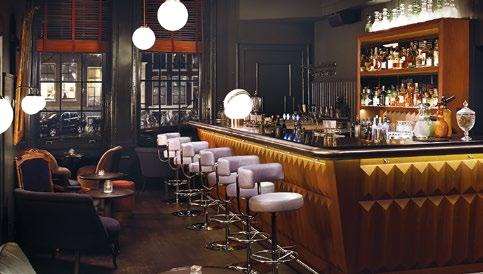


Herengracht 255 CANAL
THE COLLEGE HOTEL
HOTEL-BAR
The College Hotel is located in a former school. The hotel bar promises a memorable night with its international charm, elegant interior, convenient location and menu full of great Dutch snacks.

Roelof Hartstraat 1 OLD SOUTH
THE DYLAN
HOTEL-BAR
in blues and swing rhythms performed by a quartet of gray-haired gentleman playing banjo, trumpets, and double bass.
Zeedijk 1, CENTRUM
TWENTY THIRD BAR
HOTEL-BAR
In the summer, young people gather in a this bar in the interior yard of Hotel Dylan to sip drinks. The menu is updated regularly.
Try the halibut prepared with grapefruit, cucumber and Vadouvan mayonnaise, or simply oysters with a (not at all cheap) glass of wine.
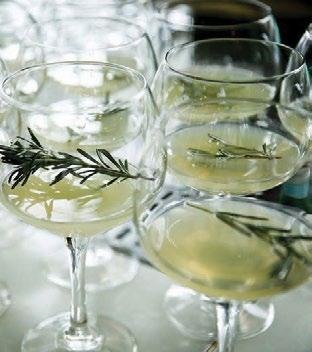
Keizersgracht 384 CANAL
Hotel Okura's bar offers a panoramic view of the city from the highest point of Amsterdam, a refined light meal menu from the Ciel Bleu restaurant and champagne along with classic cocktails.
We recommend: the classic and elegant Kir Royale, Crème de Cassis and Besserat de Bellefon champagne mix.
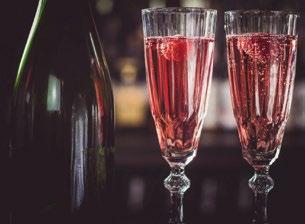
Ferdinand
333 OLD SOUTH
Bolstraat
43 VOYAGER 8/2017
BARS / AMSTERDAM
DE SCHOOL MULTIFUNCTION SPACE
This space unites the best night club in the city, an excellent restaurant and a café-bar. De School is a real chameleon that changes constantly. You can spend all of Friday night there, then have breakfast in the café, come back in the evening and have dinner in the restaurant, and come back for lunch on Sunday. A big terrace provides space where you can hang out any time of day. The DS yard is a green oasis on the territory of a former technical school.
Doctor Jan van Breemenstraat 1, DE BAARSJES ; www.deschoolamsterdam.nl
PARADISO LIVE MUSIC
Paradiso is a real temple of live music, located in a former church. Its atmosphere and acoustics are some of the best in the city.
The former cathedral became the center of music in the mid-60s and still remains the most memorable place for live music halls in Amsterdam. It unites rock, pop and other genres.
RADION UNDERGROUND-EVENINGS
In 2015, when Trouw was closed, Amsterdam club life had a huge gap. Many new clubs were opened in the following months, including the largest and most widely recognized Radion. This club retains the underground atmosphere because it is located away from the city center. It is a former lecture hall and it is inclined, resulting in a completely unusual dancefloor.




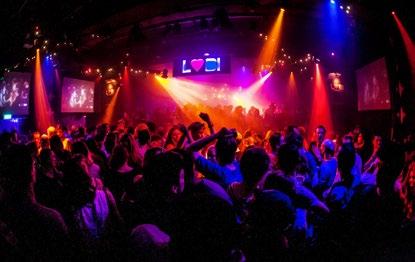
CLUB NYX MULTIFUNCTION SPACE
This club is located in the center of the street that played a key role in LGBT culture and nightlife in the 1960s. Club NYX continues this tradition. The multifunctional space is reminiscent of a labyrinth with lots of bars, rooms for smokers and the main dance floor in the middle.
The walls are painted with graffiti, the space is illuminated by UV-lamps and wall panels, and the dance floor looks like a scene from a film about psychedelic dystopia. The people, music and atmosphere are constantly changing, but you can enjoy it in any case.
Reguliersdwarsstraat 42 CANAL DISTRICT; www.clubnyx.nl
The main hall of Paradiso is grandiose - stained glass windows and inner balconies offer wonderful views. There are places to sit on the first balcony. The small room on the upper floor is intended for indie groups and novice performers. There is a cafe in the basement where events are held as well.
Weteringschans 6-8; CENTRUM www.paradiso.nl
DISCO DOLLY DANCE MUSIC
Dark, narrow, smoky and full of people – Disco Dolly is not for everyone. Despite that, a lot of people are here at midnight. This place is meant for your last dance - a tiny box that is in motion up to 5 am
In spite of everything, the Disco Dolly magnet attracts people who want to drink alcohol and move around after 1 am during the week. The environment is minimally illuminated; DJs play energetic music - a mixture of soul, punk, and disco. Guests do not want to stop dancing.
Handboogstraat 11; CENTRUM www.discodolly.nl
While other famous clubs - De School and De Marktkantine – host world-famous DJs, Radion has its own niche with local and more underground European house and techno evenings. The club has a 24-hour license to sell drinks, so on Friday and Saturday parties last up to eight o'clock in the morning.
Louwesweg 1; Slotervaart
www.radionamsterdam.nl
SUGARFACTORY LIVE MUSIC
Sugarfactory is a dynamic, free and creative space where club, live music and theater co-exist. Famous local and foreign DJs are constantly playing in the club. Live music is performed as well. With its huge space and velvet drapes, Sugarfactory is a multifunctional venue. Its main hall serves as a theater and does not host any noisy rock concerts or club nights.
Lijnbaansgracht 238; CENTRUM
www.sugarfactory.nl
44 VOYAGER 8/2017
JIMMY WOO FACECONTROL
Jimmy Woo is one of the Amsterdam clubs that has an international and distinctive style: none of the famous guests leave the city without visiting this club. Jimmy Woo is two-stories high. It boasts an impressive décor and excellent club program. The top floor houses an Asian style bar - Indonesian wooden tables and Japanese screens. The first floor has another bar and dance floor. The low ceiling has 11,700 light fixtures, which flicker to the rhythm of the music. Warning – this club has particularly strict face control. Not everyone can get inside, though the criteria for access are totally incomprehensible.
Korte Leidsedwarsstraat 18; CENTRUM www.jimmywoo.com
ESCAPE
MELKWEG LIVE MUSIC
Melkweg is a key player in the modern music, art and cultural scene in Amsterdam. It hosts a lot of concerts, club evenings, movie shows and cultural events.

DE MARKTKANTINE BEST VIEWS
This building was built in 1936 by market traders, was turned it into a theater in the 1950s, and into a nightclub in the mid-1990s. Then everyone left and forgot about it, until it was reopened in 2014. This is a club that can accommodate up to 1,200 people and is always full. The acoustics are superb, the atmosphere - magic. The club's ceiling is enormously high, with balconies offering guests views of the city. The club itself shines with golden lighting.
Ja n van Galenstraat 6; OLD WEST www.marktkantine.nl
DANCE MUSIC
Escape is one of the biggest and most popular nightclubs in Amsterdam. It is an eternally important member of Amsterdam's club life. The club always cooperates with young people and constantly offers all the popular genres of dance music: House, Electric, Techno and Pop. Famous DJs such as Tiësto, David Guetta, Paul van Dyk, Kevin Saunderson and Todd Terry perform here.

Rembrandtplein is the most famous area in Amsterdam for fun and evening walks, and Escape is the cherry on top with its night dance program. Escape also has a DeLux bar, cafe, studio and lounge - a small space where a quiet and intimate atmosphere prevails.


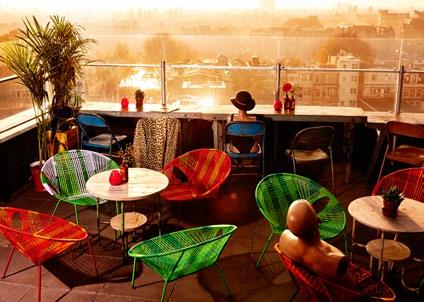
Rembrandtplein 11; AMSTEL RIVER www.escape.nl
That is why it has five different halls, and that's why every weekend Melkweg's door is open for a lot of people who come to attend various programs. Weeknight evenings are completely different from each other. Sometimes it is a rock evening, sometimes hiphop, reggae or techno, and guests are always thrilled.
Despite the fact that this environment, unlike Paradiso, is architecturally less impressive, it is definitely worth spending the night there.
Lijnbaansgracht 234A; CENTRUM www.melkweg.nl
CANVAS NIGHT CLUB
Club Canvas is a good example of Amsterdam's nightlife. Located on the ground floor of a seven-story building, it offers lunch and dinner to the guests of the Volkshotel hotel, and in the evening becomes one of the most delicious restaurants in the city. On
Saturday and Sunday evenings, when the guests are done with their dinner, the staff move the tables away so that by eleven it turns into a nightclub. More people arrive at this time; they pay extra money to get into the club and those who have stayed after dinner dance for free.
A glass wall surrounds you from every side, so you can enjoy amazing views of the city. Many wonderful underground artists play house and techno. The music stops at four o'clock in the morning but guests can enjoy cocktails until seven o'clock in the basement bar.
Wibautstraat 150; OOSTERPARK
45 VOYAGER 8/2017
CLUBS / AMSTERDAM
www.volkshotel.nl/fr/canvas/
The main address for retail therapy in Amsterdam is DE NEGEN STRAATJES, or "9 Streets" – a combination of unusually crowded streets between the LEIDSESTRAAT and JORDANAN regions. Here you will find more than 200 stores, as well as independent boutiques and vintage and specialty shops where you buy everything from designer dresses to handmade cosmetics.

P.C. HOOFTSTRAAT - This street is the best place for fashion houses. It houses great representatives of fashion stores: Hugo Boss, D & G, Max Mara, Ralph Lauren, Hermes, Gucci and more.
UTRECHTSESTRAAT – A small trading section with an interesting range of outlets. This charming street is full of trendy, conceptual shops and precious boutiques.
If you want to be introduced to Dutch designers, visit VAN BAERLESTRAAT. Here you will find new and famous names from the Kingdom of the Netherlands, such as The People of the Labyrinth and Fred de la Bretonierère.
DE BIJENKORF
Dam Square is one of the biggest and most popular shopping centers.
Widespread international brands are located here Maison Margiela Mm6, Dior, Celine, Armani Collezioni, Alexander McQueen, Bottega Veneta, Gucci and many others, among them Balenciaga, whose creative director is Georgian Demna Gvasalia.
Dam 1
BANANATIME
Bananatime’s unisex-branded clothes are so fashionable in Amsterdam's cosmopolitan streets that they do not leave anyone indifferent. Its sophisticated clothes are made of durable, lightweight silk; you can find many stores in Amsterdam, including in De Bijenkorf. www.bananatime.com
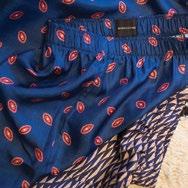
SUKHA-AMSTERDAM
Sukha means "the sweetness of life" in Sanskrit – the philosophical language of Buddhist and Hindi texts. "The main essence of beautiful clothes is not in the tag, but in humans who express their spirit and heart!" The items presented here are of local production and are mostly unisex.
Haarlemmerstraat 110
THE BEETHOVENSTRAAT is located in the prestigious Zuid District, which offers clothes, shoes, accessories, perfumes and great confectionery. This is an ideal place for luxury shopping.
LUUKS
This shop is for those who love shoes. It features local and well-known international brands such as A.F. Vandevorst and Dries Van Noten from Belgium, Greek Mediterranean Sandals, Officine Creative Italy, Sports & Elegant Golden Goose, Premiata and many other popular shoe manufacturers.
Jacob Obrechtstraat 12
BASKET
This is the most outstanding store of free-style clothing in Amsterdam. In addition to APC and Alexander Vang, Basket features international brands that are part of modern lifestyle.
Elandsgracht 57-59, JORDAAN
VAN RAVENSTEIN
Geda van Ravenstein founded this design boutique 25 years ago. It remains a favorite shopping place for those who are looking for novelties. Fashion lovers can find fashionable and well-known firms such as Dries Van Noten, Ann Demeulemeester, Loewe, Junia Watanabe, and Bernard Willhelm.
Kaizersgracht 359, NINE STREETS
RIKA
Rika was formed as a brand that represents ultra-modern, feminine and super-esthetic style.
Oude Spigelstraat 9 / 12, NINE STREETS
46 VOYAGER 8/2017
TENUE DE NIMES
The locals call this store "jeans paradise". It sells jeans as a lifestyle. The store carries the most popular and notable jeans, as well as high-quality, less well-known jeans - you can shop for Japan Blue and Benzak and, of course, Levis. The shop has created its own jeans line with Japan Blue.
Elandsgracht 60, JORDAAN ; www.tenuedenimes.com
AZZURO DUE
Pieter Cornelisz Hoofstraat is one of the most popular destinations in Amsterdam for luxury shopping. Azzuro Due prefers Dutch designers, but also features brands that are known worldwide, such as Maison Margiela, Lanvin, and Balmain.

ENNU
The name of the store is a combination of two Dutch words - "and now". Its concept is to reflect the mentality of that moment. The best samples in this store are from popular brand collections such as: Ann Demeulemeester, Maison Margiela, Rick Owens, and Balenciaga.
Cornelis Schuystraat 15, OLD SOUTH
ANECDOTE
Anecdote has kept its style and interesting silhouette since its inception. Ivory, lime, calm bordeaux – this is the main color palette of its clothing. Shirts with extended silhouettes, short shorts, knit sweaters and loose dresses are characteristic of Anecdote clothing models.
Wolvenstraat 15, NINE STREETS ; www.anecdote.nl
ACNE STUDIOS
Swedish brand Acne Studios was so popular in Holland that a shop opened on Nine Streets in 2009. It is full of non-standard clothing: jeans with red seams, Oxford shoes with humorous designs, and jackets with big zippers. These items of clothing are perfect for Amsterdam's mood. Definitely visit this space if you want to buy something distinguished, especially since Acne Studios have so few stores outside Sweden.
Oude Spiegelstraat 8, NINE STREETS
EXCLUSIVELY FOR MEN
AMSTERDAM WATCH COMPANY
Everything here is high-class from vintage Rolex and Omega to Dutch Van der Gang and Christiaan van der Klaauw.
Reestraat 3
SIR MAX
Sir Max is a shoe shop for men. It features the best of British and Italian brands, such as Crockett & Jones and Santoni. Sir Max has an extraordinary service. Thus, you will step out of the store in a perfect pair of shoes.
Hartenstraat 2
LES DEUX FRÈRES
The diversity of men's casual clothing, shoes and accessories in Les Deux Frères will surprise you. It also carries brands that cannot be found anywhere else in the city. It is a perfect place to replace an old wardrobe.
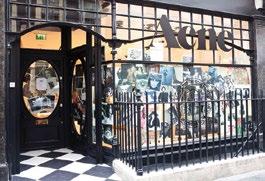





Gasthuismolensteeg 6HS; Rozengracht 58HS
CONCRETE MATTER
Do you need a special gift for a friend?
Everything that a man might want is present here from high-quality care products to decorating materials and tools. The store is supplied from all over the world.
Gasthuismolensteeg 12
HAAR BARBAAR
This place is reminiscent of a 1940s barbershop. There is no need to make appointments in advance; Haar Barbaar is ready to serve you whenever you need.

Wolvenstraat 35
OGER
Family business Oger is a flawless producer of men’s clothing in Amsterdam and has no rivals. The best Italian brands and clothing are sold here.
Hooftstraat 75- 81
47 VOYAGER 8/2017
Piter Cornelisz Hoofstraat 138, OLD SOUTH
SHOPPING / AMSTERDAM
COTTONCAKE
This store is located in a minimalistic concept store De Pijo. Here you cannot find sample products; everything is presented in singular quantities. Clothing, shoes and accessories sold here are obtained and collected throughout Europe.
The art on its white walls is regularly changed to create an exhibition atmosphere for the shopper. In the shop, you can also enjoy vegetarian and vegan dishes with a cup of cappuccino or juice.
1e van der Helststraat 76-hs
www.cottoncake.nl
HÔTEL DROOG
Hotel Droog will satisfy your curiosity in clothing, interior decoration and thousands of other wonderful things. The shop cooperates with both the latest brands and the world's already wellknown designers.
This hub of creative diversity is located in one the great buildings of the XVII century: on the first floor you can buy anything you need for an apartment; a fabulous bar is located in the inner courtyard and a restaurant is found on the upper floor.
Staalstraat 7B
www.hoteldtoog.com
SKINS
Visit Skin Cosmetics for the best cosmetics and perfumes. One of the stores is located on the first floor of the historic hotel Conservatorium. Niche brand products are presented here: Abel Aether, Antonia's Flowers, Babel Perfume, Comme des Garçons Eyeko, Féret Parfumeur, Floris, Fornasetti Profumi, Frederic Malle, Liquides Imaginaires, Maison Francis Kurkdjian, Maison Mona di Orio, Orto Parisi, Patyka, Rahua, Robert Piguet Parfums and more.
Runstraat 11/ Van Baerlestraat 27
www.skins.nl
THINKING OF HOLLAND
If you do not want to buy standard souvenirs of windmills, klomps and tulips, visit Thinking of Holland to choose outstanding gifts. In this unique store, you can buy items made by well-known Dutch designers. It carries the following brands: Droog, Moooi by Marcel Wanders. Prices start from one euro and can exceed 500 euros.

Piet Heinkade 23; www. thinkingofholland.com
GRAY LABEL
Visit this shop if you are looking for ecologically clean, natural textile clothing for kids. The store offers clothing for children under the age of 8, and a small collection for teenagers and mothers.
Oude Looiersstraat 44, JORDAAN
MIFFY
HUTSPOT
Not only can nobody else find the same item you purchased here – you can’t find it in any other Hutspot stores either. This conceptual shop is located in an open space with a concrete floor. After you look at the items created by the designer, you can go to the Lunch Room at the end of the Van Woustraatis store and taste some delicious dishes.
Van Woustraat 4 www.hutspot.com
X BANK
X Bank can be called the epicenter of Dutch design. It is not only a store but an exhibition hall and an installation gallery in one space. Fashion, innovation, design and art co-exist here harmoniously.
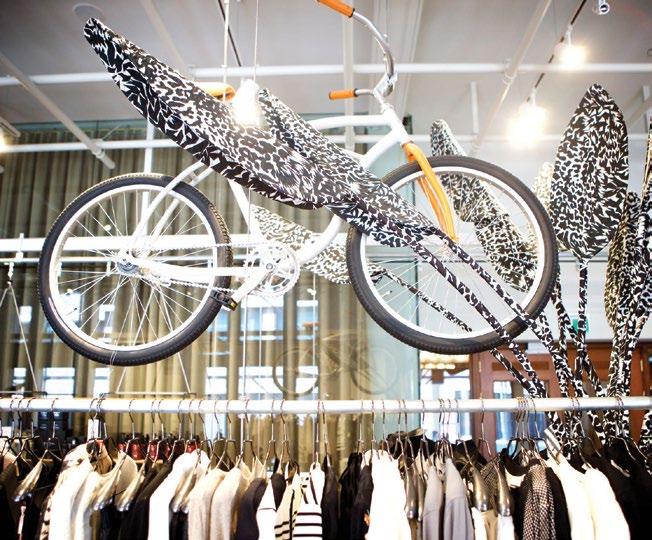
It is a platform for Dutch artists and designers.
The shop is located at W A Amsterdam.
Spuistraat 172
Miffy is a tiny girl-rabbit and a character of the books written by Dutch artist Dick Bruni. In the Dutch language, its original, pet name is konijntje (bunny).

The first book about Miffy came out in 1955. Since then, about 30 books have been printed and 85 million copies sold. You will encounter a lot of toys and clothes inspired by Miffy.
COMMENT
The shops in the city center are open on Sundays and most holidays.
Of course, there are exceptions; however, shopping is mainly available on Mondays from 13.00 - 18.00, Tuesdays, Wednesdays, Fridays and Saturdays from 9.0018.00, Thursdays from 9.00-21.00 and Sundays from 12.00 -17.00. Remember – almost all shops are closed until 13.00 on Mondays.
48 VOYAGER 8/2017
THE OTHERIST
This is a strange conceptual vintage shop: you end up buying an item that you did not know you needed before you got here. This is the chance to discover the new in the old.
Visit The Otherist if you are looking for a special, memorable or unconventional item.
Visiting this shop is like going to a museum. Enjoy browsing even if you are not planning to buy anything.
Leliegracht 6 www.otherist.com
MUSEUM OF BAGS AND PURSES
This is a must-see for fashion lovers. Here you can find more than 4,000 bags and accessories from medieval times up to now.
Herengracht 573
AS ONE OF THE EUROPEAN CAPITALS OF DIAMONDS, AMSTERDAM IS AN IDEAL PLACE TO BUY JEWELRY.
ROYAL COSTER DIAMONDS
COSTER DIAMONDS diamonds market is one of the most reliable and wellknown. The highest-quality diamonds are cut here. Prince Albert of England entrusted Coster Diamonds to clean the family’s blue diamond that is currently held in the Tower of London. Coster Diamonds owns the largest collection of precious stones in Amsterdam.
Paulus Potterstraat 2
www.costerdiamonds.com

SPIEGELKWARTIER
This art and antiques center features more than 70 antique stores and galleries where artworks, ceramics, glasses, jewelry, furniture, Asian items and other collections are presented. No matter which period of history you prefer, in this space you can buy items that belong to any era.

Kerkstraat 155; www.spiegelkwartier.nl
MUSEUM OF SPECTACLES
Find time to visit the National Museum of Spectacles. It offers artworks that have been created over the last 700 years. You can get acquainted with the history
of glasses. The museum is located in the Nine Streets area. Here, you can buy the desired model in the shop. Jackie Kennedy, Buddy Holly and others are still popular here.
Gasthuismolensteeg 7
VISIT THE FAMOUS SHOPPING STREET HOOFTSTRAAT IF YOU WANT TO BUY JEWELRY IN BRAND STORES LIKE BVLGARI, CARTIER, TIFFANY & CO.
MARC LANGE
• DRESS-CODE: If ever a brief resume of Amsterdam fashion comes out, it should be called "50 shades of jeans". It is said that Amsterdam rates first in the world in terms of the number of jeans companies located in one square kilometer. Pack jeans, clean tennis shoes, T-shirts and a raincoat in your Amsterdam travel bag.
• Black, White and Red are the colors of Amsterdam and this is the only capital in the world where adult men proudly wear red jeans.
• Have money on hand: stores and small cafes do not always accept a Visa or Amex. That's why you should always have some cash with you.
BONBON BOUTIQUE
Amsterdam's jeweler Bone Van Der Ree makes a variety of attractive modern brass jewelry items and then covers them with gold. He uses semi-precious stones and Swarovski crystals.
Rosmarijnsteeg 8 www.bonbonboutique.nl
Marc Lange has received many awards; his jewelry is minimalist and luxurious on one hand and colorful and fun on the other. Marc Lange jewelry elevates gold, diamond and titanium to the highest quality. It receives private orders and also refurbishes or replaces old jewelry.
Mient 12, Alkmaar
• If you are a citizen of a non-EU country, you can get an additional VAT refund, which is pretty high in the Netherlands - 21%; tax refunds are valid for minimum purchases of at least 50 euros. Tax-free refunds may be obtained before departure from Holland at the special point in the airport or in Amsterdam at De Bijenkorf's Global Blue Holland office.
49 VOYAGER 8/2017 COMMENT
SHOPPING / AMSTERDAM
FLOATING HOUSES
About 2,500 families live in homes on Amsterdam's oldest artery. The most elite and luxurious arks are located in the city's central districts, for example, in the Jordaan district.
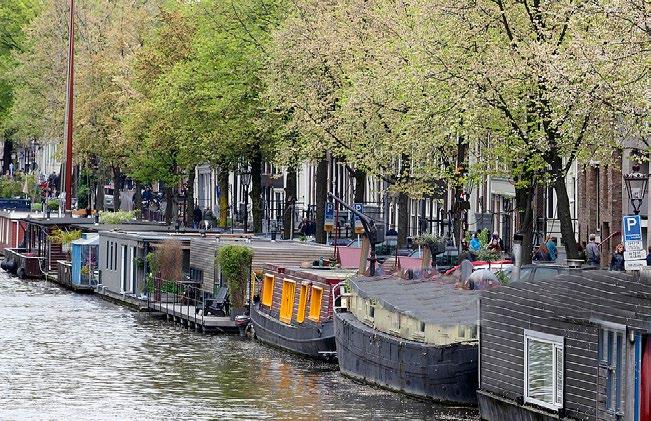
The main attraction for such alternative housing was its sophistication, especially when it was located in the city center. The owners were also aware of their freedom as they could change their address without replacing their place of residence.
The network of smartly planned canals in the heart of the city forms a unique residential area. The restored-reconstructed ships are the oldest among the floating houses attached to the shore. They remind us of the trade and glory of the Netherlands. Many of them are more than 100 years old and have an authentic appearance, despite the fact that they are provided with a water supply, electricity and heating systems.
In the 1960s and 1970s, demand for living in Amsterdam increased and new, completely modern floating houses appeared. They are called Woonark, or house-arks. As a rule, arks are constructed on pontoons without engines, so the luxurious sailing houses along most Amsterdam canals are lined up. They often have several shops and terraces and gardens that connect the floors to each other.
Currently, Dutch architects are planning to complete the water quarters, one of which is designed by Marlies Rohmer and was built in IJburg District of Amsterdam, in 2001. The floating houses are constructed in the shipbuilding area, while the finished building is sailed to the place of registration. This region also reminds viewers of a city constructed from children's "Lego" blocks. If the owner has the necessary ambition and money, they can buy an additional pontoon and build a flower garden there, or increase their flat area by adding another room.
The floating houses of Amsterdam are tied to the shore and all have a specific address. A special permit (ligplaats) is required to moor them in a specified location. There is big competition to get it because the cost of the floating house should correspond to the prestige of the location.



The floating houses were an original and witty response to the unprecedented demand for living space in the city after World War II. Today, floating houses are competitive and rare architectural objects on the real estate market, as their construction and distribution permits are issued in limited quantities.
Maybe the city of the future should look like this! At least the houses floating in the Kingdom of the Netherlands are more than just news, because most of the country's territory is below sea level. For several decades, the Dutch have "conquered" the land from the sea, so the ark is a wonderful alternative to life on earth.
50 VOYAGER 8/2017
RENTING A FLOATING HOUSE IS A GOOD IDEA WHEN VISITING AMSTERDAM. WWW.AIRBNB.COM PROVIDES A GREAT CHOICE FOR ANY BUDGET.
ARTIS
NATURA ARTIS MAGISTRA – Natura Artis Magistra is the full name of the Royal Zoo founded in 1838, which in Latin means "nature is an art teacher". It has perfect gardens, a museum, a planetarium, an oceanarium and beau -

MICROPIA
The Museum of Microbes is the only one in the world. Heig Balian, the Royal Zoo Artis Director, came up with the idea. He wanted to show microbes to viewers just like animals in the zoo.
tiful 19th century architecture; it features many wonderful sights, including over 900 species of animal, 300 species of trees and floral plants.
The natural conditions are created for animals, so visitors pass African savannas to see gnu, antelope and gazelles. Tigers, lions, zebras, rare giraffes, elephants, hippopotamus and other animals inhabit quarters equipped with the latest achievements of modern technology. Pay attention to the peacocks; these species were brought from India in the 19th century. They are the zoo's pride and joy. The bird pavilion - from birds of prey to colorful parrots – entices viewers for a long time.
Artis is one of the few zoos in the world where the penguins feel perfect thanks to their habitat, which is as close to natural as possible. These creatures live alongside the polar bears.
Artis territory houses several museums.
THE ZOOLOGY MUSEUM tells the story of interaction between humans and nature, saving rare species and ecological problems.
AQUARIUM
A Kiss-o-Meter will show you how many microorganisms are transferred from one person to another during a kiss. Visitors can see it through a 3D-microscope, which scientists have created especially for the museum. There is also a special scanner that will help you learn how many microbes live at any given moment in your body and where most of them are concentrated.

Admission price: 12€, for children under 9; 14€ for adults
It’s better to buy a combined ticket for Micropia and Artis; it costs 28€ for adults.
Open: Monday-Wednesday – 09.00-18.00; Thursday-Saturday– 09.00-20.00
Artisplein Plantage, Kerklaan 36-38 www.micropia.nl
The huge aquarium was built in 1882. Many exotic, colorful and angry deep-water creatures live here, including Muraena – very strange fish that change colors during different stages of its life. Although they are born as females, they turn into males and then die. You can also see many animals that inhabit fresh water.
THE GEOLOGICAL MUSEUM is about the beginnings of life on earth and evolution. Visitors can travel to the future here.
THE BIOLOGY MUSEUM stores 20,000 books and 3,000 manuscripts. Some 200 species of rare plants grow in the botanical garden in harmoniously created climates in the park
Open for visitors: November 1-February 28 - 9.00-17.00; March 1-October 31 – 9.00-18.00
Admission: adults – 20, 5€; children ages 4-10 – 17€

Museums are free for children under the age of 3.
If you want to enjoy your “Nemo” visit, touch every object—this is how you’ll feel what cannot be seen.
NEMO
“Nemo” is a science and technology museum. Almost all of your senses, including smell, hearing, sight and touch will help you explore this world.

Open: Tuesday-Sunday: 10.00-17.30
Ticket price (for visitors older than 4): 15€ Oosterdok 2; www.nemosciencemuseum.nl
51 VOYAGER 8/2017
AMSTERDAM
THE CITY ON WHEELS
The flat landscape, soft climate, short distances, and well-maintained infrastructure - all of that turned the Netherlands into a bicycle-loving nation. The Netherlands has such a climate that a bicycle rider will never be too hot or too cold.
The total length of the country’s bicycle track network is 30,000 km (including the connecting network and LF routes).
The 32,000 km are safe bicycle tracks, completely separated from motorized traffic. The traffic signs are also perfect – it is impossible to get lost on your bicycle. And, most importantly, the Netherlands is in the top 5 countries in the world in terms of road safety.

At the end of the 19th century, bicycles were expensive and, therefore, only available to the upper class of Amsterdam. Both men and women learned how to ride a bicycle more elegantly. Ladies mastered a more feminine manner of bike-riding, while men developed a technique that enabled them to still greet other bicyclists, including tipping their hat, while riding.
In the 1920s, bicycles became more affordable. It became apparent that with this aid, getting to one’s destination or making a delivery was now much cheaper and more convenient. The demand for bicycles increased even further after World War II, and this mode of transport became irreplaceable for most Amsterdam dwellers.
In the 1960’s when the car was seen as a symbol of the future and the bicycle a remnant of the past, a whole movement was started to protect the latter. The adoption of new traffic laws waged a victory for those fighting for cyclists’ rights; now any non-motorized transport had an advantage over cars. In other words, the bicycle came to dominate the streets.
Amsterdam’s citizens are proud of their traditional, Dutch bicycles, and lovingly call them “grandma” or “grandpa” respectively. Such bicycles have only one gear and only rear-wheel brakes. You sit on them with your back straight so you can easily see the road and nothing interferes with you chatting with your fellow cyclist. Each of these has a chain guard and mud guard, which allows you to ride them while still dressed smartly. Even in wet weather, you don’t have to abstain from ties, jackets or high heels. Amsterdam dwellers often deco -
DUTCH BICYCLES DO NOT LOOK VERY PRESENTABLE. THEY ARE MAINLY RUSTED AND LOOSE-CHAINED; THIS IS PROBABLY HOW THE DUTCH PROTECT THEIR BICYCLES FROM THIEVES, WHICH ARE NUMEROUS HERE, ESPECIALLY IN AMSTERDAM. HOWEVER, SOMETIMES YOU WILL ENCOUNTER HIGHLY DECORATED EXAMPLES, WHICH ARE USUALLY OWNED BY WOMEN.

52 VOYAGER 8/2017
TEA SKHIERELI, MARINA KIPSHIDZE
In the Netherlands, bicycle tracks are painted red and separated from other roads with special lines. Towns are not the only place where such tracks can be found; they follow the highways and line parks, forests and even fields. At crossroads, bicycle traffic is regulated by special traffic lights; when approaching them, a cyclist can
press a button and switch the traffic lights. In the mornings, when the Dutch hurry to their work or plan to travel to another city, they often reach the train station by bicycle and then leave their bike there in special parking spaces. The amount of ground dedicated to such parking spaces will surprise you.
rate their bikes with artificial flowers, install loud horns on the handle bars and even attach large wooden boxes to carry food on top.
Because of their durable body, more than one passenger can sit on a Dutch bicycle. Very often, parents will let their children sit not only at the back but also at the front in a special basket attached to the wheel. Young families often favor “cargo bicycles”, which enable you to go out of the city with three children, a dog and a basket full of food.
Today, many cities in the world have tried to establish a similar tradition and befriend bicycles. Hopefully, very soon Amsterdam will no longer be the only capital of bicycles in the world, although no one will forget its leading example in this matter. In the meantime, Amsterdammers will continue to turn the pedals of their metal steeds with pride, waiting patiently for the rest of the world to catch up with them.
EVEN THOUGH THERE ARE OFTEN BICYCLE TRAFFIC JAMS IN AMSTERDAM, THIS CITY IS RECOGNIZED AS THE BEST PLACE FOR THIS MODE OF TRANSPORT IN THE WORLD. SOME 881,000 BIKES ARE OWNED BY 834,713 RESIDENTS OF THE CITY – FOUR TIMES THE NUMBER OF CARS.
GAZELLE
Established in 1892, Gazelle produces 275,000 bicycles annually. It is the market leader in the Netherlands and has received a royal warrant.
The main principle of Gazelle is the production of high-quality bicycles; the company offers a 10-year warranty on bicycle frames and other parts, which truly allows one to be calm. The paint on these bikes never wears off; in addition, it is as hard as stone so you will never be able to scratch it. When you buy a Gazelle bicycle, you know that it is a quality, durable and easy-tomaintain purchase.
VANHULSTEIJN
These fast, efficient, handmade bicycles work very well; you will look very sharp riding one. The first thing you will notice is the distinctive shape of the bicycle frame. It is very


strong and durable and does not twist or turn. Premium class bicycles start from 2800 ; the price for the best, custom-made bicycle will depend on the client’s wishes.
RECOMMEND
• Avoid walking along the bicycle track: all tracks are usually clearly denoted with special signs and are designated for bicycles only.
• Cyclists rarely let pedestrians pass. We would advise not standing in the way of these people who are in a constant rush and jump aside as soon as you hear a bicycle bell.
• All local residents are basically professional cyclists; the average speed of the traffic on bicycle tracks is 24 km / h – the highest in the world. Amsterdammers know that their bicycle infrastructure is the best and expect you to take this into consideration.
• Inform other cyclists behind you of the direction you would like to take by indicating with the respective hand; keep in mind that they ride on the right in Netherlands. Helmets are not mandatory, but you should turn your lights on at night.
• Tram rails are slightly narrower than bicycle wheels. If your wheel gets unexpectedly stuck there, you might fly over your handlebars a few meters, and in the worst case into an oncoming tram!.
• In the Netherlands, bicyclists have certain advantages when riding in the streets. According to the law, in a traffic accident between a car and a bicycle, the car driver will be assumed to be fault in any case. There is a Dutch joke: a bicyclist is always right, even when riding at night, with their lights out, and in the wrong lane!
53 VOYAGER 8/2017 AMSTERDAM
CONTRASTING AMSTERDAM
 LASHA BUGADZE
LASHA BUGADZE
It is difficult to focus on one impression when talking about Amsterdam. This strange and beautiful city (and at the same time, one of the most polluted cities in Europe) is a mix of impressions and whatever story you tell, something gets left out.
I was thinking about describing Rembrandt’s Amsterdam, when I remembered the Concertgebouw—Europe’s oldest and most unique orchestra. Its concert hall is unforgettable due to its distinctive velvety sound. Every big orchestra has its own specific sound (while very bad orchestras all sound the same). The Concertgebouw sound carries contrast and marries disparities: tender and firm, rough and
transparent, furious and peaceful, some kind of aristocratic and signified sound, which is at the same time crazy and uncatchable...
The Concertgebouw is believed to give the best performances of Gustav Mahler’s symphonies (who inherited his orchestral palette from Wagner). Thousands of listeners go to Amsterdam annually to listen to the “real” Mahler, just as they visit Vienna and Salzburg for Mozart. This is the accomplishment of legendary conductor, Willem Mengelberg. He was once mentioned in the following context: the Kaiser ruled Germany, Caruso – New York, while Mengelberg ruled Amsterdam.
CITY
54 VOYAGER 8/2017
They also say that the great conductor impressed his diverse, contrasting nature upon the orchestra. This is characteristic of Mahler’s music, as well as the city’s nature and soul. Amsterdam is like Mahler’s symphonies: metaphysical and at the same time, a “bundle of nerves”, elevated and even religious, while beyond morals (un-moral rather than immoral), organized and chaotic, always contemporary and eternally timeless, distant and intimate…
Amsterdam exists in double paradigms: dirty ships sail in small canals adorned with flowers; windows are perpetually left without drapes in a Calvinist fashion, though nothing is seen through them – openness does not mean viewing; schools or kindergartens peacefully co-exists with the Red Light District and the prostitutes behind glass panes…
I’ve personally seen how children leave school and pass by a “window display” without paying any attention to it. The children know that this is a tourist sight – another element to the city’s originality and naturally no Amsterdam-dwelling father or uncle would ever think of leading his teenage son into such a “window display” when he comes of age, as a rite of passage. . .
Amsterdam’s freedom is very tranquil. Being different is synonymous to being natural. They will politely laugh at one’s maximalism… such as the maximalist characteristics of some of our own citizens who visit Amsterdam and smoke themselves silly…
I should probably refrain from listing unfortunate statistics; Amsterdam is ranked first in the world where Georgians overdose the most, though this is a story about Georgians’ inability to control themselves and not the story of Amsterdam…

Even the most famous maximalist and perfectionist things that have become part of the Amsterdam culture now seem pretty tame: for example, the above-mentioned Rembrandt or Van Gogh. A museum full of his unique paintings is a must-see, as well as the national museum (Rijksmuseum). Visit these museums to see the “Night Watch” and Vermeer’s works. You can also follow the trail of the Nazis –the external psychopaths and visit the house of a little Jewish girl and descend from the attic just as the Frank family did during the WWII. This is Anne Frank’s attic – the room the author of the unique diary was taken from to go to a concentration camp…
The way Amsterdam dwellers hid Jewish families from the Nazi occupants exemplifies the traits of these people and the city: strength and peace, love of freedom and a sense of responsibility…
Breathtakingly beautiful girls on bicycles is another characteristic of Amsterdam – emotional students and goal-oriented moms who drive 3-4 children on their black and purposefully old bikes with amazing velocity: they drive little, blond and rosy cheeked citizens of Amsterdam…
Old bicycles are a thing of style, and also a habit from the post-occupational time – Fascists used to take the citizens’ bikes away.
Bikes, canals flowing by houses, the Concertgebouw, Rembrandt, Van Gogh, Vermeer, intolerably pretty and strong girls – these are the main impressions of Amsterdam, whatever others may say…
55 VOYAGER 8/2017
THE LANDS OF INHERITED FREEDOM
AKA MORCHILADZE
This is a small country, where you can look up to the sea. That’s possible. They did it. They moved the sea. These lands became the most free and easy-going in the world following years of battles and bloodshed. Carefree, open and simple, with many other similar traits that followed, this place frees people up and makes them easy and honest with others. All of these factors originated there, born at the time of struggle and people being burned at the stake.

This is how it is inside Europe’s modern countries and their borders – they shelter different countries: old, amazing, rich and unique countries. There are almost no borders in Europe nowadays; only messages from cell phone operators tell you when you’ve crossed into another state.
While the borders are non-existent, the states do exist and these countries hide grand old histories. Kingdoms, counties, legendary and still beautiful cities and old borders…that is a different world of an old Europe.
We learned about the revolt of the Silesian weavers, though no one taught us about Silesia and its beauty, its heart - Breslau and its impressive university.
We did not learn that this city is now the amazing Polish city of Wroclaw.
COUNTRY
* Polder is a low-lying drained tract of land. It is separated from the surrounding water by doles and other hydro-technical buildings. The level of the water is regulated by special pumps.
Polder*, Netherlands
56 VOYAGER 8/2017
The borders of old Europe were fluid, and history was infinite. This old Europe that is hidden under the new one still exists, just in a different way. All of that is alive and hidden, as if half a degree away from reality, waiting to reappear, waiting for a call.
I remembered the story of this old world because I was tasked to write about Holland, or the Netherlands, and so many things come to your mind in times like this. Of course it all starts from the old craftsman – the artists.
Not all artists were Rembrandts, Vermeers, Van Dykes or Ruisdaels. There were others, called the small Dutch. More than 2,000 artists dwelled in 16th-century Holland and this is why their paintings are not only art but history as well.
When you walk in these towns, it’s like you are looking at the paintings. All of those Dutch artists were great world creators and one can never forget the food-covered tables they drew, or the frozen rivers of the towns that turned into main town squares in the winter, with people walking on them and boys and girls skating; the stills of that time, without planes, TVs, iPhones or electric power, have so much light. Artists played with light and shade and made it their life goal to turn it into art.
This is what you think about and then you remember that these lands became the most free and easy-going in the world, following years of battles and bloodshed. Carefree, open and simple, with many other similar traits that followed, this country frees people up and makes them easy and honest to others. All of these factors originated there, born at a time of struggle and people being burned at the stake.
You remember numerous things, including the fact that God created the sea while the Dutch created the seashore, meaning they created the dams, which the small country built to take back land from the sea for cultivation. Also, you remember the Dutch are open to everything new and daring, and even if we know nothing about them, we still know that the Dutch changed football half a century ago.
This is what is visible – the things that everyone will always talk about, and of course the old Soviet joke: Dutch Cows had had their passports for 200 years when Soviet farmers only received theirs under Brejnev.
The Dutch sailed from one corner of the world to other charting maps… this is why New Zealand is called New Zealand. It’s a great world of enlightenment and renaissance.
THIS IS THE COUNTRY OF EXEMPLARY FARMERS, CRAFTSMEN, FREE PEOPLE, GREAT TRADERS, BUILDERS, NOBILITY, GREAT CREATORS, GREAT THINKERS, PEOPLE THAT BRING CHANGES. THEY WERE LED BY THE SEEMINGLY PHLEGMATIC WILLIAM OF ORANGE AND ERASMUS; ALSO, YOU’LL THINK OF AMERICA, MANHATTAN AND HARLEM, WHICH THEN WERE CALLED SOMETHING ENTIRELY DIFFERENT – NEW ENGLAND.
But there is one thing I remember before I think of all of these achievements: 25 years ago, a wrestling competition was held in a Belgian city. One Georgian watched it, which was a rare thing then and this young man was overcome with such emotions that he jumped into a taxi at night and rushed into Damme, where he spent the night looking for Heron Road and then returned disappointed. He told me this story and shook his head that there was no Heron Road and nobody had ever heard of it.
Damme is in Flanders; Flanders is a part of Belgium that may be called Dutch, for its style of writing, reading and talking. That’s just a modern explanation. These are modern borders and a political agreement but the old Flanders has a huge history of its own.
That Georgian looked for Heron Road because that’s where Thyl, known as Ulenspiegel, was born. One recalls Charles de Coster’s book, Ulenspiegel. However, as for the real Ulenspiegel, Saxons claim he was from Saxony, while Flandrians claim he was from Flanders.
Charles de Coster wrote a book about Thyl Ulenspiegel and his friend Lamme Goedzak, describing the colorful play of the souls that Earth-dwelling people had.
Flanders is now Belgium, though De Coster’s Ulenspiegel is the Netherlands’ soul. Laughing, carefree and struggling. Everything done with love, steadfastness, and knowledge.
Many nations battled and took over the Netherlands, including Spain, England and Germany, as a separate country or as part of their kingdom. Blood was shed, resistances were mounted and heroic acts were committed. We call it Holland, despite the fact that Holland comprises only two southern and northern provinces out of the Netherlands’ 12, though it is most famous for its cities – Amsterdam, Rotterdam, the Hague and Haarlem.
The common, weekend tourist knows two “must-do” things here: legal cafes to smoke intoxicating herbs, and the legally smiling prostitutes in the window displays. They often only
57 VOYAGER 8/2017
mention Amsterdam, though the law is the same in Holland. This is nothing compared to everything that we may find and feel in Netherlands. Sometimes they also mention Van Gogh and Rembrandt museums and also that the country cultivates tulips. Though this is just a fraction of what can captivate you heart, mind and thoughts.
NETHERLANDS IS A COUNTRY OF GREAT DARING, AND THIS DARING IS PEACEFUL. SCHOOL GRADUATES SPEAK SEVERAL LANGUAGES AND ARE NOT SURPRISED BY ANYTHING. YOU CAN’T FIND THE SUPERIORITY OF THE ENGLISH OR THE BUMPTIOUSNESS OF ITALIANS HERE.
No one has destroyed the windmills that have been placed along the roads centuries ago. Wind energy mills are now added to the windmills of days past, and you can travel through the roads from city to city accompanied by swirling new and old mills. OF course, how can you understand Netherlands without a bike?! How can you see it?! Youth and bicycles are essential.
It may be nothing, but when you see local youth, it becomes apparent that this is inherited freedom, common, unburdened, painless and life-giving.
NETHERLANDS MEANS LOW LANDS, WHICH IS A CLEAR CONCEPT. BUT IN SOME WAYS, THOSE LANDS ARE VERY HIGH.

This is a small country, where you can look up to the sea. That’s possible. They did it. They moved the sea. And this is a country webbed by canals. Stand by the canal in Amsterdam or Leiden and try to find your reflection in the water.
It is hard to find regular places in Netherlands. Maybe they can’t boast about their cuisine, like their neighbors do, though you should travel to Rotterdam, Maastricht, Naarden, The Hague, Haarlem, Bloemendaal, Arnhem, and all of them! All of them are special and also: when we say that we’ve been to Europe, what do we mean? Well, it is hard to imagine a country more European then the Netherlands. This is what Europe is – those cities.
When you step into it, you see 500-600 years of these people’s work. You don’t have to go to many places – you can just visit Delft, which is located between Rotterdam and The Hague and walk in its market square to imagine the old city hall.
COUNTRY
* The Netherlands ranks first in exporting trees, roots and flowers – it holds 44% of the world market share.
Tulip valley in Noordoostpolder, Netherlands*
58 VOYAGER 8/2017
MADE IN THE NETHERLANDS
THE LAND IS VERY VALUABLE IN THIS SMALL DELTA SITUATED BELOW THE SEA LEVEL. DUTCH FARMS ARE KNOWN AROUND THE WORLD FOR THEIR PRODUCTIVITY, SUSTAINABILITY AND EFFICIENCY. THANKS TO ACQUIRED KNOWLEDGE IN THE FIELDS OF AGRICULTURE, FERTILE SOIL, INTENSIVE FARMING, QUALITY OF LABOR AND TRADE EXPERIENCE, DUTCH AGRICULTURAL PRODUCTS ARE EXPORTED TO EVERY CORNER OF THE WORLD.

THE SECOND LARGEST EXPORTER OF AGRO PRODUCTS
In 2016, the total value of agricultural products exported from the Netherlands amounted to 82.4 billion euros (the US is the leading country). Germany, which is the largest consumer of Dutch agricultural goods, purchased 11.1 billion euros of goods last year. The Dutch agricultural sector maintains its competitive advantage against international rivals thanks to growing investments and continuous innovations in this area.
HORTICULTURE
The Netherlands holds first place in the world in tree, sapling, bulbs and flower exports. The country is responsible for 44% of the global flower trade. Some 77% of the global flower bulb trade is also held by the Netherlands; the largest portion of these exports are tulips.
GREENHOUSES
Greenhouses take up more than 60 sq.km of the country – basically an entire city of glass, with little impact on the environment. The primary focus is on concepts and technologies that are more sustainable against climate change. "Westland", which stretches across 2,500 ha, is one whole greenhouse area, and the largest such area in the world. The greenhouse segment is responsible for 75% of agriculture sector exports and is increasing by 1-2% annually. The Netherlands is the largest exporter of various plant seeds. The income from this activity is 1.5 billion US dollars and increases by 5% annually.
RESEARCH AND EXPERIMENTS
The Netherlands is also the leader of scientific research in the agricultural sector. The government invests heavily in developing the agricultural sector by deepening collaboration between the public and the private sector, implementing innovative programs and creating such structures as the Food Valley, whose research center in Wageningen University is one of the most influential institutions in the field of agricultural research in Europe.
In 2016, the Netherlands was rated 1st in the world in potato seed esports and 4th in fresh and cold storage potato exports.
The Netherlands is the second-largest exporter of vegetables on the world market, outperformed only by China; following the US, Spain and Chile, it is the 4th largest fruit exporter.
The Netherlands hosts the largest auction of flowers and plants, with a total of 12.4 billion flowers and other plants sold annually, with an annual turnover of 4.5 billion euros. A 20% trade surplus is achieved in this country with contributions from the horticulture sector.
Of the 25 leading companies in the field of food and beverages in the world, three produce in the Netherlands.
59 VOYAGER 8/2017
THE ROYAL FAMILY
QUEEN WILHELMINA RECEIVED THE ROYAL GOLDEN CARRIAGE AS A GIFT FROM THE AMSTERDAMERS IN HONOR OF HER ASCENSION TO THE THRONE IN 1898. THE CARRIAGE WAS CREATED BY THE SPIJKER BROTHERS FROM GILDED TEAK WOOD AND DECORATED WITH PAINTINGS IN THE STYLE OF THE DUTCH RENAISSANCE.

EVERY YEAR, ON THE THIRD TUESDAY OF SEPTEMBER, AT EXACTLY 13:00, THE KING OF THE NETHERLANDS LEAVES THE NOORDEINDE PALACE AND TRAVELS IN THE GOLDEN CARRIAGE TO BINNENHOF , WHERE THE MONARCH’S ADDRESS OPENS THE ANNUAL SESSION OF PARLIAMENT.
The King of the Netherlands, Willem-Alexander, confessed during his anniversary this year that even after he ascended to the royal throne, he regularly worked as a second pilot on a KLM Cityhopper passenger plane but remained incognito.
He became King of the Netherlands in 2013 at the age of 50 after his mother Queen Beatrix relinquished the crown. After his graduation, the prince served his military duty in the Royal Navy. In 1987, he began to study history in Rijksuniversiteit Leiden, and later acquired a military license and passed a special course at the Netherlands Defense Academy.
He was involved in many fields up until his ascension on the throne, including water resource management, infrastructure, sports and defense. Upon receiving the title of monarch, he became the head of state, whose functions are to issue state acts and sign laws, receive the oath of office from the members of the government and perform ceremonial duties. The king conducts state trips and actively supports social institutions.
Queen Maxima Zorreguieta was born in Argentina and spent her childhood in Buenos Aires. After completing high school, she studied at the Catholic University of Argentina, and after graduating worked in New York from 1995 to 2000. She met the heir to the royal throne at a soirée held in Seville, Spain.
In 2001, Maxima received Dutch citizenship, and in 2002 married Prince Willem-Alexander in Amsterdam. The ceremony was held in the new church, Nieuwe Kerk. Since then, Maxima has played a great role in royal affairs, accompanies her husband during state visits, and is the face of the royal family on official events.
King Willem-Alexander and Queen Maxima have three daughters: the heir to the throne Princess Amalia and her sisters Princess Alexia and Princess Ariane. Like the king did, the princesses study at a state school.

MONARCHY
60 VOYAGER 8/2017
THE FORMER QUEEN, NOW PRINCESS BEATRIX, IS AN IMPORTANT MEMBER OF THE ROYAL FAMILY. SHE ASCENDED THE THRONE ON APRIL 30, 1980; HER HEIR, WILLEMALEXANDER, WAS CROWNED EXACTLY 33 YEARS AFTER, FOLLOWING HER ABDICATION FROM THE THRONE.

THE DUTCH MONARCHY IS YOUNG. THE KINGDOM OF THE NETHERLANDS WAS FOUNDED IN 1815. WILLEM I, THE FIRST MONARCH OF THE NETHERLANDS, WAS FROM THE ORANGE-NASSAU DYNASTY.


THE SLOGAN "JE MAINTIENDRAI" ("I WILL PROTECT"), THE COLORS OF THE FLAG AND THE NATIONAL COLOR – ORANGE – ARE ALL FAMILY TRADITIONS OF THE ORANGENASSAU DYNASTY.
Until 1795, the Netherlands was a republic of seven autonomous provinces. As a result of French occupation, the country became the modern united state during 1795-1806, and later a kingdom where Napoleon appointed his brother Louis as King of the Netherlands (1806-1810). In 1813, the Netherlands gained independence from France and the exiled Prince Willem Frederick returned to become the heir to the sovereign throne.
Before World War II, the Kingdom of the Netherlands possessed many colonies in Asia, South America and the Caribbean. In 1949, Queen Juliana began the process of decolonization with the release of the East Indonesian Islands, and in 1963 returned New Guinea to Indonesia.
On December 15, 1954, Queen Juliana signed a document according to which the colonies remaining under her rule gained autonomy in their internal affairs. In 1975, Surinam left the kingdom and became an independent state.
THE NETHERLANDS IS A CONSTITUTIONAL MONARCHY, THEREFORE THE KING HAS LIMITED POWERS. HE HAS IMMUNITY BUT THE REAL POWER IS IN THE HANDS OF THE CABINET. THE KING RARELY MAKES POLITICAL STATEMENTS.

The king's budget, approved by parliament, is calculated precisely in accordance with his official duties and tasks. In 2016, this amounted to 40.085 million Euros. The Dutch Royal Family has a higher budget than the British Windsor family, whose direct expenses amounted to 29.7 million Euros last year.
On April 27th, the whole of the Netherlands has one big party! From the largest cities to the smallest towns, everyone celebrates the King’s Day. On this day, the Royal Family visits one or two cities. So if you are lucky, you can see them for yourself.
TOASTING IS A MUST DURING THE FEAST DEDICATED TO THE KING. ON THE KING’S DAY, PEOPLE TOAST THEIR MONARCH WITH BITTER ORANGE BEER – A CLEAR ALCOHOLIC BEVERAGE. THIS BEVERAGE WAS CREATED IN 1620 TO CELEBRATE PRINCE FREDERICK HENRY'S VICTORY. WHEN WILLEM OF ORANGE BECAME KING, THE TRADITION WAS RESTORED AND THE ORANGE BEER WAS MADE AGAIN.

61 VOYAGER 8/2017
ROYAL PALACE OF AMSTERDAM

The royal palace is located on the Dam square in Amsterdam. This building is not the residence of Willem-Alexander but the monarch often receives important guests there. The 350-year-old building was originally the city's municipal building but in 1808 Napoleon Bonaparte turned it into a palace. A great collection of works of art is kept there. When the building is not used for royal events, it is open to the public. The royal palace is one of the three residences used by the royal family. You can see for yourself the Tribunal and almost every hall on the first floor, including the burgomaster council room, the city council cabinet and the magisterial court room.
When entering the palace, you must leave your bags, umbrella and coat in a cloakroom; you can carry small personal belongings in a little plastic bag. Treat the exhibits with caution – it will cost you a lot if you break anything in the royal palace.
Open: Monday through Sunday, from 10.00 to 17.00.
Admission price: adults - 10.00 €; children - free.
HET LOO PALACE

This palace was built in 1685 by Viceroy William III (later King William of Great Britain). The royal family used this palace for more than three centuries as a summer residence. In 1971, Het Loo Palace became a museum where visitors can view the way the royal family lived for years.
Het Loo Palace is located in the province of Gelderland near Apeldoorn. It is decorated with outstanding furniture and design elements, and due to its Baroque style garden, is often called the Dutch Versailles.

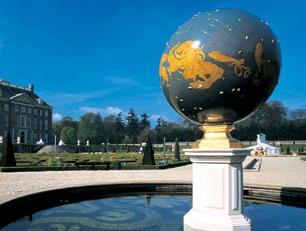

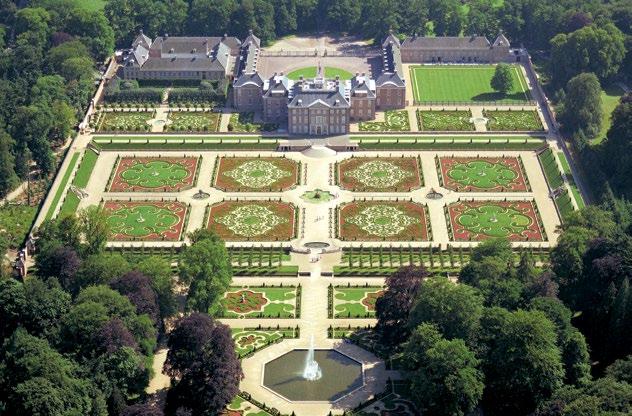
To view the beautiful garden and superb collection of art objects, you can take the train from Amsterdam. The price for a one-way ticket is 14 Euros. The journey takes about 1 hour and 20 minutes.
Open: From Tuesday to Sunday from 10.00 to 17.00.
Admission price: 14.00 €; 4-12 year old children - 5.00 €.. Apeldoorn
PALEIS NOORDEINDE
Since 1609, when the state presented this palace in The Hague to Willem of Orange, the building has been the living place of the royal family. Currently the King of the Netherlands uses it as an official residence as well. The palace is closed to the public but you can enjoy the quiet and silence in its garden. Paleistuin, or the palace garden, is one of the jewels of The Hague. This romantic park will enchant you with its bushes, flowers, fountains, live fences and ponds. The royal stables are located near it. In this building, considered an architectural monument, among other valuable exhibits, the Golden Royal Carriage is kept. Noordeinde 68, Den Haag; www.royal-house.nl
MONARCHY
62 VOYAGER 8/2017
Dam; www.paleisamsterdam.nl Koninklijk Park 1


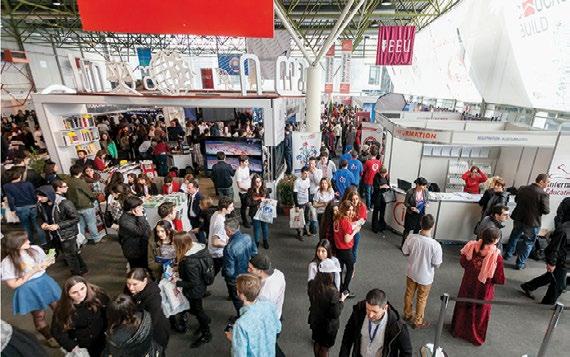


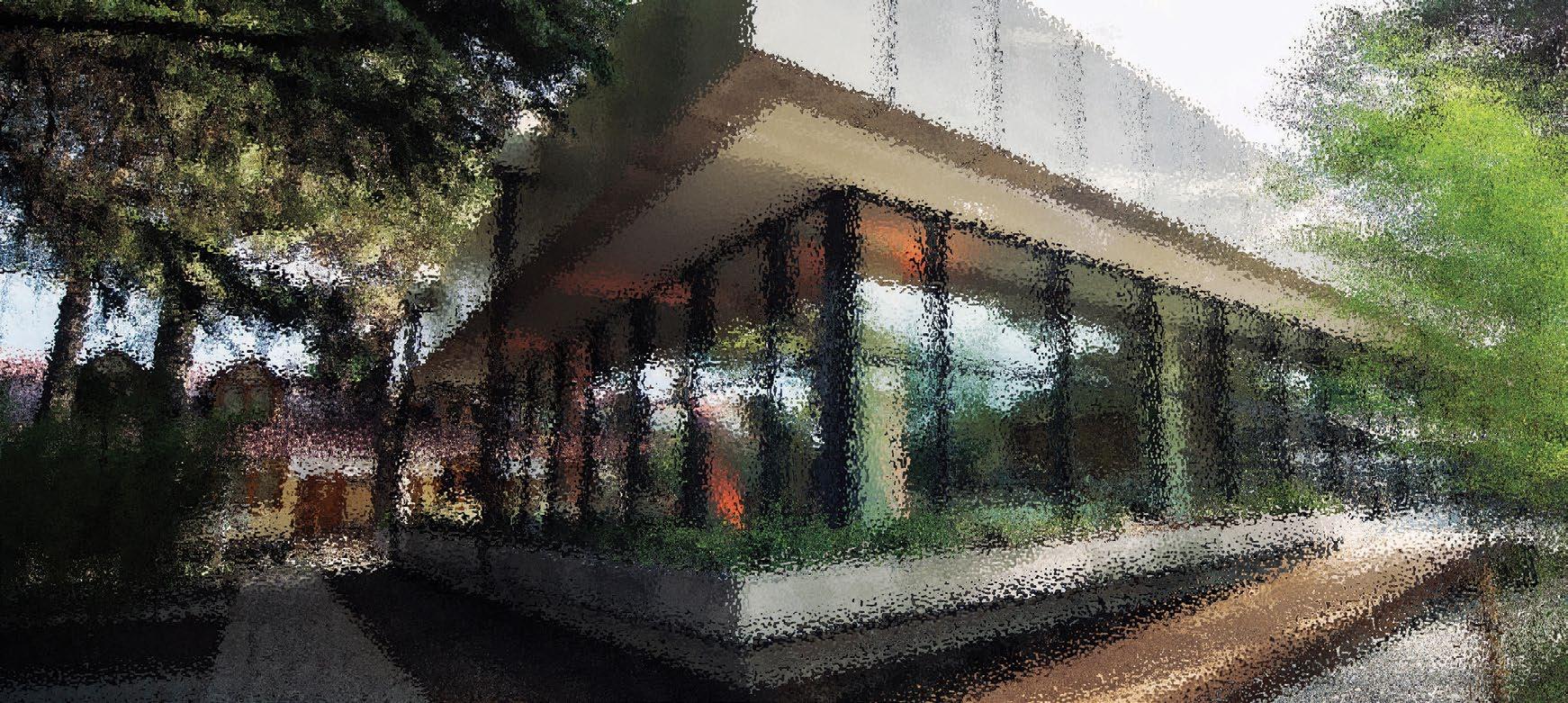

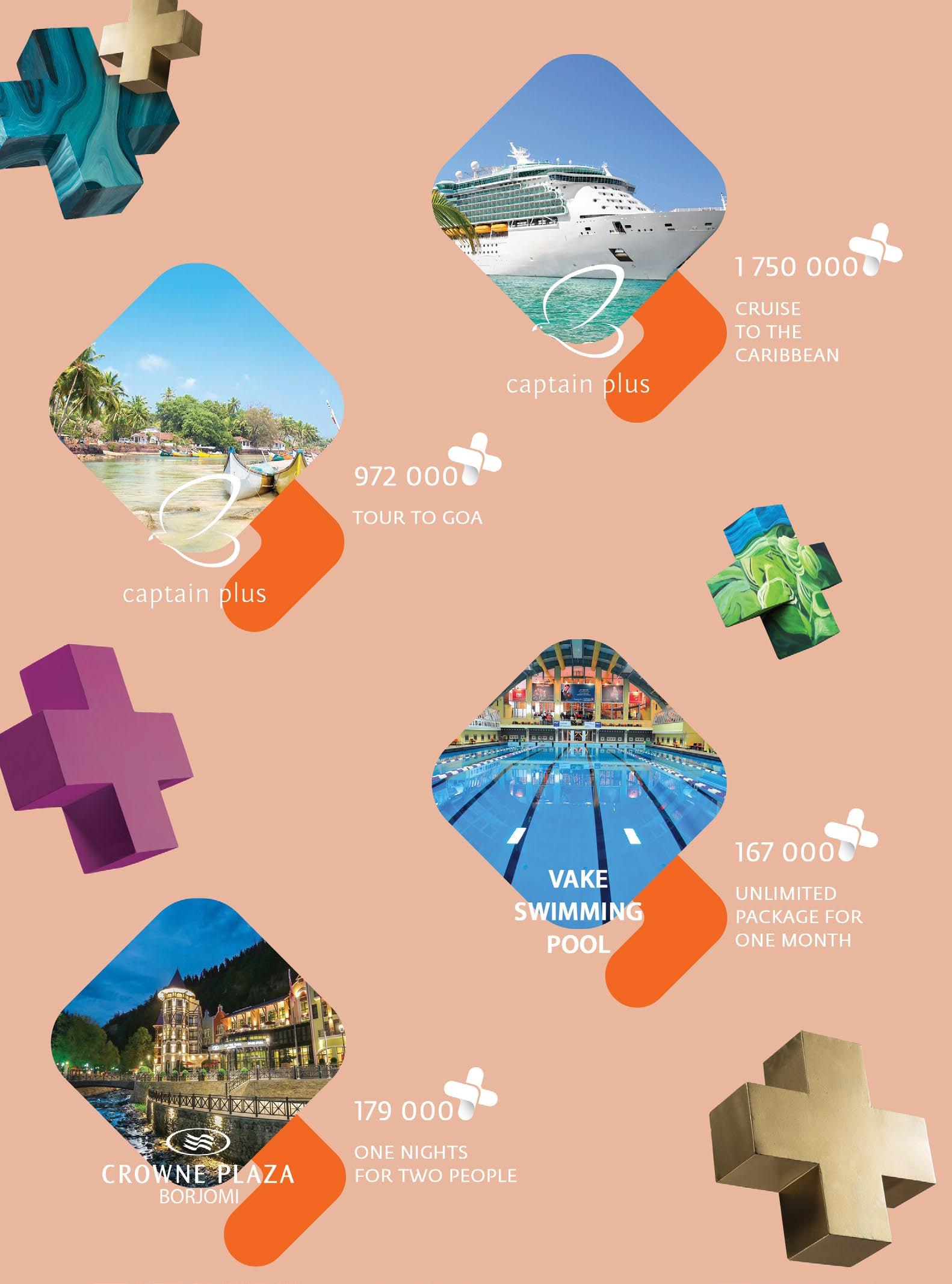
THE NATIONAL ANTHEM OF THE KINGDOM OF THE NETHERLANDS “HET WILHELMUS” IS THE OLDEST IN THE WORLD. IT WAS WRITTEN AND PERFORMED IN 1568.
THE NATIONAL FLAG OF THE NETHERLANDS DATES BACK TO 1572. IT IS THE OLDEST THREE-COLORED FLAG.
ONE THIRD OF THE NETHERLANDS IS LOCATED BELOW SEA LEVEL, WHILE 50% IS JUST ONE METER ABOVE IT. HENCE THENAME NEDERLAND — MEANS LOW LAND.
THE HIGHEST ELEVATION POINT FROM THE SEA LEVEL IS 323 m (VAALSBERG, PROVINCE OF LIMBURG). THE LOWEST POINT: 6,7 m (SOUTH HOLLAND)
165 CANALS
40 PARKS
AMSTERDAM
834 713
POPULATION
6159 SHOPS
51 MUSEUMS
207 VAN GOGH PAINTING
1325 RESTAURANTS
8 WINDMILLS
AMSTERDAM’S FIRST STOCK MARKET OPENED AT THE BEGINNING OF THE XVII CENTURY. IT IS THE OLDEST IN THE WORLD.
1,281 BRIDGES ARE LOCATED IN AMSTERDAM –THREE TIMES THE AMOUNT OF VENICE. 80 OF THEM ARE LOCATED IN THE CITY CENTER.
2,500 FLOATING HOUSES ARE EITHER PERMANENT RESIDENCES OR FOR RENT.
THE POEZENBOOT FLOATING HOUSE ON THE SINGEL CANAL IS A HOMELESS CAT SHELTER.
starting
at 115€
STANDARD DOUBLE ROOM IN A HOTEL
MUSEUM TICKETS
TAXI FARE (3-5 km)
PRICES
A PACK OF MARLBOROS
A CUP OF COFFEE/TEA
GLASS OF WINE UTILITIES PER MONTH
BOTTLE OF WINE
66 VOYAGER 8/2017
RENTAL CAR (per day)
PARKING (24 hours)
A TWO-COURSE MEAL IN A RESTAURANT, WITHOUT BEVERAGES
CLUB TICKET
ONE-BEDROOM APARTMENTS RENT (IN THE CENTER) 8€ 10-20€ 50€
WINDOW PROSTITUTION SERVICE (20 mins)
starting at 150€ starting at 1200€ 6€ 40€ starting
2,50€ 2,70€ 4,50€
at 12€
A
A
WIFI/CABLE 30€ 15€ starting
A MUG OF BEER 9€
at
COCKTAILS
GDP IN 2016 WAS €678,572 MILLION. INFLATION: 0.2% UNEMPLOYMENT: 5.5%.
AVERAGE SALARY PER MONTH: 1,537€ INCOME PER CAPITA: 47,634€
55 THEATRES AND CONCERT HALLS
STATISTICS starting at 30€ starting at 9€
THE DUTCH ARE AMONG THE TALLEST IN THE WORLD. AVERAGE HEIGHT FOR MEN IS 184CM AND FOR WOMEN IS 170CM.
THE DUTCH ARE SEARCHING, CREATIVE, STRAIGHTFORWARD AND PRAGMATIC PEOPLE.
THEIR TOLERANCE TOWARDS THE FOLLOWING ISSUES - ABORTION, EUTHANASIA AND RECREATIONAL DRUGS - IS WORLD FAMOUS.
THE NETHERLANDS IS A COUNTY OF PROGRESSIVE LIBERAL LEGISLATION. PROSTITUTION HAS BEEN LEGALIZED HERE SINCE 2000. SAME-SEX MARRIAGE WAS LEGALIZED IN 2001 AND SINCE 2009, SAME-SEX COUPLES HAVE BEEN ABLE TO ADOPT CHILDREN.
THE NETHERLANDS IS SMALLER THAN SERBIA AND CROATIA. THE FIRST TWO LETTERS OF THE WORD “EUROPE” ARE PRONOUNCED WITH THREE DIFFERENT VARIATIONS. NONE OF THEM COINCIDE WITH THE ENGLISH PRONUNCIATION.
THE DUTCH
PEOPLE ADDRESS EACH OTHER BY THEIR FIRST NAMES – THIS EMPHASIZES THE NON-HIERARCHICAL CULTURE. THIS IS HOW EMPLOYEES ADDRESS THEIR BOSS AND CHILDREN ADDRESS THEIR TEACHERS AND PARENTS.
NO CURTAINS ON THE WINDOWS IS A STRANGE DUTCH TRADITION. THIS IS THE WAY THE PROTESTANT DUTCH EXPRESS THAT THEY HAVE NOTHING TO HIDE.
The richest Dutch woman, 61-year-old Charlene de Carvalho owns, 25% of beer giant HEINEKEN ($12.3 BILLION). She received the HEINEKEN stake 10 years ago after her father, Freddie Heineken, passed away.
THE CITIZENS OF THE NETHERLANDS ENJOY 74 LITERS OF BEER PER PERSON ANNUALLY.
PUNCTUALITY – the Dutch have several words that signify “fast”: snel (quickly), straks (fast) and zo (very fast). However, there is only one word for “now” – nu. Thus, you have many alternative ways of getting to your destination fast but the appointment time is sacred
MEET AND GREET – WHEN SEEING SOMEONE FOR THE FIRST TIME, SHAKE THEIR HAND. A KISSING “TRIO” IS NECESSARY WHEN MEETING FRIENDS.
HERRING WITH ONIONS AND PICKLES IS THE FAVORITE DISH OF DUTCH PEOPLE. THE POPULATION CONSUMES 12 MILLION KG OF THIS FISH ANNUALLY.
THE NETHERLANDS IS THE BIGGEST PRODUCER AND EXPORTER OF DAIRY PRODUCE IN THE WORLD, OFFERING 400 TYPES OF CHEESE.
TAP WATER IS OF AN EXCELLENT QUALITY IN HOLLAND. UNLESS STATED OTHERWISE, IT IS SAFE TO DRINK THE TAP WATER.
THE DUTCH RATE SECOND IN THE WORLD IN TERMS OF THEIR LOVE FOR COFFEE. EACH OF THEM DRINKS 140 LITERS OF COFFEE ANNUALLY, WHICH TRANSLATES TO 3.2 CUPS PER DAY.
67 VOYAGER 8/2017
LORD OF THE SEAS
IRINA BAGAURI
The territory of the modern Netherlands is only 41,519 sq. km., 18% of it is covered by water, and half of the land has literally been snatched from the North Sea
How would the Netherlands look today without the efforts of its people? What would Amsterdam's Museumplein look like – with its historical and modern buildings, fountains and memorable slogan, Iamsterdam, where thousands of people mill about and take photos and eat ice cream or stroopwafel – were it not for the Dutch people who ordered the sea to retreat and keep it at bay to this day?
This question was answered by Dutch innovator Daan Roosegaarde via his impressive 2015 art project Waterlicht. With the help of illumination and LED technologies, he created an illusion of ground covered by water. In different locations in the Netherlands and France, including the Museumplein, he allowed the people in open spaces at night to “walk under the water”.

The project was about creating a dreamlike landscape that according to the author communicates power and poetry and reminds the audience of the reality in which they livebelow sea level on land that would be covered with water if it weren’t for human intervention.
The Dutch began conquering the sea 2,000 years ago. Since then, floods have killed thousands of people, including in the 20th century, when two major tragedies took place in 1916 and 1953 as a result of tsunamis.
This did not lead the locals to give up; instead they started to tame the water in a fiercer way, constructing dikes and barriers and drying the land claimed from the sea.
HISTORY
Waterlicht. 68 VOYAGER 8/2017
NEW AMSTERDAM
There are many geographical discoveries and historical facts associated with the Dutch East India Company. In 1609, British captain Henry Hudson, who served in this company, was looking for naval routes to China via America. At this time, he discovered a river (and Strait) that was named the Hudson in honor of the captain. The city of New York was later built on the banks of this very river. Originally, it was called New Amsterdam.
The Dutch province of New Netherland was founded by 30 families who travelled from Amsterdam in 1624. The city of New Amsterdam was founded on the island of Manhattan in 1625 by Willem Verhulst, the second director of New Netherland. Initially, the city occupied only a small area in the south of the island. The current blue-white-orange flag of Manhattan descends from of the 17th century Netherlands flag.
In 1626, the third director of New Netherland, Peter Minuit, purchased the entire island from the local Native Americans (territory of the present Inwood district), which cost him only 60 gulden (about 700 modern US dollars). These lands are currently estimated to be worth US $49bn.
In 1662, following the restoration of monarchy in England, the Netherlands and France joined in a union against this country. In response to this, King Charles II of England decided to add the New Netherland to his North American lands and handed them over to his brother, James, Herzog of York and Albany, who later became the King of England (Jacob II). Jacob received the title of Lord-Protector and arranged a well-armed expedition to the New Netherland with four ships led by Richard Nichols. He asked the residents of the province if they wanted surrender. With no way to resist the English attack, the director of the New Netherland Peter Stuyvesant and the Provincial Council demanded rights and freedoms for their residents that were not attainable for the neighboring New Englanders and Virginians.
The laws and political traditions that existed in 1624 were written into the agreement when the province came under English governance. Thus, political and religious freedom was preserved even in 1674 when the English administration began, and even when the United States was established in 1791, it remained as a constitutional norm on existence and rights.
New Amsterdam was renamed New York, while New Netherland became New York province.
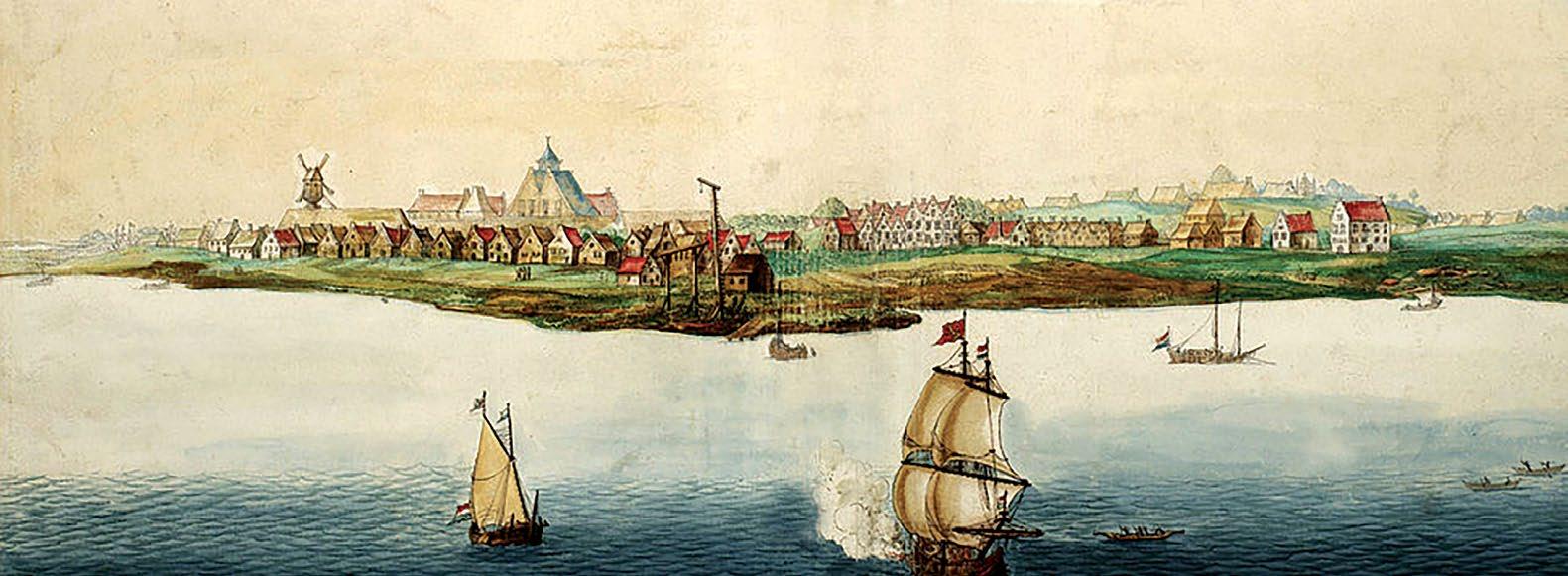

DUTCH EAST AND WEST INDIA COMPANIES
In 1597, Dutch travelers reached Indonesian shores and drafted a naval map so that their fellow citizens could repeat the same route.

Along with the discovery and colonization of new lands, a need emerged to import cargo from these countries. To coordinate trade relations with the Far East, the Dutch founded the East Indian Company in 1602. It was the first transnational company in the world.
The company's activities included maintenance of trade relations with Eastern countries - China, Japan and Tasmania. The Netherlands managed to monopolize trade between countries of the Pacific and India on one hand and Europe on the other. It surpassed Spain, Portugal and the Republic of Venice in terms of the amount of cargo imported into the country.
In 1616, Willem Schouten reached South American shores. After the colonization of new lands in the west and south, the West Indian Company was established in 1621, which led to importation of goods from American and South African territories. If the cargo travelling from the east mostly carried spices and exotic porcelain products, the goods that came from America and Africa were mostly silver, gold, sugar, ivory and precious furs. The company operated until 1794.
New Amsterdam, 1664
69 VOYAGER 8/2017
Dutch Vereenigde Oost-Indische Compagnie
In the 17th century, windmills were added to the old and primitive dams. What is now a tourist attraction and the calling card of Netherlands was initially a spectacular example of innovative technology, with its lower part housing a mechanism for water drainage.
Over time, the locals have tamed the North Sea and even befriended it. The tales of their greatness are directly connected to venturing out into the sea.
In the 17th century, during the Golden Age, the Dutch took important steps in the development of cartography and shipbuilding. The achievements of the Dutch in maritime
navigation played a great role in world history that is often not fully appreciated. It was the Dutch who added many lands to the world map though such great adventures as the North Expeditions of Willem Barentsz, Abel Tasman’s journeys to the Pacific and Indian Oceans, the discovery of Australia by Willem Janszoon, and the Islands discovered by Willem Schouten and Jacob Le Maire.
The Dutch can also be credited with the creation of merchant ships, which brought oriental spices, porcelain, ointments, fabric and carpets to the Netherlands – all of which was strange and exotic for this old northern country. Later, the country paid a heavy price for the economic prosperity of the Golden Age, and the merchant vessels were replaced with naval fleet and military ships.
Hans Brinker, a famous fairy tale character, is a symbol of battling the sea. Hans was a little boy who while walking on a street on a rainy day heard a sound that terrified any Dutchman: agitated waves were approaching the shore.
The boy saw that his homeland was in danger because the dam that protected the country from the west had a small hole where the water could breach the dam. Hans did not
RECLAIMING THE LAND FROM THE WATER BECAME SUCH AN IMPORTANT ISSUE FOR THE NETHERLANDS AND ACHIEVED SUCH INTERNATIONAL RESONANCE THAT DUTCH WORDS - POLDER, SLUICE, DAM - BEGAN TO BE USED IN OTHER LANGUAGES.
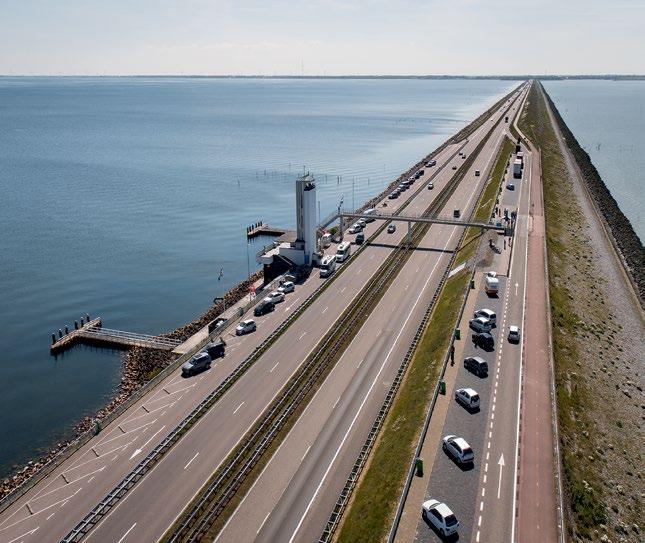
 THE AMERICAN SOCIETY OF CIVIL ENGINEERS (ASCE) BELIEVES THAT "ZUIDERZEE" PROJECT, TOGETHER WITH "DELTA", IS ONE OF 7 WONDERS OF THE MODERN WORLD.
AFSLUITDIJK, A 30-KM LONG DAM, A PROJECT BY " ZUIDERZEE "
The Oosterschelde is the largest of the 13 dams of the “Delta” system.
THE AMERICAN SOCIETY OF CIVIL ENGINEERS (ASCE) BELIEVES THAT "ZUIDERZEE" PROJECT, TOGETHER WITH "DELTA", IS ONE OF 7 WONDERS OF THE MODERN WORLD.
AFSLUITDIJK, A 30-KM LONG DAM, A PROJECT BY " ZUIDERZEE "
The Oosterschelde is the largest of the 13 dams of the “Delta” system.
HISTORY 70 VOYAGER 8/2017
even stop to think and plugged the hole with his finger. He did not move away even for a second on that stormy night, protecting his country and land from the storm and the approaching raging water.
Hans Brinker is a true national hero, and there are several monuments to him erected around the Netherlands. It doesn’t matter that in reality he was a character created by an American author. His story is so real that even the Dutch themselves often forget that this is a fictional story. Well, what is the history of the Dutch, if not a story of the girls and boys who very much like Hans did not let the sea capture their land?
The battle against water continues today with the same commitment. Many important dams and barriers were built in the North Sea in the 20th century. The windmills were replaced with diesel and electricity-powered pump systems, though the impressive and seemingly perfect flood protection system has not caused Dutch engineers to relax, especially considering that the country is facing new challenges, with climate change and global warming creating the threat of new storms and floods.
Hence, since 1997, the world's largest port, Rotterdam, has been protected by a giant movable barrier. It cost $3bn to construct, and if necessary it will automatically close to protect the land from the rushing water.

The country is constantly preparing for the next day, and the engineers continue to mark new potentially danger spots and work on them. The Netherlands is a land of continuous innovation and persistent people.
It is also the homeland of Hans Brinker, the boy whose story is so real that citizens of this country forget that he is only a character from a fairy tale.
HET SCHEEPVAARTMUSEUM
The country's naval expeditions and war stories are preserved in Scheepvaartmuseum, the Netherlands Maritime Museum. This museum is housed in a 17th century building in Amsterdam, and visitors can see geographical maps from the Golden Age, when renowned Dutch cartographers Willem and Johan Blaeu mapped new lands as yet unknown to Europeans. There are books, paintings and crew inventory, including wooden barrels from merchant ships that still contain wine and oil aromas.

Visitors can also learn about fishing and whale hunting. Aboard the Amsterdam, an exact copy of a 17th century sail ship, children can play pirates, imagine themselves to be ship captains, admiral Ruyter, or even heroes of a fairy tale since the real and imaginary tales of this country are all linked to the sea.
FROM THE LATE 19TH CENTURY, SEVERAL UNIQUE PROJECTS HAVE BEEN IMPLEMENTED TO PROTECT THE NETHERLANDS FROM FLOODS. AT PRESENT, THE TOTAL LENGTH OF THE PROTECTIVE EMBANKMENTS IS 3,500 KM, OF WHICH 1,430 KM COMPRISES RIVER BARRIERS, 1,017 KM OF LAKE BARRIERS, 430KM OF SHORE PROTECTORS AND 260 KM OF DUNES.
MAESLANTKERING
71 VOYAGER 8/2017
Kattenburgerplein 1, 018 KK Amsterdam
THE GRAMMAR OF DUTCH ARCHITECTURE
NIKA CHKHAIDZE
Dutch philosopher Baruch Spinoza wrote back in the 17th century that the role of the state is to ensure the freedom of its citizens; that people are not born citizens but become them; and that one should not laugh at, hate or condemn novelty but should study and understand it.
The establishment of such thinking and understanding in the Netherlands was due to the country’s constant battle with unfavorable natural conditions and the density of its population.
The small country, in contrast with others, instead of insularity and isolation, defined its future though tolerance
and absorption. First, they sheltered the Jews that escaped from Spain and learned a lot from them about commerce and trade. Then they opened their doors to displaced Huguenots and Protestants and learned their approach to labor (according to Max Weber's theory, Protestantism is what fostered the success of such countries as Germany and the Netherlands).
Despite the lack of territory, both the Netherlands and its culture and cosmopolitan traditions that spanned several centuries have played a special role in the context of global events. One of the expressions of this idea is modern architecture.
Dutch architecture and, moreover, Dutch architects are known for their different approach to challenges and unordinary decisions (architectural paradigm shifts).

DE STIJL Group, Hendrik P. Berlage, Gerrit Rietveld – These architects were creating uncompromising modernism at the beginning of the 20th century. Herman Hertzberger, who worked in the 1960s, received the 2012 Gold Medal of the Royal Institute of British Architects for his structuralist works.
World-renowned companies such as MVRDV, UN STUDIO (creator of the Kutaisi Airport Project), Neutelings Riedijk
ARCHITECTURE 72 VOYAGER 8/2017
De Rotterdam building, vertical city architecture
Architecten, Wiel Arets Architects, Mecanoo Architecten, Eric Van Egeraat all maintain the high level of the Dutch architectural school in the 21st century. They play some of the leading roles in world architecture and their projects of varied scale are scattered all over the planet.
The rise of these companies was driven by the so-called "third way" policy of the Netherlands, which fostered the liberalization of the real estate market in the 1980s. This policy was introduced by the so-called "purple government office " (created as a collation of "Red" Socialists and "Blue" Liberals). The liberalization policy resulted in the adoption of many progressive laws such as the liberalization of drugs, the legalization of same-sex marriage, and the euthanasia law.
All of this has shaped the Netherlands as one of the constructors of the modern and the future world. Architects have joined this current and utilized this opportunity. Liberalization promoted many out of ordinary solutions
REM KOOLHAAS, A DUTCH ARCHITECT, AND FORMER JOURNALIST AND SCREENWRITER, GRADUATE OF THE LONDON ARCHITECTURAL ASSOCIATION SCHOOL OF ARCHITECTURE AND HARVARD UNIVERSITY SCHOOL OF ARCHITECTURE, AND URBAN DESIGN PROFESSOR.
and encouraged architects to embrace the world stage.
One of the most media-active, controversial and successful figures of contemporary Dutch architecture is Rem Koolhaas. Born into a family of Dutch intellectuals, he initially worked as a journalist, which gave him an amazing ability to feel the Zeigeist (soul of an era).

An amazing gift for foresight allows Koolhaas to use journalism to promote different and often controversial concepts. In reality, he frequently acts in direct contradiction to his writing –for example, he says that architecture should not exist at all and that the city should develop on its own. At the same time, he received the Pritzker Prize as an ingenious architect. Or, for example, he argues that creating high-rise buildings is a crime and at the same time is awarded for the best high-rise building project of the year.
Koolhaas is the founder of OMA, one of the world's largest and well-known architectural bureaus. Projects of this company hold leading positions among the works of new world architecture.
However, OMA does not create only architecture: due to Koolhaas’ analytical approach to conceptualism and design, in parallel he has created AMO, which plays the role of a think tank and covers such issues as PRADA's new marketing strategy or the concept of future development of Volkswagen etc.
ACCORDING TO PETER EISENMANN, THERE ARE ARCHITECTS WHO HAVE AN IMPORTANT PLACE IN HISTORY THROUGH THEIR CREATIVE PATH AND THERE ARE ARCHITECTS LIKE KOOLHAAS WHO DEFINE FUTURE DEVELOPMENTS AND CREATE HISTORY THEMSELVES.
Two examples of religious architecture are OUDE KERK and WESTERKERK: 15th century churches which gained their current appearance over the centuries. WESTERKERK was the largest Protestant church in the world in 1631. It is the symbol of the De Jordaan district.

HET HOUTEN HUYS - One of the only remaining wooden houses in Amsterdam, built in the 15th century and restored in 1888.
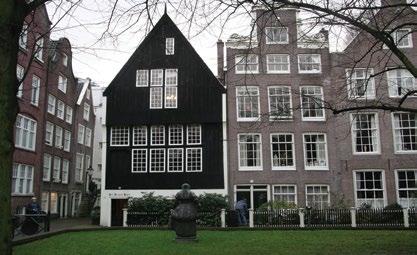
RAEPENHOFJE - This shelter for homeless women built in the 17th century is an excellent example of social architecture. It is one of the best examples of such houses in De Jordaan.

SEVERAL EXAMPLES OF DUTCH ARCHITECTURE
73 VOYAGER 8/2017
HUIS BARTOLOTTI _ the Bartolotti family home. Its arched façade is built in accordance with the radius of an Amsterdam canal. This house is an excellent example of 17th century Dutch architecture.
RIJKSMUSEUM _ The competition for the new state museum building was won by Catholic architect P. J. H. Cuyepers. The neo-Gothic structure, built in the style of the Dutch Renaissance, has been renovated several times.

SCHEEPVAARTHUIS _ The brick building adorned with symbols and many decorations, constructed in the early Amsterdam school style, was built on the very place where the first East Indian Company was started. The office building was built in 1916.
MUSEUM VAN LOON _ The building created in a sturdy and geometric style is located on Keizersgracht. Apart from the façade, the Van Loon family house is famous for its Baroque-style garden and many authentic details in its interior.
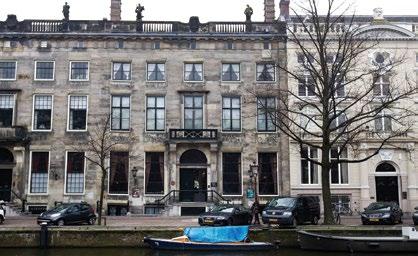

THEATER TUSHINSKI _ Created in Art-Deco style, this film theater’s architecture perfectly suits its function. The Hollywood Illusion of the 1920s is the main conceptual line of the project.

HET SCHIP (THE SHIP) _ This "Workers' Palace" was built by the Social Residence Association. The building is a breakthrough of the Amsterdam School of architecture with masterful craftsmanship and unusual planning. Its construction dates back to 1920.

FELIX MERITIS SOCIETY _ This 18th century building, where the Society of Arts and Sciences resided, is an excellent example of the architecture of the Enlightenment Period.
KONKLIJK PALEIS _ The building is erected in the classicist style of the Dutch golden age in 1648. 13 659 wooden pillars were used to build it.
BEURS (STOCK EXCHANGE)

_
This masterpiece of Berlage is the first example of modern architecture in the Netherlands. Because of its association with poets and artists, it is a true Gesamtkunstwerk. All facades of the building are individually made and differ from each other.

TUIMDORP NIEUWENDAM _
This is the first example of a so-called Garden Village – a residential area built after WWI. It is made in the style of rural Amsterdam. The oval streets with commercial spaces surrounding them are especially interesting.
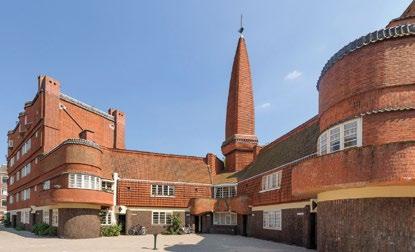
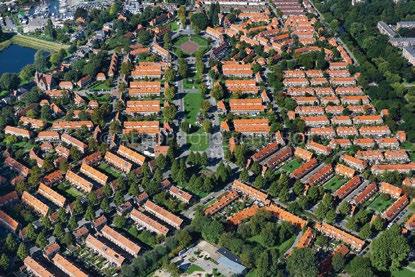
ARCHITECTURE 74 VOYAGER 8/2017
WOLKENKRABBER _ The first high-rise building in Amsterdam constructed in 1930 by J. F. STAAL, Berlage’s disciple. A combination of yellow brick with reinforced concrete and glass and a glass-lined central elevator shaft was quite a bold solution in that period.
NMB(ING) HOOFDKANTOR _
This building belongs to the postmodernism period but is reminiscent of experiments at the beginning of the century. The materials and eccentric forms are due to an attempt to be closer to nature. The building is energy-efficient and easy to maintain.
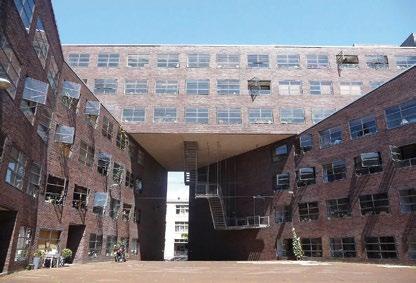

PIRAEUS (KOLHOFF& RAPP) _


This is a so-called "Metropolitan Superblock" combining all types of housing. Built on the site of former docks, it reflects its past in its architecture. The process of how the block functions and how many typologies coexist is very interesting.
OPENLUCHTSCHOOL (OPENAIR-SCHOOL) _ One of the outstanding examples of the NIEUWE BOUWEN (Dutch Modernist Movement). This children's rehabilitation center built in 1930 is constructed with the minimalism characteristics of the movement.
ING HOUSE – This building was constructed in 2002 as part of economic zone planned to be located near the airport. Its forms are partially influenced by its proximity to the airport. This high-tech building boasts numerous large patios, internal gardens, and glass screens etc., which can be partially seen from outside.

THE WHALE _ this residential house, nicknamed "the Whale" was designed by Frits Van Dongen in 2001. Its zinc facade changes color according to the weather, and its forms reflect the movement of the sun. 150 residential units receive maximum lighting. This building is the so called "landmark" of the district.
BURGERWEEHUIS _ Aldo van Eyck’s famous building is a realized example of the concept of structuralism. According to the idea of structuralism, this children’s house is constructed based on data from the children: transitions between private and public and between open and closed. The building is a classic item of world architecture.
OKLAHOMA HOUSE built by MVRDV is a distinct example of extraordinary solutions.
The architects brilliantly solved the problem of limited land and hangs 13 dwelling units over the street.



SILODAM MVRDV - Another interesting residential complex on the Silodam resembles a bundle of containers from a distance. The very complex and sophisticated planning and inter-correlation of typologies is achieved fairly well.

75 VOYAGER 8/2017
THE EAR
LASHA BUGADZE
History knows three famous stories about the ear: The first one is about the miracle, the second about creating sounds and a tragic inability to perceive them, the third about immense sadness, self-sacrifice and possible craziness.
The first ear is the gospel ear. Peter the disciple cut it off one of the slaves, Malcus, who wanted to capture the Savior. However, the one they were looking for quickly healed the ear: “Put your sword back in its place,” Jesus said to him. “For all who draw the sword will die by the sword” (Matthew 26).
The second ear is not associated with physical pain but with fatal unfairness: it was a noisy deafness where the music was initiated. This is Beethoven’s ear, which couldn’t perceive Beethoven’s music.
The third ear seems to carry Malcus’ essence (physical pain, fear, the miracle) and Beethoven’s deafness (internal voices, not from this earth) and something else as well, characteristic of this third ear alone: an inability to accept this world, along with its uncertainty, routine, hypocrisy and, most importantly, colors…
The world is much more precise than others imagine it to be.
A man with ginger hair and a beard put the wooden easel in the field, stretched the canvas and put his finger through the palette that had yesterday’s paint stuck to it. He was about to dip the oiled brush into a thickly-applied yellow when he heard crows that were sitting on the only tree in the vicinity.
The man had a special gun for scaring crows but did not fire it – neither towards the tree, nor in the air. The crows were noisy and the sun became even hotter in the afternoon. The cloth wrapped around the man’s head was wet with sweat.
He spread the glistening yellow on the canvas like butter… suddenly everything went quiet. The man placed the gun against his chest, and put that finger that used to lay on the palette on the trigger. The bullet pierced his heart.
VINCENT VAN GOGH, UNLIKE MALCUS, CUTS OFF HIS OWN EAR. THIS WAY HE AVOIDED SUBJECTING HIMSELF TO OTHERS – THE MORALIST CHARACTERS OF THE OBJECTIVE WORLD. IN THIS STORY, HE IS PETER, NOT MALCUS.
In reality, the painter cut off only the tip of his ear with a razor rather than the whole ear, though his self-portrait’s facial expression hints that he was not too happy about it.

He was much more devastated when he lost not only the tip of his ear, but his friend, Paul Gauguin.
The tip of the ear was cut off after Gauguin’s escape.
STORY 1
2
3
Self Portrait with Bandaged Ear, 1889.
76 VOYAGER 8/2017
Vincent van Gogh. London, Courtauld Institute Gallery
Paul Gauguin lived in the room painted by Van Gogh. He sat on the chair that featured in Van Gogh’s canvas and looked onto the blue walls that Van Gogh painted grey.

Gauguin searched for himself as an artist (he found his voice in Tahiti), while Van Gogh knew for sure that as Cezanne described the outside world, he had to depict his own self becoming that world (an idea expressed in a letter to his brother, Theo).
Van Gogh was a Christian idealist (his father was a pastor). Though no one could guess, he expressed gospel stories and sermons in his works. Gauguin was attracted to the reality which lay beyond civilization – rather the ideas. He was drawn to the immaculate world…
It is possible that on that fateful night they argued over the divergence of ideas:
Van Gogh threw the chair known as Gauguin’s chair and hammered it into the walls that he saw as blue; he was so angry that Gauguin left the room. He later painted it without Van Gogh or Goggin. He carried the razor he later used to cut off the tip of his ear.

Gauguin left, never to come back. Van Gogh came back to his dark room (in reality, it was much less colorful than in his paintings) and angrily swished the razor against his ear.
VAN GOGH WAS A CHRISTIAN IDEALIST (HIS FATHER WAS A PASTOR). THOUGH NO ONE COULD GUESS, HE EXPRESSED GOSPEL STORIES AND SERMONS IN HIS WORKS. GAUGUIN WAS ATTRACTED TO THE REALITY WHICH LAY BEYOND CIVILIZATION –RATHER THE IDEAS. HE WAS DRAWN TO THE IMMACULATE WORLD…
Gauguin's Chair, 1888. Vincent van Gogh. Amsterdam, Van Gogh Museum
77 VOYAGER 8/2017
The Bedroom , 1888. Vincent van Gogh. Amsterdam, Van Gogh Museum
Van Gogh was found in a barely alive state in his own bed.

His brother Theo came to see him. Theo was Vincent’s rational and peaceful alter ego. He brought Vincent back to life. However, the objective world deemed him insane (and that was probably true), so once he was physically better (though his ear was never whole again), he had to live in the house for the “infirmed in soul”. Fortunately, he was able to paint there and he always had a palette, brushes and paints sent by the caring Theo.
Van Gogh calmed down. Or so he appeared.
Despite the fact that his fellow citizens complained when they saw Van Gogh in the street, he still managed to work in the field. The strangest thing was (and rightfully concerned citizens, who were very anxious about the fact) that he constantly carried a pistol to scare crows away. Crow screech sounded like a hostile threat of the objective world in what was left of his ear.
He was probably trying to get rid of these noises when he used that pistol to kill himself…
Theo did not live long after that event himself, dying half a year later. Van Gogh proved to be dangerous not for the objective world but for his own self.
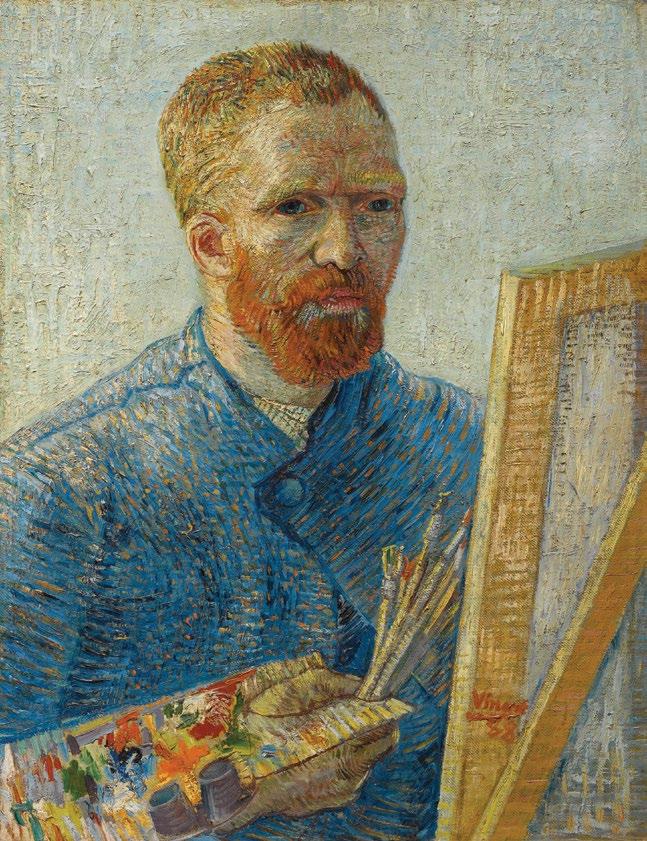
The brothers were buried side by side.
4.
TWO HISTORIC FACTS:
1.VAN GOGH DID NOT CUT OFF THE TIP OF HIS EAR. GOGGIN DID, DURING THE FAMOUS RAZOR FIGHT. GOGGIN USED TO BE A GOOD SWORDSMAN AND VAN GOGH PROBABLY DID NOT KNOW IT.
2.VAN GOGH DID NOT COMMIT SUICIDE. HE WAS KILLED BY THE VILLAGE BOYS WHO WANTED TO SCARE THE CRAZY MAN WHO CAME OUT TO PAINT.
 Self-Portrait as a Painter, 18871888. Vincent van Gogh. Amsterdam, Van Gogh Museum
Sorrowing old man ('At Eternity's Gate') 1890. Vincent van Gogh. Kröller-Müller Museum, Netherland
Self-Portrait as a Painter, 18871888. Vincent van Gogh. Amsterdam, Van Gogh Museum
Sorrowing old man ('At Eternity's Gate') 1890. Vincent van Gogh. Kröller-Müller Museum, Netherland
STORY 78 VOYAGER 8/2017
The Starry Night. Vincent van Gogh. Museum of Modern Art, New York City
VAN GOGH MUSEUM KRÖLLER-MÜLLER MUSEUM

The Kröller-Müller Museum boasts the second-largest Van Gogh collection in the world: almost 90 paintings and over 180 drawings. The Van Gogh Gallery displays varying selections of about 40 works by Vincent van Gogh. Furthermore, you will also find masterpieces by modern masters such as Claude Monet, Georges Seurat, Pablo Picasso and Piet Mondriaan.
The Van Gogh Museum in Amsterdam is one of the most popular museums in the world, attracting visitors from every corner of the globe. Naturally, this is in large part due to it housing the largest collection of works by Vincent van Gogh – more than 200 paintings, 500 drawings and 700 of his letters. Having originally opened on Museumplein in 1973, the Van Gogh Museum has been expanded and modernised over the years, ensuring it's a truly cutting-edge exhibition and visitor space.
For both locals and far-travelling visitors, the Van Gogh Museum is a unique and inspirational experience. Alongside the legacy of Vincent van Gogh's instantly recognisable impressionist works, such as his landscapes, self-portraits and still lifes –especially ‘Sunflowers’ – the museum provides opportunities to track the artist's development and compare his paintings to works by other artists from the 19th century – those who inspired him and those who drew inspiration from him.
THE VAN GOGH MUSEUM SHOP
Looking for exclusive gifts, design, jewellery, souvenirs, posters or books about Vincent van Gogh?


The Van Gogh Museum shop and online store offer a wide selection of


products inspired by the life and work of Vincent van Gogh.
The museum shop is located in the entrance hall of the museum. Profits from the Van Gogh Museum shop are used to further develop the museum’s collection.
You’ll find our bookshop on the third floor of the museum. With around 1,500 titles, it’s a treasure trove of information about Vincent van Gogh, his works, his life and his art. There’s also plenty of material focusing on his contemporaries and a special children’s book corner. The shop has a reading table overlooking Museumplein.
Opening hours: Monday - Thursday: 09:00 until 18:00 Friday: 09:00 until 22:00 Saturday - Sunday: 09:00 until 18:00. Ticket price: for adults - 17 €, 18 years free. Museumplein 6 www.vangoghmuseum.nl
The Van Gogh Gallery is a gallery in honour of Vincent. The gallery displays varying selections of about 40 of his paintings, which tell the story of his life and work, from his novice years in the Belgian Borinage to his untimely death in the French village of Auvers. Today Vincent van Gogh (1853-1890) is one of the world’s most famous artists, but he received little recognition during his lifetime. He sold very few works and was supported
financially by his brother Theo. At the start of the 20th century he was still only celebrated in small circles. The art teacher H.P. Bremmer was among these admirers. He regarded Van Gogh as one of the ‘great spirits of modern art’ and advised Helene Kröller-Müller to purchase his work. Between 1908 and 1929, together with her husband Anton, she accumulated the unique collection that is now preserved in the museum. The attention that the Kröller-Müller’s devoted to Van Gogh has contributed greatly to the recognition that his work currently enjoys.
One of Europe’s largest sculpture gardens. In the sculpture garden, one of the largest in Europe, you can enjoy both sculptures and nature. Distributed throughout the garden are over 160 sculptures by iconic artists, from Aristide Maillol to Jean Dubuffet, from Marta Pan to Pierre Huyghe.
Opening hours: Tuesday through Sunday 10.00 to 17.00 hrs (the sculpture garden: 16.30 hrs). The museum is closed on Monday.
Houtkampweg 6; 6731 AW Otterlo
Irises , 1890. Vincent van Gogh. Amsterdam, Van Gogh Museum
Portrait of Madame Roulin, 1889. Vincent van Gogh. Kröller-Müller Museum, Netherland
Terrace of a café at night, 1888. Vincent van Gogh Kröller-Müller Museum, Netherland
Sunflowers ,1889. Vincent van Gogh. Amsterdam, Van Gogh Museum
79 VOYAGER 8/2017
DANCING – AN INTERNATIONAL LANGUAGE
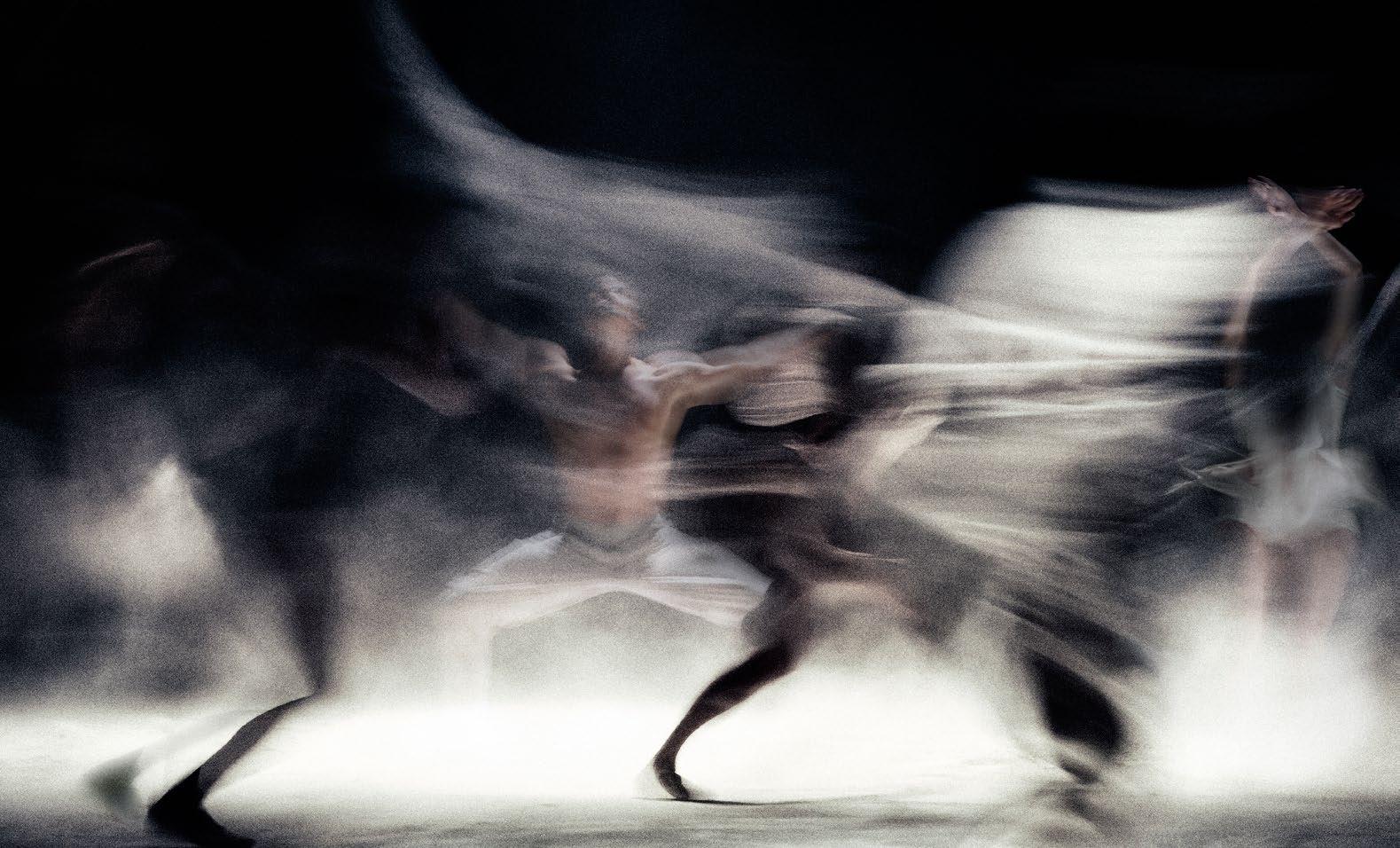 IRINA BAGAURI
IRINA BAGAURI
YOU WILL ENCOUNTER BEAUTIFUL PEOPLE OF DIFFERENT RACE, SKIN AND HAIR COLOR DANCING IN THE HAGUE, AMSTERDAM AND ANY OTHER DUTCH TOWN. IT MAY BE THAT YOU'RE JUST LUCKY AND YOU'VE SEEN THE NEDERLANDS DANS THEATER: DANCERS CHOREOGRAPH A ROUTINE, LEAVE THE STUDIO AND REHEARSE IN CROWDED PLACES, PARKS, SIDEWALKS AND SUBWAY STAIRS.
Nothing unusual: No one is surprised any more by this non-traditional way of interacting with the audience. Nothing really surprises people in general in Holland, where the right of self-expression is golden and the Nederlands Dans Theater expresses freedom of art through body language.
NDT _ Nederlands Dans Theater is one of the world's most celebrated and productive modern dance companies. It has nearly 60 years of history and international recognition. The word ‘international’ is the most accurate adjective for this company, at which almost every major choreographer of the 20th and 21st centuries has worked to uncover new forms of body language.
ART
80 VOYAGER 8/2017
© Rahi Rezvani, Nederlands Dans Theater, by Sol León & Paul Lightfoot, Stop-Motion.
At a time when some European ballet companies still pay attention to ethnic origins, Nederlands Dans Theater, jokingly called "United Nations” by the great choreographer Mats Ek, claims that multi-ethnicity and multi-culturalism is a guarantee of success.


Dancing has no nationality either, even classical dancing. The story begins with the performances for the Sun King, Louis XIV. Thanks to these performances, the concept of classical ballet was formed. It spread from France to Europe.
French national Marius Petipa developed ballet at the Russian Emperor’s court. Impresario Daghilev’s tour at the be -
RIGHT OF SELF-EXPRESSION IS GOLDEN IN HOLLAND, AND THE NEDERLANDS
DANS THEATER EXPRESSES FREEDOM OF ART THROUGH BODY LANGUAGE.
ginning of the 20th century breathed new life into St. Petersburg and spread across the west the movement known as Russian modernism.
The history of classical dance is one of a big exchange, and despite the fact that there are distinctive schools, methods and processes, it is almost impossible to claim that it originated in one particular nation.
In 1959, Benjamin Harkarvy, American ballettmeister and student of Michael Fokine, one of the most important representatives of Russian modernism, moved the country’s main ballet company and 18 dancers from the Dutch National Bal-
 © Rahi Rezvani, Nederlands Dans Theater, by Sol León & Paul Lightfoot, Stop-Motion.
© Rahi Rezvani, Nederlands Dans Theater, by Sol León & Paul Lightfoot, Stop-Motion.
© Rahi Rezvani, Nederlands Dans Theater, by Sol León & Paul Lightfoot, Stop-Motion.
© Rahi Rezvani, Nederlands Dans Theater, by Sol León & Paul Lightfoot, Stop-Motion.
© Rahi Rezvani, Nederlands Dans Theater, by Sol León & Paul Lightfoot, Stop-Motion.
© Rahi Rezvani, Nederlands Dans Theater, by Sol León & Paul Lightfoot, Stop-Motion.
81 VOYAGER 8/2017
let from Amsterdam to The Hague and founded Nederlands Dans Theater.
The company’s first decade coincided with youth protest groups, new political, social and anti-religious activities, and women's movements in the Netherlands. It was an era of protest and rallies, and the new company, with the aim of abandoning traditional dance forms, got caught up in the adventures of the time. This was expressed by deconstructing the classics and staging provocative shows. The NDT received the reputation of being a "bad boy". The beginning, they say, was difficult.
The Theater achieved true glory and recognition and was put on the world theater map under the leadership of Czech Jiri Kylian, who worked in the company for nearly 30 years until 2004. Kylian is the greatest contemporary choreogra-
pher. He has “surrealist" handwriting, poetic thoughts and a unique, lyrical style. The traces of his creativity and influence are evident almost everywhere he has worked
Following Kilian's arrival, the Nederlands Dans Theater was divided into three parts:
NDT 1 _ they say in the Netherlands that it is a company of 28 phenomenal dancers aged from 24 to 38 years, all of them soloists.
NDT 2 – this dance company consists of 16 young dancers with great potential. Members have worked with many of the world’s prominent choreographs, but they may not be able to enter NDT 1 (Georgian viewers had an opportunity to enjoy NDT2 in June 2017 at the Tbilisi International Ballet Festival).
Per Kylian’s initiative, NDT 3, was for dancers older than 40, though the company was dismantled in 2006.

Most company members have received a classical ballet education, although some have transferred from different dance companies because individualism is valued more than technical expertise here.
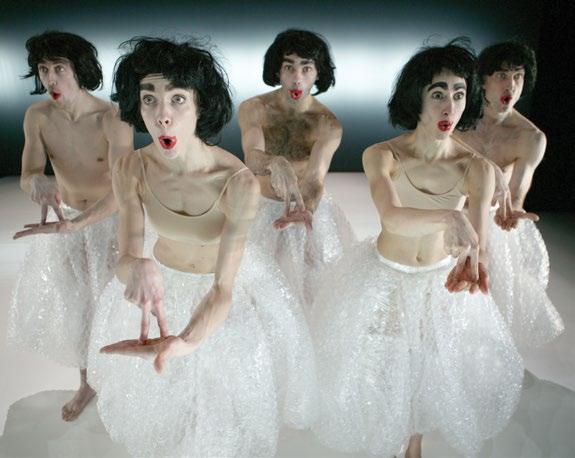
Not only has Jiri Kylian created his own masterpieces, he has invited leading choreographers from around the world to work with the Nederlands Dans Theater, and thus NDT has become the most important modern dance company.

Mats Ek, Hans van Manen, Wayne McGregor, William Forsythe, Had Naharin and Alexander Ekman are just a few of
 © Rahi Rezvani, Nederlands Dans Theater, by Sol León & Paul Lightfoot, Safe as Houses.
© Sharon Mor Yosef, Nederlands Dans Theater, by Jiri Kylián, Tar and Feather.
© Rahi Rezvani, Nederlands Dans Theater, by Marco Goecke, Woke up Blind.
© Rahi Rezvani, Nederlands Dans Theater, by Sol León & Paul Lightfoot, Safe as Houses.
© Sharon Mor Yosef, Nederlands Dans Theater, by Jiri Kylián, Tar and Feather.
© Rahi Rezvani, Nederlands Dans Theater, by Marco Goecke, Woke up Blind.
ART
© Sharon Mor Yosef, Nederlands Dans Theater, Tar and feathers
82 VOYAGER 8/2017
the choreographers who have worked in the Nederlands Dans Theater. The ballets in the repertoire of the company are created specifically for NDT, which gives the dancers the great privilege not only to perform but also to take part in the creative process. Thus, a very large part of Kylian’s dancers do the choreography as well. Paul Lightfoot, the current art director of the Nederlands Dans Theater, is a clear example of this, leading with his inseparable partner, dancer Sol Leon.

The motto remains the same: "The main thing is not the choreography, but the creative process itself". Thus, NDT spends
a lot of effort creating a magical atmosphere for presentations, including lights, costume artists and stage production.
The Nederlands Dans Theater is located in The Hague, but the company is often seen on other major Dutch stages such as Amsterdam's Het Muziektheater and Neumeyen Stadsschouwburg.
If you are able to do so, do not hesitate to attend an NDT performance. Wherever the dancers are, and no matter how much they are involved in the performance, they will definitely "speak" in a "language" that you understand.

 © Joris-Jan Bos, Nederlands Dans Theater, by Hans van Manen, Two.
© Rahi Rezvani, Nederlands Dans Theater, by Franck Chartier, The lost room.
© Joris-Jan Bos, Nederlands Dans Theater, by Hans van Manen, Two.
© Rahi Rezvani, Nederlands Dans Theater, by Franck Chartier, The lost room.
83 VOYAGER 8/2017
NO ONE IS SURPRISED ANY MORE BY THIS NONTRADITIONAL WAY OF INTERACTING WITH THE AUDIENCE. NOTHING REALLY SURPRISES PEOPLE IN HOLLAND IN GENERAL.
FASHION
VIKTOR & ROLF
Viktor Horsting and Rolf Schneren are the founders of one of Amsterdam's world-famous fashion houses. They consider themselves “fashion artists" as in addition to ready-to-wear clothes, they produce perfume.

The couple began working in Paris, and then returned to Amsterdam to create new designs. Today, Viktor & Rolf has become an international star on the "high fashion" sky. Their different approach distinguishes their collections; Cubism is only one part of their style.

Viktor and Rolf lean towards clothing rather than other areas of fashion as they can freely express their creative ideas more easily in this space. Their work is always characterized by some sort of irony or humorous approach - there is a lot of wonder here, followed by something funny and then by something beautiful ... The designers themselves often take part in theatrical shows and stage performances on the catwalk. They also take pictures of mirror reflections of each other.
IRIS VAN HERPEN

Iris van Herpen was a student of Alexander McQueen, and her influence is immediately visible. Her works are futuristic, multi-minded, sculptural and sophisticated thanks to their unusual blend of Dutch pragmatism and authentic aesthetics.


Van Herpen presents amazing visions in Arnhem, from transparent glass-like lace, to moss-covered-like textiles. Despite
Their commercial ventures are also successful. In 2017, they presented a new bridal collection called "Viktor & Rolf Marriage", which simultaneously enchanted all viewers with satin ballroom dresses and slippery asymmetric cylinders.
this strangeness, each of her works has traces of inherent elegance.
Van Herpen always uses strange things, unusual textiles, and turns shapes them into something no one else could do. The designer’s main principle is cooperation with creative people.
Truly, Iris' work has traces of business interactions with the most famous artists, sculptors, architects, musicians and photographers.
STYLE
84 VOYAGER 8/2017
DESIGN
Pragmatic and with a distinct sense of humor – this is how critics describe Dutch design. Ever since Dutch designers created New York’s famous MoMA Café in 1994, everybody has been talking about the design miracle from this small country. This new wave of designers didn’t come out of nowhere, however, and their work is built on tradition.
In 1918, the neoplasticism movement highlighted the Netherlands as a center of design. Artists Theo van Doesburg, Gerrit Rietveld and Piet Mondrian focused on simplicity and abstraction. The popularity of the movement began with Rietveld’s Red and Blue Chair.
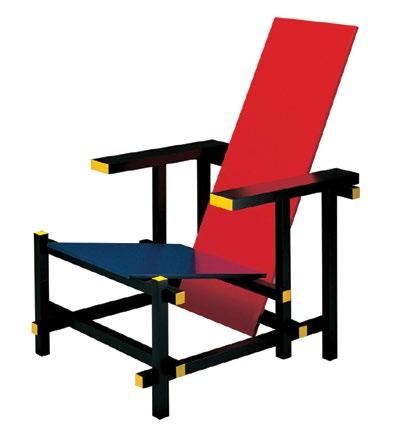
In 1980, Dutch design saw another flourishing period. Dutch designers were leading participants in movements in the field of industrial design - Designum (1980), Droog Design (1993), Moooi (2001). Amsterdam to this day remains an international center of design.
Studio Job - The founders of Studio Job are Job Smeets and Nienke Tijnagel. Their works exist on the border between art and design. Their works created for Moooi, Makkum and Bisazza are part of museum collections. You can view Studio Job's chandeliers in SOLO lounges.
Tejo Remy
Tejo Remy works on interior and pub lic space design in Utrecht, together with partner René Veenhuizen. He has created objects for Droog such as chests of drawers, rag chairs and milk bottle lamps. You can view his works in some of the world’s best design museums.
Marcel Wanders

Marcel Wanders' first famous design was the Knotted Chair, which he created for Droog Design in 1996. He is now working with the best design companies in Europe such as B & B Italia, Bisazza, Poliform, Moroso, Flos, Boffi, Cappellini and Droog Design. He is co-owner and artistic director of Moooi.
Gerrit Rietveld (1888-1964)
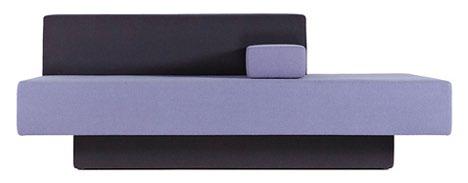
Dutch designer and architect Gerat Rittveld is known for his Red and Blue Chair, created in 1917 for the Rietveld Schröder building, which is a UNESCO World Heritage site.
In 1918, he started his own factory and became a member of the Dutch art movement De Stijl, which greatly influenced his work.
Christien Meindertsma created his brand Flocks in 2003 and designs knitwear, interior design items and clothes. His creations are on show in exhibitions around the world. They are part of permanent collections at the Victoria & Albert Museum in London and MOMA in New York City.

Willem Hendrik Gispen
Willem Hendrik Gispen (1890-1981) is a designer and architect known for his modernist office chairs made of metal pipes.


His designs, lamps and furniture are widely known across Europe. Gispen’s works are known for reintroducing a functionalistic style originating in the Bauhaus movement.
Joep van Lieshout
Jup Van Lahout is one of the most well-known and commercially successful artists in the Netherlands. His designs, including AVL Shaker and AVL Office Chair, are modern classics. He created Atlee Van Lieshout in 1995, which surprised and continues to surprise the world of design.
 Christien Meindertsma
Christien Meindertsma
85 VOYAGER 8/2017
THE SPORTING GOLD AND SILVER OF THE NETHERLANDS
BIDZINA BARATASHVILI
In every other country of the world, ice skating means figure skating or hockey, but in the Netherlands, it means speed skating. Of course, this exists in other countries as well, but the Netherlands is the only country where speed ice skating is the national sport, which is also reflected in its Olympic medals. The Netherlands have won 35 gold medals in this discipline.
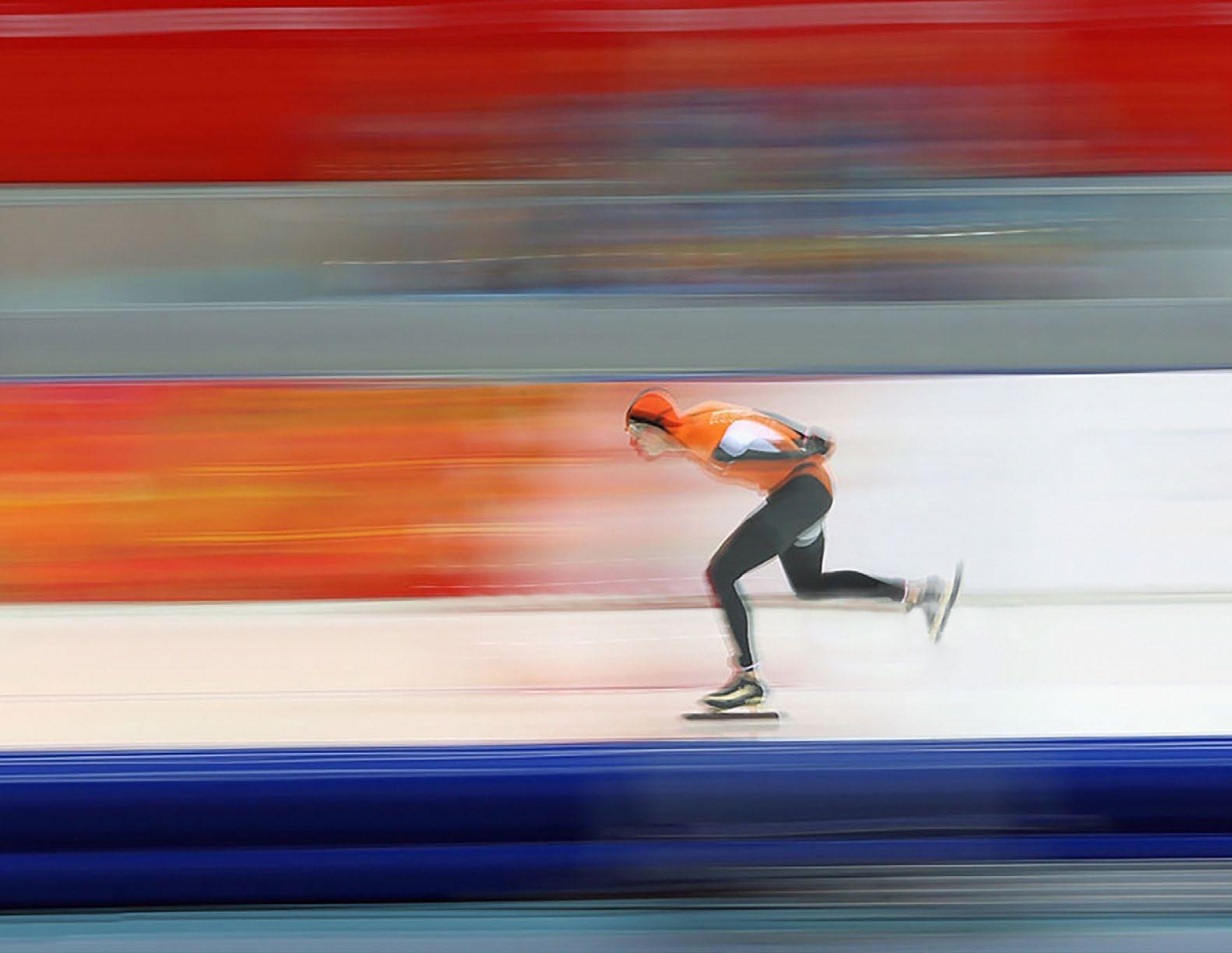
SPORT
86 VOYAGER 8/2017
The history of Dutch sports is very diverse and praiseworthy, especially taking into account the size of the country. Local athletes, national teams and club teams are successful in almost every popular sport variety.


The Dutch have won 395 medals in the Summer and Winter Olympics (122 of them gold) and in 1928 hosted the Main Forum of Sports in Amsterdam, where several unique events took place. The most important development was that the games that took place in Amsterdam were the first to be called the Summer Olympics! The rest of the novelties: the format of the Olympics was changed from lasting serval months to 16 days – the format that is still in force today. Greece had officially received the honor to open every Olympic games parade, and the Olympic fire, since then, burns non-stop from the beginning of the tournament to its last day.
The Netherlands has won the most Olympic Gold medals35 in speed skating – which is not surprising. It is true that historically the Kimerians were credited for inventing ice skates (4th millennium BC), but it was the Dutch who began to arrange long-distance skate runs in medieval Europe.
In addition, the first mention of the word "skate" is in the Gemach English-Dutch dictionary (1648). The first unofficial world tournament was hosted in Amsterdam in 1889. The first official tournament was also held here in 1893 and was won by Jaap Eden. Eden should be considered the first legend of Dutch sport.

In the following years, he repeated his achievement twice (in 1895 and 1896), and in 1894-95 he twice became the world champion in cycling, which has not been achieved yet by any other man (two women have managed this feat: American Sheila Young and German Christa Rothenburger).
Eden's name became a promotional brand, and was borrowed by several alcoholic beverages, chocolate and even a new brand of cigarettes.
Ard Schenk - Another distinguished speed skater can be considered the successor to Eden. The three- time 1972 Olympic Champion is the only athlete to have a flower named after him! You can still buy the Schenk crocus at floral markets in different cities of Netherlands.
By the way, Schenk, whose collection apart from his Olympic medals includes gold medals from World and European championships (3 and 3 respectively) and 18 world records, was born in a settlement with the very strange name of Anna Pavlovna! The town received its name from the land that was reclaimed from the sea (the so-called Polder) which, in turn, was named after the wife of King Willem II, the daughter of the Russian emperor Pavel I.
I will finish my story on Dutch speed skating by telling you about the current world champion, 31-year-old Sven Kramer, who is still an active athlete and can even improve his own results: 3 Olympic, 28 World Tournament (team races and solo race) and 9 European Tournament Gold Medals!
Dutch soccer is another story.
There is no other team with such bad luck in the history of the World Cup!
Judge for yourself: The Netherlands has reached the Mundial final three times and lost the decisive match on all three accounts (1-2 against Germany in 1974, 1-3 against Argentina in 1978, and 0-1 with Spain in 2010). Twice they have had to play against the host (1974, 1978), and twice (1978, 2010) the match was decided in extra time...
 1. Jaap Eden, the multi-time speed skating champion
2. Olympic champion of 1928, a female gymnast team
3. Olympic Games in 1928 in Amsterdam
1. Jaap Eden, the multi-time speed skating champion
2. Olympic champion of 1928, a female gymnast team
3. Olympic Games in 1928 in Amsterdam
87 VOYAGER 8/2017
4. Wim Van Hakeem and Johan Cruyff, 1973
SPORT
Interestingly, the Dutch have a history with each of these three rivals. Argentina can be considered a "friend". The wife of the current king, Willem Alexander, Queen Maxima, whose last name is Zorreguieta, grew up in Buenos Aires and the popularity of Argentinian restaurants in Amsterdam is attributed to her. But Spain and Germany, on the contrary, were always considered rivals of the Dutch. Spain rivalled Dutch independence, which was finally achieved in 1581, led by Willem of Orange, but they still had to go through 80 years of war (1568-1648).
The Netherlands’ confrontation with neighboring Germany is even stronger. To leave out the medieval period, during the World War II occupation, 50,000 Dutch Jews were killed and the "Luftwaffe" bombings practically destroyed Rotterdam. The Georgians contributed to this fight against fascism during the revolt on Texel Island.
By the way, the issue of war with Germany was reflected in the history of Dutch sport. There are two examples: the legendary Feyenorord Rotterdam midfielder and Dutchman Wim Van Hanegem lost his father and two older brothers during the war. It is not surprising that he always played with special commitment against the German teams and never hid his antipathy.
The story of the Olympic champion of 1928, the members of the team of women's sportsmen and their coach is even more striking. 5 out of 12 gold medals went to Jews, and four of them were killed in the Holocaust: Stella Augusterbee died in Auschwitz; Lea Norhheim, Ana Dresden-Polyak, Judica Simons and their coach Gerat Klikopfer died at the Sobibor concentration camp. There was also Elka de Levi, who miraculously survived. In 1997, the team was honored in the Jewish Sports Hall of Fame.
Many fans and journalists started to chart the history of Dutch football in the 1960s and 1970s when Feyenoord Rotterdam and then "Ajax" of Amsterdam won four times in a row, and the national team, due to Rinus Michels’ skill and the flawless talent of Johan Cruyff threatening the whole world. Of course, there is a grain of truth in this, but what about the fact that the Netherlands is still mentioned in 1904 as one of
the seven FIFA founders, and the team became bronze medalists of the Olympics two years before the world championship (1908, 1920)? National football team leader Harry Dens made an Olympic pledge at the above-mentioned Amsterdam games. The Netherlands were not left out of Mundial either. They skipped the 1930 tournament, like almost every European country, but presented a full team in Italy (1934) and France (1938).
In 1937, the Olympic Stadium in Amsterdam hosted a Central and Western European team meeting, where Bertus Caldenhove, Bep Bakhuys, Leo Halle, Bas Paauwe, and Kikc Smith were to defend the national dignity.
The nineteenth national team has long retained their presence and played the crucial role of Cruiff’s predecessors in the Netherlands, Faas Wilkes and Abe Lesntra. First of all, he was invited to compete with the British in the European team in 1947, and then defended "Valencia" and Milan "Inter". They loved him so much in Milan that they named a street after him. There is no Lenstra street, though "Heerenveen" stadium is named in his honor.
This list can go on indefinitely. We are short of space to talk about the success of the Dutch in swimming (22 Olympic golds), cycling (18) and grass hockey (5), but at last we should mention the gold medalists of Paris in 1900: Rolof Klein and François Antoine Brandt.

The point is that in order to reduce their gravity, Dr. Brockmann who stood by the steering wheel, was replaced by a 7-year-old local boy, who managed to sail. This unknown boy became the youngest Olympic champion in history. Paata Natsvlishvili, a well-known Georgian researcher, claimed last year that this boy could have been Giorgi Nikoladze in Paris at that time!
Even if this hypothesis is approved, Nikoladze's gold will be considered to be Dutch, but the fact would have been remarkably symbolic for us - this is Giorgi Nikoladze, whose name is associated with the start of Georgian sporting history ...
 1. Gold Medalists of the 1900 Paris rowing tournament – Roelof Klein and François Antoine Brandt with an anonymous boy.
1. Gold Medalists of the 1900 Paris rowing tournament – Roelof Klein and François Antoine Brandt with an anonymous boy.
88 VOYAGER 8/2017
2. Giorgi Nikoladze
EDUCATION IN THE NETHERLANDS

The Netherlands’ higher education is known for its high quality. More than 2,100 international training programs and courses bear witness to this fact. It has the largest number of English language programs and relatively favorable prices in continental Europe.
112,000 international students from 164 countries, including 22,189 German, 4,347 Chinese, 3,347 Italian, 2,976 Belgian and 2,778 British students were admitted to bachelors and masters programs in the Netherlands in 2016-2017. This is the highest rate in history. Foreign students often select the following schools:
1. Economics and Business
3. Engineering.
2. Human and Social Sciences
According to the experts, the relatively low cost of learning and living in this country explains foreigners’ desire to get an education in Holland. Education costs start at 1,950 Euros per year for EU member states; undergraduate fees for international students are from 6,000 to 15,000 Euros and graduate school costs from 8,000 to 20,000 Euros. According to the study, students’ living expenses range from 800 to 1,100 Euros per month. Student discounts are available in museums, cinemas, restaurants and cafes.
• 95 percent of the Dutch speak English. There are many possibilities for obtaining a study grant. Teaching methods involve active interaction, which promotes critical thinking.
• The Netherlands is considered one of the safest countries in the world. According to the Global Peace Index 2016, Holland is one of the top ten leaders in terms of the world's happiest countries.
• It takes 3 hours by train to Paris, and only 5 hours to London or Berlin from Amsterdam.
• The Netherlands is ranked as the 17th economically developed country in the world (Philips, Heineken, KLM, Shell, Unilever, ING).
• Because the government wants to attract talented young people to the country, after graduation, students can stay for one year and get a job. After three years, they are also entitled to start a business.
EDUCATION
HOLLAND? 89 VOYAGER 8/2017
MARIKA SHALIKASHVILI
WHY
DELFT UNIVERSITY OF TECHNOLOGY
“Delft” is the oldest and largest state technical university in the Netherlands. It was founded by William II in 1842 for civil engineers. It was named after the Royal Academy and trained civil servants to work in the Dutch East India Company. In 1864, "Delft" was named the best polytechnic school. After World War II, the number of students attending the school has grown significantly and has reached 20,000. A quarter of the student body are international students. "Delft" occupies the 20th place among the best engineering technology schools in the world. Many of its graduates have received the Nobel Prize, including Yakobus Henrikus Vandt Hop and Simon Van Der Meer.
UNIVERSITY OF AMSTERDAM

Founded in 1632, the University of Amsterdam is the third largest in the Netherlands, with around 30,000 students per year. UVA is known for its social sciences and humanitarian schools. The 150 courses offered in English attract 3,000 students annually from 100 countries around the world. The main campus is located in central Amsterdam and various buildings are scattered throughout the city. UVA is Europe's largest research university. Four million books and thousands of manuscripts, letters, maps and rare works are preserved in its central library.
WAGENINGEN UNIVERSITY AND RESEARCH CENTER
"Wageningen" is one of the best educational institutions in the world in terms of agriculture and environmental protection. 10,000 students study here. 20 percent of the student body are international students due to the abundance of English language courses.
An M.A. degree is available in English language only. "Wageningen" is located near the German border. The main motto of the institution is: “To explore the potential of nature to improve the quality of life”.
ERASMUS UNIVERSITY OF ROTTERDAM


Erasmus University’s main emphasis is on health, state management, media and culture. Students receive their education in international classrooms where lecturers and students are from different countries.
"Erasmus" has been launched across four campuses, including Campus Woudestein, which is called "Erasmus" heart. Here you can see the pavilion where the theater and exhibition space are located.
LEIDEN UNIVERSITY
The Netherlands's oldest university was founded in 1575. The Royal Family members studied here, and therefore, the University of Leiden maintains close links with the Royal Family of the Netherlands. Leiden University has educated many prominent politicians and intellectuals.
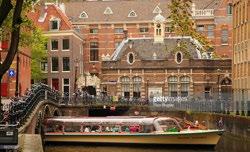
Spinoza and Descartes studied here during the Golden Age of the Netherlands. 16 Nobel Prize winners are associated with “Leiden”, for example Albert Einstein and Enrico Ferm. 200 courses are taught in English.
There are two directions of higher education in Holland: research (study in research universities) and professional (taught in universities of applied science). The main language is Dutch, but following the Bologna process, more and more English-language learning programs have emerged.
Universities focused on research in the Netherlands emphasize free and independent thinking, and the main goal of colleges is to develop a particular direction in students for their future careers.

The best universities in the Netherlands, especially in agriculture, hydro engineering, and medical fields, offer 200

educational programs. They provide theoretical and practical knowledge for future employment in institutions where the highest-profile qualifications are mandatory.
Graduates work in different areas, including trade and manufacturing, social services, health care, and the public sector. Universities combine academic research and teaching. University education focuses on training in academic disciplines. Individuals find their own financial aid and apply their knowledge in their future employment.
There are 13 universities in the Netherlands, including three technology universities. Wageningen University is financed by the Ministry of Economy and Agriculture.
EDUCATION TOP 5 UNIVERSITIES IN THE NETHERLANDS
90 VOYAGER 8/2017
OPPORTUNITIES FOR GEORGIAN STUDENTS
Georgian students who want to continue their studies in the Netherlands often face the same problem: higher research universities do not recognize the Georgian school diploma because it does not match the Holland school diploma. For this reason, Georgian students can only study in the Kingdom of the Netherlands if they cover their first course in Georgia. After that, they have to start their studies at the first level in Holland.
The alternative option is to pass a one-year preparatory course on the spot, though in this case Georgian students will not be given any advantage. The American-Georgia Education Center and the International Academy "Logos" has held negotiations with the Dutch side and has found several options.
The first discussed option involves obtaining an examination marks list along with a school diploma. In addition to a student’s academic performance, the paper will be used to prove their high qualifications.
Another possible option is to pass the unified national exams in Georgia, and if the minimum necessary score is reached, the university in the Netherlands makes a decision on acceptance.
One more opportunity to avoid losing a school year is to pass an SAT exam. There is also a minimum margin, but the higher the score, the greater the chance of getting into a Dutch university.

Most Georgian students receive their education at the Liberal Arts and Sciences College, Utrecht University, Erasmus University, and University of Amsterdam. It is quite difficult to get into these institutions because they do not recognize the Georgian diploma. Enrollment is possible only in the case of international baccalaureate courses, offered in only two schools in Georgia - European School and New School. In addition, a lot of extracurricular activities are necessary – you won’t surprise anyone with good academic performances and gold medals of excellence.
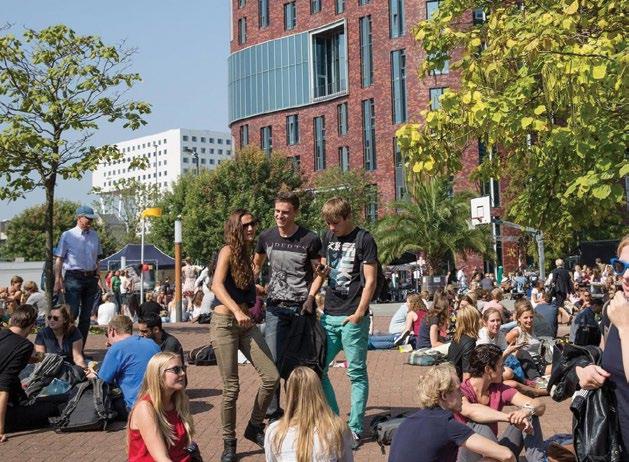
The so-called creative industry is getting more and more international recognition in the Netherlands. The most powerful fields are interior design, architecture, fashion and gaming. Due to this strong curriculum, the Netherlands is the epicenter of innovation for designers.
In the global innovation index, the Netherlands is in fourth place ahead of countries such as America, Finland, Germany and Japan. The country is distinguished for its product design; the designer's vision is the main measurement here.
The country also focuses on design management and services: 1. Interior - furniture and lighting; 2. Graphic Design Typography, Brands Design, Illustration; 3. Branding - airports, railway stations; 4. Arrangement of public spaces - street furniture; 5. Medical equipment; 6. Arrangement of recreational zones - bicycles, yachts; 7. Design of museum spaces; 8. Interactive Design - Games, Movies and Animation.
Design Week, which is held every year in Eindhoven, is the main creative event of the year in the Netherlands. According to Forbes, Eindhoven is one of the most active places in the world of inventions. There are 22.6 applications for every 10,000 inhabitants in the field of patenting of a particular idea or product. On average, one patent is created every 20 minutes.
EINDHOVEN DESIGN ACADEMY
The New York Times named this school as the world's best design academy. It offers courses in art, design and architecture. The Hanze University of Applied Science offers programs in graphic design, illustration and animation.
For those interested in studying industrial design, we recommend Eindhoven University of Technology and The Hague University of Applied Sciences. Those interested in studying photography, advertising and product design should be interested in the Willem de Kooning Academy, which offers 10 undergraduate programs.
COMMENT 91 VOYAGER 8/2017

REGULATION
92 VOYAGER 8/2017
THE STORY OF RED WINDOWS
BIDZINA BARATASHVILI
Several things come to mind when mentioning Amsterdam and Holland on the whole: Van Gogh and the Rembrandt museums, cheese, tulips, windmills, Klomps (national wooden shoes), coffee shops and of course the passionate ladies of the Red Light District! The order of the items on this list may change, but the content usually stays the same…
After every visit to Netherlands—fortunately this happens often—my balcony has new colorful crocuses, the fridge new cheeses of different varieties, and my relatives—textile Klomps!
I could maybe use the windmills at home too, though I have never attempted to bring them back with me. I’d love to bring the works of Van Gogh and Rembrandt too, though I doubt anyone would give them to me…
Thus, “restricted” issues are the only ones left for discussion. Other writers will tell you about coffee shops; however, I will ride the “French experience” inertia (I wrote about this topic in the French “Solo” magazine), and gear your attention towards the traders of love in the contemporary world.
Charles de Coster described sexual freedom and eroticism of Dutch women in “The Legend of Thyl Ulenspiegel and Lamme Goedzak” (1867). Margaretha Geertruida "Margreet" MacLeod, also known as Mata Hari, is a more modern example of this phenomenon based on real history.
The most famous courtesan of the end of the XIX century and the beginning of the XX century still haunts the imagination of cinematographers and writers. Mata Hari’s spy and love adventures came alive in different times via epochal stars like Asta Nielsen, Greta Garbo and Jeanne Moreau. Three Dutch beauties have played her. Josine van Dalsum is the least famous of the three but the other two were world-renowned sex symbols: the enchanting Maruschka Detmers became Jean-Luc Godard’s muse, while Sylvia Kristel depicted her compatriot on the 10-year anniversary of her cult role in Emmanuelle!
Of course, the beauties in Dutch windows do not continue Mata Hari’s “traditions”, especially since fewer and fewer of them are local (32% today) and Southern Europeans take their places. This process has created issues of sex trafficking and sexual slavery.
Several famous cases were made in the last number of years. A recent one involved 763 girls from Hungary, 60% of whom had experienced sexual exploitation.
This is probably the reason why Amsterdam’s citizens and municipality initiated an active campaign to change the city’s image; “window prostitution” was their primary target. In a very space of short time, the amount of prostitutes in windows was decreased from 500 to 300.
City Mayer Eberhard Edzard van der Laan personally closed 47 more on September 19, 2014. The so-called “window prostitution” (Raamprostitutie) is a Benelux occurrence. However, Amsterdam and Antwerp can’t agree on who set the historic precedent.
This process is not new in the country’s history. Emperor Charles V ordered the brothels to be closed down in 1530 and the initiative was over along with the Spanish rule in 1578. Prostitution was set up after the French model under Napoleon; this model was employed until 1881 and restricted only underage (under 21) prostitution.
Quite a large protest movement always existed alongside sexual freedom in the Netherlands. Hendrik Pierson created an anti-prostitution association in 1878; it was so strong that it was able to organize a large-scale conference in 1889 to unify different members of society.
In 1911, the government abolished ownership of bordellos, though women involved in this work were not limited in any way.
Holland is now member of the “big eight” European countries where prostitution is legalized. Its partners include Germany, Austria, Switzerland, Greece, Turkey, Hungary and Latvia.
93 VOYAGER 8/2017
Prostitution was officially legalized in the Netherlands on October 1, 2000. That was the start of the migration of prostitutes (the term sex worker was used much later) from the Warsaw block countries; criminal stories followed. Seven years later, Job Cohen, Amsterdam’s mayor at that time, stated that this decision was wrong and had encouraged the above-mentioned processes.
However, it is hard to imagine how this activity changed the reality. Firstly, sex tourism is a serious addition to the national budget; secondly, the government officially acknowledged prostitution as a profession in 1988. Sex workers pay taxes and receive medical insurance and retirement funds. They also have vacation rights.
Also, the latest protest rallies were organized by sex workers. These rallies involved more and more people and human rights organizations had to act as mediators. So now, for those who have never been to Amsterdam, I will describe in brief the Red Light District.
You get the feeling of special freedom and a rush of adrenaline from the first breath of Amsterdam air that you take in the airport. Let’s skip the routine hotel registration and step to the next destination. Without being falsely moralist, I will tell you that 90% of tourists of any age find coffee shops and the Red Lights District much faster than any museums…especially since both types of establishment are located in the city center. Take the crowded Damstraat from the central station to Oudezijds Voorburgwal or the fashionable Krasnapolsky hotel to the most famous condom shop, Condomerie (Warmoesstraat 141) and pursue your “thematic excursion” by taking any right turn…
The road will eventually lead you to Oudezijds Achterburgwal. This is a street located on both shores of the canal; it houses 70% of the “windows”. The “display” “operates” all day long and the girls work in shifts.
It’s relatively peaceful in the day time, while it is difficult to even walk through the narrow turns in the evening (especially Friday-Sunday). All kinds of tourists look at the windows, while those inside often read books or talk on the phone during their breaks.
The more modest part of the district is located one canal up around the old church (Oude Kerk). Don’t be surprised by these strange neighbors – they have their
own logic and several centuries of history. It may seem surprising but the church aided the development of this business in Amsterdam. The seamen who visited this port city naturally suffered from an absence of the opposite sex and their hearts led them straight to prostitutes.
Some may say what about the fact that this is sin?! Well, the seamen had to pay a price to repent of their sins and the church was built nearby for exactly those reasons!
You will see clients of all sorts and financial stations. The most poor are content with a Peep Show for 2 Euros, where less attractive women dance on a movable floor with no physical contact with clients. Middleincome British and Germans visit in big groups over the weekend and hold parties in Old Sailor and bananatype bars; wealthier clients may enjoy Casa Rosso or Moulin Rouge, where for 40 Euros visitors can see a striptease and watch a real sexual act on stage!
Transgender women work on part of Oudezijds
Achterburgwal and three adjoining streets (Barndesteeg, Bloedstraat, and Gordijnensteeg). They are called Shemales; they wear women’s clothing and believe that they were born in the wrong body. One of the locals told me off the record that many cis-gender women claim to be transgender because the demand is higher!
These workers are usually from Latin America or the Far East. These parts of the world are much more tolerant towards people who have changed their sex: Brazil’s Sao Paulo is the unofficial transgender capital, while national-level discussions are held in Thailand to make the so-called “third sex” legal.
And yet, all that glitters is not gold. The forbidden fruit effect and “sin romantics” wear off when you learn that sex workers have to pay 400 Euros a day to renting their space and 75% of their eight-hour income goes towards the rent. Add the duration of the transaction (15-20 minutes), anxious people waiting behind the red drapes for their turn, and you’ll understand that it is impossible to think of any kind of pleasure in such a situation!
The Amsterdam “district” is just a tourist attraction. Visiting the Red Light District has become a must-see, just like the Eiffel Tower in Paris and the Coliseum and the Vatican in Rome...
REGULATION 94 VOYAGER 8/2017
LEGALIZED “MISDEMEANORS“
TEA SKHIERELI
The oldest coffee shop in Amsterdam, Mellow Yellow, closed its bright yellow blinds for the last time on December 31, 2016, 50 years after it first opened. According to new legal requirements, coffee shops should be at least 250 meters away from nearby school buildings. The process of coffee shop closures (since 1995, their number in the Dutch capital has decreased from 350 to 167) has equally alerted health care representatives, law makers and consumers of cannabis products that drugs are going back to the streets.

For most coffee shops, the reasons for going out of business have been an increase of law violations on one hand (there were instances of gunfire in many places recently), and difficulties associated with financial and legal uncertainty on the other.
One will find an interesting paradox in the Netherlands legislation: even though the sale of light drugs is not forbidden, their production is completely outlawed. Only the cultivation of up to 5 grams for personal use is allowed, but the
seller may have up to 500 grams of goods. It is unclear where the product to be sold is intended to legally come from. The solution is simple: coffee shops cooperate with illegal suppliers with the latter taking a risk and committing a crime. Their task is to deliver the "cargo" safely to the seller, and the product will become legal on the coffee shop counter. If the manufacturer is detained “on the way”, they will face a fouryear sentence.
FOR MOST FOREIGNERS, THE NETHERLANDS, IN GENERAL, IS A SYMBOL OF LIBERAL, LEGALIZED "TRANSGRESSION", AND AMSTERDAM IS THE MAIN CENTER OF ATTRACTION IN THIS SENSE. ONE OUT OF FOUR VISITORS TO AMSTERDAM IS DEFINITELY PLANNING TO SPEND SOME TIME IN A COFFEE SHOP (ACCORDING TO THE MAIN TOURIST BUREAU, IN 2016 ALONE, AMSTERDAM HOSTED 17 MILLION TOURISTS).
95 VOYAGER 8/2017
The authorities are becoming more reluctant to give out new coffee shop licenses in Amsterdam, though the sale of existing licenses to others is quite common. As for the other Dutch cities, new licenses are managed by local authorities. For example, in Maastricht it is prohibited to sell marijuana to foreigners. This prohibition was introduced so that the residents of nearby Aachen could not easily transport cannabis to Germany.
PEOPLE OVER 16 YEARS OF AGE ARE ALLOWED TO DRINK ALCOHOLIC BEVERAGES WITH 15% ALCOHOL CONTENT OR LOWER; STRONGER DRINKS ARE ALLOWED
PEOPLE OVER 18. THE LAW IS VERY STRICT TOWARDS ALCOHOL CONSUMPTION IN THE NETHERLANDS. INTOXICATION IN PUBLIC PLACES IS PROHIBITED.
The Netherlands has a long history of tolerance. A large number of religious refugees from England, Spain, and Portugal found a haven in the Netherlands until they could escape to the American continent in the 17th century.
Over the centuries, step by step the Dutch have developed a highly democratic culture, which implies a liberal approach to many societal problems. The Dutch prefer fighting against drug dependency rather than legally prosecuting drug users. The rehabilitation program costs 130 million euros a year; the government treats 90% of drug users. The mortality rate caused by drugs in the Netherlands is the lowest in Europe.
The Netherlands’ drug policy (the so-called tolerance policy - gedoogbeleid) is based on two main principles: drug use falls under the field of healthcare and is not considered a crime. There is a strict distinction in the main drug-related law - "the opium act” between light (marijuana, hashish) and heavy drugs; heavy drugs are subject to strict control.
The Opium Act was first introduced in 1919 after the Netherlands joined the Hague Opium International Convention in 1912. The next act was already in force in 1928 and its main
IN 1970, A ROCK FESTIVAL WAS ATTENDED BY 90,00 PEOPLE IN THE KRALINGSE BOS PARK IN ROTTERDAM PARK. FOR THE FIRST TIME, THE GOVERNMENT DECIDED NOT TO LIMIT THE CONSUMPTION OF MARIJUANA AT THE FESTIVAL. KRALINGEN MUSIC FESTIVAL IS NOW CONSIDERED THE SYMBOLIC BIRTHPLACE OF THE MODERN DUTCH DRUG POLICY.
provisions became the basis for the country’s current drug policy.
At the beginning of the 20th century, the Netherlands was considered the world's largest producer of cocaine but after World War II even marijuana use was prohibited in the country. The 1953 amendment to the "opium act" criminalized cannibis. Use of marijuana became strictly punishable but the use of excessive police force during the 1966 student protests led to such public outrage that the government was forced to radically review its drug policy.
The Dutch government also created a special commission based on the so-called "risk scale", which relied on medical, pharmacological, sociological and psychological data, and made a strict distinction between heavy and light drugs. Light drugs include those created from cannabis seeds, hashish, marijuana, and various sleeping and relaxation products too. For the most part, the recommendations of this commission determined the drug policy that was eventually reflected in the "opium act" of 1976.
The liberal drug policy allowed drug consumption to come out of the shadows and established tolerance of the regulated sale of light drugs in designated areas and the strictest penalties for selling heavy drugs. This set these two consumption markets apart.

Consumers of cannabis no longer needed to buy drugs from illegal sellers who could “hook them up” with heavy drugs in the future.

REGULATION 96 VOYAGER 8/2017
WHAT IS PERMITTED BY LAW?
All types of drugs used to be prohibited in the Netherlands and it was considered a strict violation of the law to produce, store, sell, import or export them. No drugs were considered medical remedies in the country, even marijuana. However, in 1976 the Dutch parliament decriminalized possession of 5 grams or less of cannabis. This led to an approach not seen anywhere else: hundreds of coffee shops opened across the country (not to be confused with the usual cafés where people go to get coffee only) where people could smoke various cannabis products.
COFFEE AND NOT "COFFEE"
WHEN AMSTERDAMERS ARRANGE TO MEET YOU FOR A COFFEE, THEY USUALLY HAVE A REGULAR CAFÉ IN MIND. IF FOREIGNERS DO IT, THEY HAVE A MARIJUANA-SMOKING PLACE – A COFFEE SHOP – IN MIND.

These coffee shops are regulated by the opium act. Coffee shops sell light drugs made from cannabis seeds but consumption of alcohol is prohibited. Only 5 grams of cannabis are allowed per day per person and any form of advertising of drugs is strictly prohibited.
THE ECONOMY OF DRUGS
The drug industry holds an important place in the Dutch economy: the state budget receives 2.5 billion euros annually, which makes up 0.4% of GDP. According to the Dutch Statistics Bureau, the light drugs industry is among the fastest-growing fields of business.
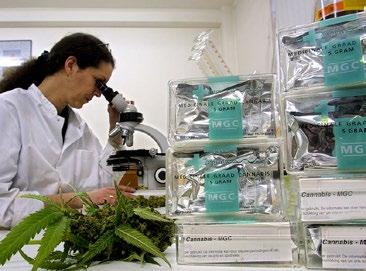
The tolerance policy of the government has contributed to the successful development of the industry and has helped to attract tourists.
Currently there are about 700 coffee shops in the Netherlands. In the last seven years, their number has significantly declined as the legal requirements for drug sellers have become more demanding. Nevertheless, 5,000 people are legally employed in the light drug trade industry in the Netherlands.
In 2012, a law was drafted to restrict the sale of drugs to non-residents but it did not come into force due to pragmatic reasons; 90 percent of “coffee” revenues come from foreigners.
AMSTERDAM IS A DELIGHTFUL, CHEERFUL, FREE CITY, BUT LIKE ANY OTHER CITY, IT IS IMPORTANT TO BE ALERT IN THE STREETS: AVOID STREET DRUG DEALERS AND REFUSE TO BUY ANYTHING FROM THEM. SUCH PLACES IN AMSTERDAM AS LEIDSEPLEIN, REMBRANDTPLEIN/ THORBECKEPLEIN, THE RED LIGHT DISTRICT, NIEUWMARKT AND THE HAARLEMMERSTRAAT ATTRACT MANY TOURISTS, ESPECIALLY DURING THE NIGHT, AND THEY OFTEN BECOME TARGETS OF STREET DEALERS.
HASHMUSEUM
Young people under the age of 18 cannot buy drugs and are not even allowed to enter coffee shops. People over the age of 18 can smoke cannabis inside the shop. Smoking of light drugs in the open air or in public is only allowed if it does not disturb anyone else.

IT IS
OF COFFEE SHOP OWNERS TO PROVIDE FULL INFORMATION ON THE QUALITY OF THE LIGHT DRUGS THEY SELL TO CONSUMERS AND THERE IS A STRICT CONTROL OVER IT.
Here you will learn the history of cannabis use over many centuries –how cannabis was used in agriculture, light industry, medicine, sailing and so on. The collection of the museum counts over 6,000 exhibits.

One of the biggest expositions is dedicated to the history of cannabis for medical use. The Amsterdam Cannabis Museum is visited by 2 million viewers annually.
Ticket price: 9€, Free for children under 13 years of age. Open: everyday –10.00-22.00
Oudezijds Achterburgwal 148; www.hashmuseum.com
THE RESPONSIBILITY
97 VOYAGER 8/2017
WHY SHOULD WE EAT FLOWERS?
The staff of the De Kas restaurant believe that their food tastes best when the main portion of the dish travels directly from farm to table. Thus, the restaurant is surrounded by real greenhouses and a garden where carrots, lettuce and pumpkins grow in an orderly Dutch manner.

CHEF
98 VOYAGER 8/2017
SALOME DADUNASHVILI
It is as if the ceiling of the old, former greenhouse touches the sky. The green beyond the transparent walls is blinding. It makes no difference come rain or sunshine: the lightness of the glass walls and the open space filled with simple tables make the place look like a planner..
THE CONCEPT, TURNED INTO A RELIGION IN DE KAS, IS NOW THE MOST POPULAR IN THE WORLD. MOST GOURMANDS DO NOT BELIEVE IN CUISINE WITHOUT HIGHQUALITY SEASONAL PRODUCTS, AND DE KAS HAS ADHERED TO THIS CONCEPT FOR YEARS.
The founder Gert-Jan Hageman decided to offer his guests only the produce that he had grown in his garden. De Kas is a pioneer in this field and the “green” concept is elevated here.

The popular Chef, having won a Michelin star for the development of Dutch "high cuisine", created the new concept in 2001. Gert-Jan Hageman discovered an old greenhouse, which belonged to the Amsterdam municipal council, located in a garden that had been opened in 1926. The destruction of the greenhouse was imminent. Hageman bought the devastated greenhouse. Since then, Frankendael Park has become known as a place where the restaurant De Kas is located. The restaurant is so popular that despite its small space (the internal space seats 100-140 people), 50,000 people visit it annually.
I've never seen a person talking about a carrot with such love. His eyes light up when he sees different colors of herbs as well.
We toured the grounds on a very rainy day. Nevertheless, Wim de Beer strode in the ranks of flowers and vegetables and scrupulously described the principles of this little garden.
Is there any produce that you would never use in your kitchen?
Yes, of course. Take pineapple for example. It’s impossible to grow it here. The idea is to use what we grow. Despite the fact that we do cultivate produce that is pretty unusual for our climate, a pineapple will never make it. Other herbs that were alien to our cuisine now grow handsomely in our garden, for example basil or some sorts of tomatoes.
Today, two young and very popular chefs head the De Kas kitchen - Jos Timmer and Wim de Beer. They coexist harmoniously and reach new discoveries together. When tables and tours are pre-ordered and they have time, they are happy to give a small excursion through the De Kas greenhouses and garden.
EVERY DISH IS DECORATED WITH FLOWERS. THE FLOWERS, OBVIOUSLY, MUST ALSO BE CONSUMED. THEY ARE ESPECIALLY CARED FOR BY THE KAS FLORIST-CHEF. THEIR BEAUTY AND UNIQUE TASTE COMBINES WITH THE AMAZING QUALITY OF THE PRODUCTS AND THE HEALTHINESS OF THE DISH.
 Gert-Jan Hageman
Gert-Jan Hageman
99 VOYAGER 8/2017
Jos Timmer & Wim de Beer
Do you feel a bit limited since your main emphasis is on vegetables and given the number of ingredients that will never make it to your kitchen?

We don’t feel limited at all. Also, you can’t even imagine how creative one gets when one has a specific amount of ingredients and the goal is to achieve a new level over and over again.
We love to use meat and we love to cook fish especially. You will encounter steaks and seafood in our menu. Someone might think that because we fuss about vegetables so much, we refuse to eat meat. This is not the case. We just use a minimal amount of meat. On the other hand, the ingredients that we do offer are of a premium quality.
Is this a part of your concept – the fact that 80% of your menu consists of vegetables?
Yes, that’s true. Our concept is a smart and I’d say conscientious approach towards food. It is impossible to continue living as we do. Mankind will simply run out of resources to feed everyone in the same way.
SOMEONE MIGHT THINK THAT BECAUSE WE FUSS ABOUT VEGETABLES SO MUCH, WE REFUSE TO EAT MEAT. THIS IS NOT THE CASE. WE JUST USE A MINIMAL AMOUNT OF MEAT.
Half of our planet’s population is hungry, so using so much meat is not only unhealthy for us, it is also not right. We have to consider reality. The planet’s resources are not limitless. A crisis is eminent if we don’t switch to a new food model.
De Kas is one of the most prestigious restaurants in Amsterdam. You have to make a reservation to get in. It offers lunch and dinner choices. For lunch, you can select the chef’s menu or have dishes from an à la cart menu.

We recommend the chef’s menu, despite the fact that De Kas’ servers are highly educated and polite. The chef’s menu demonstrates the restaurant concept in all its brilliance. Lunch includes an appetizer, salad, soup, main course and dessert. It practically leaves no chance not to like the restaurant. Your questions will be answered sometime between the first and second course, between lettuce leaves and fish, on a dish decorated with beautiful flowers. When you reach the green gazpacho, you’ll have to capitulate.
THIS IS PROBABLY THE ONLY RESTAURANT THAT YOU LEAVE NOT ONLY PLEASANTLY FULL BUT ALSO LIGHT AND EVEN PROUD THAT YOU’VE OFFERED SUCH HEALTHY FOOD TO YOUR BODY.
CHEF 100 VOYAGER 8/2017
The restaurant offers a selection of spaces in the summer. If the weather is good, you can sit in the wonderful garden.



A long table that sits 12-16 people is perfect for family or business lunches. The restaurant also offers space for business dinners (6-12 people).
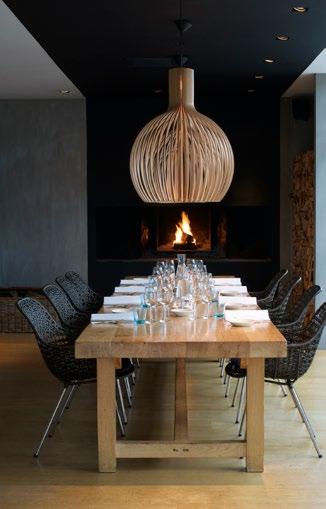
Reserve the chef’s table if you love to watch chefs work. This is the best place to see the magic that takes place in the kitchen. The table sits 2-4 people and the package includes a special menu and a selection of wines.
The restaurant has a special space for events. It hosts 20-68 guests.

It is open for lunch
Monday-Friday 12.00-14.00; for dinner Monday-Saturday: 18.30-22.00; it closed on Sundays.
Kamerlingh Onneslaan 3; 1097 DE Amsterdam Tel. +31204624562; e-mail: info@restaurantdekas.nl

101 VOYAGER 8/2017
THE GOURMET PALETTE OF DUTCH CHEESE


OLD AMSTERDAM
Considered the king of cheeses, this variety is from the “Gouda” family. It has its own history and secret recipe, passed down through generations of the famous cheese-producing Westland family. "Old Amsterdam" is the most prized among Dutch chesses. Only fresh milk is used in its preparation. The wheels of cheese are aged for 18 months on shelves.
Cheese and flowers are an integral part of the Dutch lifestyle, though the history of cheese production leads us all the way back to Julius Caesar's era. The Dutch borrowed the specifics of this craft from the Romans but have shown ingenuity and bested their “teachers” having experimented with recipes, aging periods, new additives and methods to improve the taste.
In the Middle Ages, the development of sea navigation increased the demand for cheese. This high-calorie food retained its taste for a long time.
In the 17th century, trade between European countries increased and the Dutch, who had previously sold only spices from the colonies, introduced cheese - a tasty new product - to the market.
Soon cheese became the most important product that the Dutch supplied to Europe and the rest of the world; annual turnover of many cheese varieties is now around 70 billion euros.

3,175
GOUDA
New, fresh "Gouda" has a delicate cream-like flavor but is aged for about 10 months, during which time the cheese gradually absorbs exquisite aromas and its taste profile, which is appreciated all over the world.


The cylindrical shaped final cheese product weighs 4.5 kg, which is considered the best weight for aging.
The main secret is hidden in the composition the cheese coagulation. The wheels, comprised of grainy globules, are covered with a layer of wax. The cheese has a stable, deep and at the same time soft taste, saturated with caramel and nut notes. It also tastes of caramel and fatty acids. On many occasions, such cheese is served with chopped fruit, figs or pistachios.
EDAMMER
Edammer does not fall short of its French and Italian "fellows". It is made from cow's milk.
Each type of "Edammer" requires a different level of fat in the source products. To achieve hardness, the cheese is aged for at least 2 months on wooden shelves. In the end, the wheels become the shape of uneven spheres.
102 VOYAGER 8/2017
AN AVERAGE DUTCH PERSON CONSUMES
KG OF CHEESE ANNUALLY.
MAASDAM
The movement of bacteria, caused by the release of gases during fermentation, creates big bubbles, commonly called “eyes”.
This is why large round holes became a distinctive feature of Maasdam cheese. According to cheesemaking criteria and the age of the cheese, new Maasdam is the most common variety in importing countries.

LEIDSE
Those who love spices prefer cheese products made around the town of Leiden. Semi-hard cheese is made of skimmed, separated milk with added cloves and caraway. That is why it is called Komijnekaas (the one with caraway).
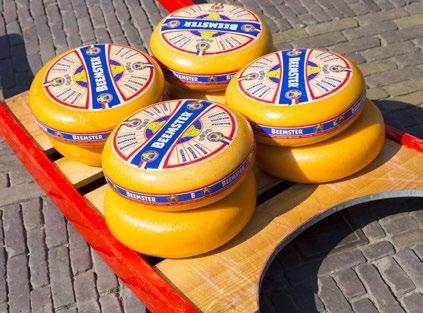
OLD DUTCH MASTER
The name of this cheese is translated very simply to different languages: "the Old Dutchman". Even the most pretentious gourmands consider this variety to be a product of the highest quality. It is aged for more than a year. Due to the aromas of spices and cream, along with its well-defined taste, "the Old Dutchman" is considered one of the best cheeses.

BOERENKAAS
This cheese is made from non-pasteurized and non-boiled milk. At least half of the milk used in the preparation of this cheese should come from the personal domestic farm of the cheese maker. The Boerenkaas taste is similar to the popular Gouda, though due to its use of unprocessed milk, it has a light taste of grass. The wheels of this cheese are pressed and have a rounded shape.

SMOKED CHEESE
After it is done, “Gouda” cheese is melted, smoked and shaped like a sausage. Often it is sold already sliced.
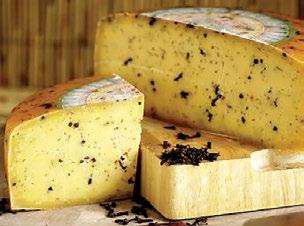


EEMSTER
It is true that this cheese is little known outside of the Netherlands, but the locals appreciate it greatly. It is made from unprocessed milk so the cheese has a grassy taste. Beemster was born in the north of the country, where due to its proximity to the sea and the blue clay soil, nature has created the best possible pasture. The local milk and cheese have a slightly sweet taste, and the cheese is softer than products from other regions.

FRISIAN CLOVE CHEESE
Frisian cheese with cloves, made with skimmed milk, caraway and cloves, is a hard variety with a dry and astringent taste.
GOAT MILK DAIRY PRODUCTS
Goat’s cheese is less popular in Holland than cow’s cheese, though there is a great deal of appreciation for its specific odor and flavor. Goat’s cheese can be soft, semi-hard and aged (this variety is like "Gouda").
Semi-hard goat is of a distinct color with a sharp taste and creamy texture. Dutch goat’s cheese
does not recognize innovations or additives - it consists of only milk, salt and spices. Two more varieties are produced besides soft and the aged: extra aged and VSOP (aged for more than two years). The latter tastes like a savory Parmesan.
Different varieties of goat’s cheese come by adding the Italian herbs, nettles, honey, olives, sundried tomatoes, celery and fenugreek. The last two ingredients give the cheese the flavor of bread and mushrooms, which is why they are greatly appreciated by gourmands.
103 VOYAGER 8/2017
GASTRONOMY
B
straat 17-19). There is a surprisingly wide selection - 440 kinds of Dutch cheese. Tasting four varieties of cheese with three varieties of wine will cost you 20 euros, but you must register in advance.
Open: 09.00-21.00
www.goldenagecheesestore.com
GOLDEN AGE CHEESE STORE
If you want to try cheese delicacies at the center of Amsterdam and buy them as a gift, make sure to visit this specialized shop in any of its three locations (Singel 490; Damrak 62; Dam-



in midair awaiting reply. This will continue until they agree on a price. Next, the cheese loader appears, whose honorary mission is to transport the big wheel of cheese from the market square to be weighted on the scales located on the first floor of the Alkmaar cheese museum.
CHEESE MARKETS
A visit to the Netherlands is not complete without a stop at a cheese tasting place or its open markets. You can feel the atmosphere of the medieval cheese markets in three beautiful cities - Alkmaar, Gouda and Edamer.



55 km away from Amsterdam, in Alkmaar, every Friday from April to September at 10 am, the most famous open market has been taking place since 1593. Traditionally, the buyer chooses one variety he likes, names his price and extends an arm to the seller; the seller names his own price, pats the buyers hand and freezes his hand
KAASMUSEUM
In the past, there was a chapel in this building; now there is a weighting device and a wonderful exposition. Here you can find out the difference between farm and factory cheese; try different kinds of cheese products; and learn everything about the history of cheese including its production and aging, and its place in the culture of the Netherlands.
Waagplein 2, 1811 JP Alkmaar
www.kaasmuseum.nl
HOLY CHEESE
This shop, distinguished by its convenient location shop (5 minutes from Dam Square) offers the best choice of Dutch cheeses and baked goods. It's not only a wide choice of cheese that you should see; you can also enjoy the best sandwiches in Amsterdam. The tasting menu is so diverse that you can practically try all kinds of cheese.
Oude Doelenstraat 6
www.holy-cheese.nl
CHEESE MUSEUM
Everything is cheaper in the museum than in the shops near the city center. Here you will witness the process of interaction of ferments and lactic acid in a wooden pan to create cottage cheese. The balls that emerge are cut into pieces, placed into special cylinders to give it shape and pressed; traditional “wheels” are created as a result. They continue to "float freely" in a large bathtub.
Cheese wheels are lined on the wooden shelves according to their age: in the front are the relatively new ones up to four months old; in the back are those of one year and older. The upper shelves are lined with wheels of twoyear maturity, which have a dazzling yellow color. Open: 09.00-21.00

Prinsensgracht 112
www.cheesemuseumamsterdam.com
104 VOYAGER 8/2017
THE NAME OF THE DUTCH NATIONAL DRINK DERIVES FROM THE WORD JENEVERBES, WHICH MEANS "JUNIPER". IT IS BELIEVED THAT JENEVER IS THE PRECURSOR OF ENGLISH GIN - THEIR RECIPES ARE SIMILAR TO EACH OTHER. HOWEVER, UNLIKE GIN, JENEVER CAN ONLY BE PRODUCED IN THE NETHERLANDS, BELGIUM, TWO PROVINCES OF FRANCE AND TWO FEDERAL TERRITORIES OF GERMANY. IT IS PROTECTED BY THE SO-CALLED GEOGRAPHICAL ORIGIN SYSTEM.
Jenever is made through the distillation of rye, maize and wheat. Juniper berries and aromatic spices are added to the resulting "malt wine"; after distilling that, producers filter it and dilute it with water to achieve the permitted level of alcohol and store it in a vessel. The final drink is either bottled and shipped to be sold or aged in oak barrels. This process is strictly controlled by distillers because the ideal balance of aroma and taste sensations fully depend on them. This alcoholic drink was created by the Dutch Franciscus Sylvius de Bouve to treat drum belly, though the beverage has gained unprecedented popularity.
Воls is one of the oldest alcoholic beverage production houses in Europe. 1575 is considered to be the date of its establishment when the Bols family established themselves in Amsterdam and laid the foundation for the currently operating establishment. However, mass production of jenever began in 1664. Bols maintains the traditions of jenever production to this day. In 1820, Bols introduced a new, revolutionary recipe jenever of refined taste – in it one could feel an ideal balance of "malt wine", grain spirits and herbal supplements. This strong yet refined taste continues to be the standard for Jenever producers. Today, Bols offers its customers two main types of jenever: Bols Genever and Bols Genever Barrel-Aged. Both are made according to the legendary 1820 recipe.
AGED JENEVER IS CONSUMED COLD IN SMALL SIPS. NEW JENEVER IS CONSUMED LIKE REGULAR GIN: IT CAN BE MIXED WITH LEMON JUICE, TONIC ETC. IN THE NETHERLANDS AND BELGIUM, JENEVER IS CONSUMED WITH BEER, OR ADDED TO COFFEE. IF YOU DRINK IT NEAT, MAKE SURE THAT IT’S SUFFICIENTLY COLD AND DRINK IT IN SMALL AMOUNTS.
Thanks to its incomparable quality, jenever became an ideal ingredient in cocktails – a new “phenomenon” that emerged in the US at the beginning of the 20th century. The first cocktails used jenever for its distinct aroma and ability to blend well with other drinks. Leading bartenders use it frequently even today.
 BY COMPOSITION AND AGING:
BY COMPOSITION AND AGING:
GRAANJENEVER – made only from grain crops. As a rule, it has at least 30% alcohol content.
KORENWIJN – This jenever contains 51% malt alcohol and 20 g/l of sugar. The minimum alcohol content is 38%. This variety is aged in oak barrels. It is colored with caramel
JONGE – The youngest in terms of aging and hence the most affordable variety of jenver; distinguished by its dry and sharp taste.
OUDE – aged drink; has a light amber color due to aging in oak barrels for several years.
ZEER OUDE (ZO) – is the variety of jenever with the longest aging. It is more expensive than new jenever and is normally bottled in clay vessels.
LIQUEUR
In any of the famous European clubs, you can enjoy refined Dutch liquors, the most famous producers being Bols and Wenneker.
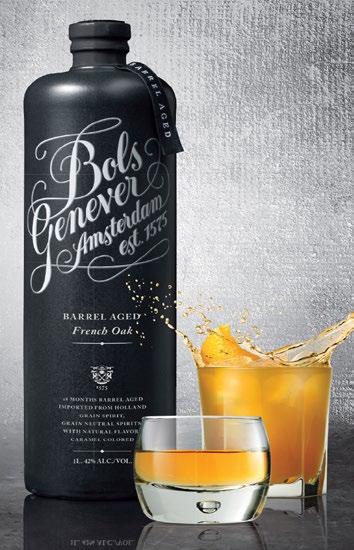
HOUSE OF BOLS
Bols offers a special tour and tasting session in the museum located at the center of Amsterdam (opposite of Van Gogh Museum) where you can taste jenever-based cocktails and witness the production process. During the tour, you will find out how the wonderful cocktails are made and will learn much about the legacy and history of jenever. The price of the tour is 16 euros, which includes the cost of one cocktail and an audio guide.
Paulus Potterstraat 14 1071 CZ Amsterdam
Dutch liqueurs can be cherry, banana, peach, melon, coffee, vanilla, mint, etc. They are strong at 24% alcohol but offer a gentle velvety texture and a majestic aroma where notes of alcohol are not sensed.
ROME
Rome – an exclusive Dutch alcoholic beverage – is considered a premium class drink, made from a blend of the highest quality alcoholic spirits. This brandy is a beautiful amber color.
Its strength is 37.50%.
Rome is characterized by its rich, diverse bouquet with tones of spices, citruses, cinnamon and wood.
105 VOYAGER 8/2017 GASTRONOMY
RAW HERRING
Raw herring: this dish sounds a little awkward for fussy eaters, though all guests in the Netherlands should "give it a go".

You will definitely notice four-wheeled carts with a line of those who love Dutch cuisine or just gastronomically adventurous people. If you ask the seller for "broodje haring", he will give you a small raw herring, pickled cucumber and onion sandwich.
Herring, which is usually served with onions and bread, is fished from May to July. During this period of the year, the fish are fat enough – the fat content is at least 16%. The fishermen clean the herring immediately after they catch it and store it in brine. Every year, when they catch the first torrent of herring, every fishing boat raises a flag on top of it. The "first harvest" of fish is widely celebrated – this day is known as The Flag Day.
If you want to have herring the Dutch way, grab the fish by the tail, tilt your head back, open your mouth and swallow it. If this is too much for you, at least don’t say no to a sandwich.
da cheese, small egg rings and pieces of local sausage. It is made of minced beef (sometimes chicken or in the case of the vegetarian version, mushrooms), and contains broth, flour, butter and herbs.
BITTERBALLEN
These fried meatballs with a crunchy surface are served with spiced mustard.
You can encounter them in a Bittergarnituur snack set, which consist of a tiny Gou-
As soon as the mixture reaches a solid state, it’s given the shape of a ball, dipped in bread crumbs and fried until golden and crunchy. This is one of the most popular dishes in Dutch cuisine.


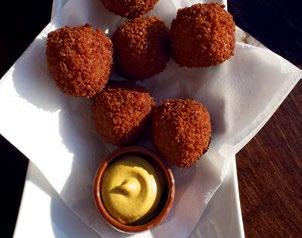
won’t be able to pass by it indifferently.
Kroketten and Frinkandellen are visible behind the glass windows.
CROQUETTES
Of course, this is not Michelin-star level cuisine, but if you see the FEBO sign, you
You will definitely have some coins in your pockets so drop them in the machine and with one touch of your hand, dinner is ready.
KIBBELING
This white fish, tenderized and fried until golden, is so tasty that even looks very appetizing.
"Kibbeling" is served with mayonnaise, herbal sauce and lemon. You will find the best, freshly fried "Kibbeling" at street fairs and fast food stands.
STAMPPOT
The traditional Dutch dish "Stamppot" is an integral companion to cold winter evenings, very similar to the British Bubble & Squeak. The literal translation is "a pot of puree" and it is made up of potato and other pureed vegetables.

THICK DUTCH FRIES
These are unlike potato fries. You will definitely see Patat or Frite in a menu; after ordering, you will receive thickly sliced fried potatoes in a paper cone with a variety of sauces and side salads.

You can ask for Patate Oorlog – fried potatoes with Indonesian-style chopped meat, which will be even more piquant with a peanut sauce with mayonnaise and onions.
Another option is the Patat Speciaal with curry ketchup, mayonnaise and onions.
Traditional "Stamppot" contains a different combination of potatoes, sauerkraut, carrots, onion and cabbage. Puree is paired with smoked sausage and sauces.

Each variation of the dish has its own name: boerenkool (curly cabbage), zuurkool (sour cabbage), hutspot (onions and carrots) and rauweandijvie (chicory) – all of them are wonderful snacks.
SNERT
The Dutch version of pea soup is a thick green mass, made from chopped peas, pork meat, onions, celery and leaks.
Despite its name, it looks truly appetizing and has a great taste. It is eaten very often, especially by ice skaters who can get this dish in the street, right from the stall.
106 VOYAGER 8/2017
PANNENKOEKEN
These are delicious Dutch pancakes and a truly favorite dish of the Dutch, which they often eat with sweet or spicy foods such as bacon, apple, cheese, raisins, stroop (Dutch syrup), chocolate, apple syrup, sugar powder, hazelnuts, smoked
salmon and even sour cream. They can be eaten for lunch, dinner or as a dessert. You can eat them with a knife and fork or wrap them and eat with your hands.
Pannenkoeken are much thinner than American or Scottish pancakes, and are more like traditional English ones. You can sometimes encounter an enormous Pannenkoeken.
This pancake is made from wheat (sometimes buckwheat) flour, milk, eggs and salt on a very hot pan, very fast.
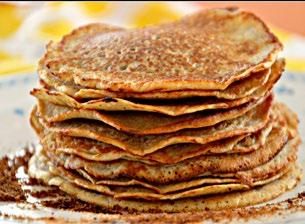
Appeltaart are covered with pastry, which is different from the French apple pie which is open from above.
APPELTAART
For centuries, the Dutch have enjoyed the Appeltaart or apple pie. The first culinary book printed in 1514 contains this recipe. The upper and lower sides of an
OLIEBOLLEN

This is a Dutch version of a donut. Traditionally, it is served on New Year’s Eve though you will find them on street stalls in the cold winter months. The name itself means oil balls; they are fried in oil but do not have as much fat as the name might suggest. The dough contains sugar and lemon;

TOMPOUCE
This dessert is named after a famous performer, Tom Pous. It is a rectangular, cream-filled pastry covered with smooth pink glazing

Appeltaart has a thinly sliced apple, sugar, cinnamon and lemon juice filling. Traditionally, the pastry on the upper side of the pie is lined in sliced portions, so that one can see the filling. It is served with whipped cream and coffee.

STROOPWAFEL

If you have a chance to try only one Dutch dessert, you should make Stroopwafel your choice. Two thin wafers are glued to each other with a layer of sweet syrup. It is best to have this amazing dessert when it’s freshly baked on the street markets or in a bakery.
DUTCH LIQUORICE
Eating liquorice is basically a national pastime in the Netherlands. This country holds the leading position in terms of per capita average liquorice consumption in the world.

in the middle you may even find different dried fruits. On the outside, it has sugar powder or glazing. Enjoy it hot at a stall, or cold with a coffee.
POFERJUS
Tender, light like a cloud, but very savory, these pancakes are made of buckwheat flour and yeast, have an air bubble texture and are covered with hot sugar powder, occasionally served with stroop – Dutch syrup. You will find it during the winter months and on stalls at Dutch festivals and you should definitely enjoy it on the spot. Poferjus is fried on a special pan which has a lot of holes. If you decide to make the pancakes at home on a regular pan, prepare it in a butter, and turn it carefully when you decide to fry the other side.
on the outside. Tompouce is always of same size, shape and color, but on the "King's Day" in Amsterdam you will definitely see this dessert covered in orange glazing.
If someone offers it to you in the Netherlands (which is inevitable), be careful! It will be nothing like the liquorice you have ever tried. Dutch liquorice, which is called "drops", is more salty and black, so don’t say afterwards that we didn’t warn you.
ONTBIJTKOEK
This delicious ginger cake is made in the form of a bun and is so savory that even a small slice is enough to fill you up.
The name is literally translated as "a breakfast cake", though you can embrace your rebel side and enjoy it at any time of the day. To get even more pleasure, add a thick layer of butter on top of it.

107 VOYAGER 8/2017 GASTRONOMY
THE FLOWER LAND
Love for flowers is intertwined into the Dutch heart, just as wisteria enwraps a wall.
Never have I seen so many wonderful bouquets, arranged with exquisite taste and knowledge. They are taken down the street, wrapped in pretty bows and displayed at every shop and museum; they stand proudly erect in crystal or almost-transparent ceramics behind the huge windows of Amsterdam’s houses. Fresh-cut flower arrangements seem to be an essential ingredient of Dutch life.
Visiting a flower shop in Amsterdam is like travelling to a fairytale land. Take one step and you find equatorial jungles, the valleys of Provence and the lowlands of Holland. Florists look like university professors. They carry an air of competence and prestige; kings of their tiny shops, they give quick answers to any question.
The Dutch love flowers and flowers are in love with them as well. No one knows where this now genetic love came
from in the 16th century – when the Dutch looked into the yellow heart of one tender flower for the first time and eternally connected their fate to its own.
How could wild flowers that bloomed in Afghan fields imagine what people would do for them? Red tulips bloomed for thousands of years in the wild and in the sultans’ gardens, on Ottoman Empire ceramics and mosque walls – indifferent to human admiration.
However, on one fine morning in 1554, a strange load arrived into the German city of Augsburg – ugly bulbs, placed into simple wooden boxes. The ambassador to Turkey liked the beauty of the flowers so much that he sent them to his homeland.
Europe opened Pandora’s Box with this cargo. Educated and peaceful European hearts got infected with tulip mania. The first serious tulip shipment arrived in Antwerp in 1562. Flower breeders were extremely happy. The tulip
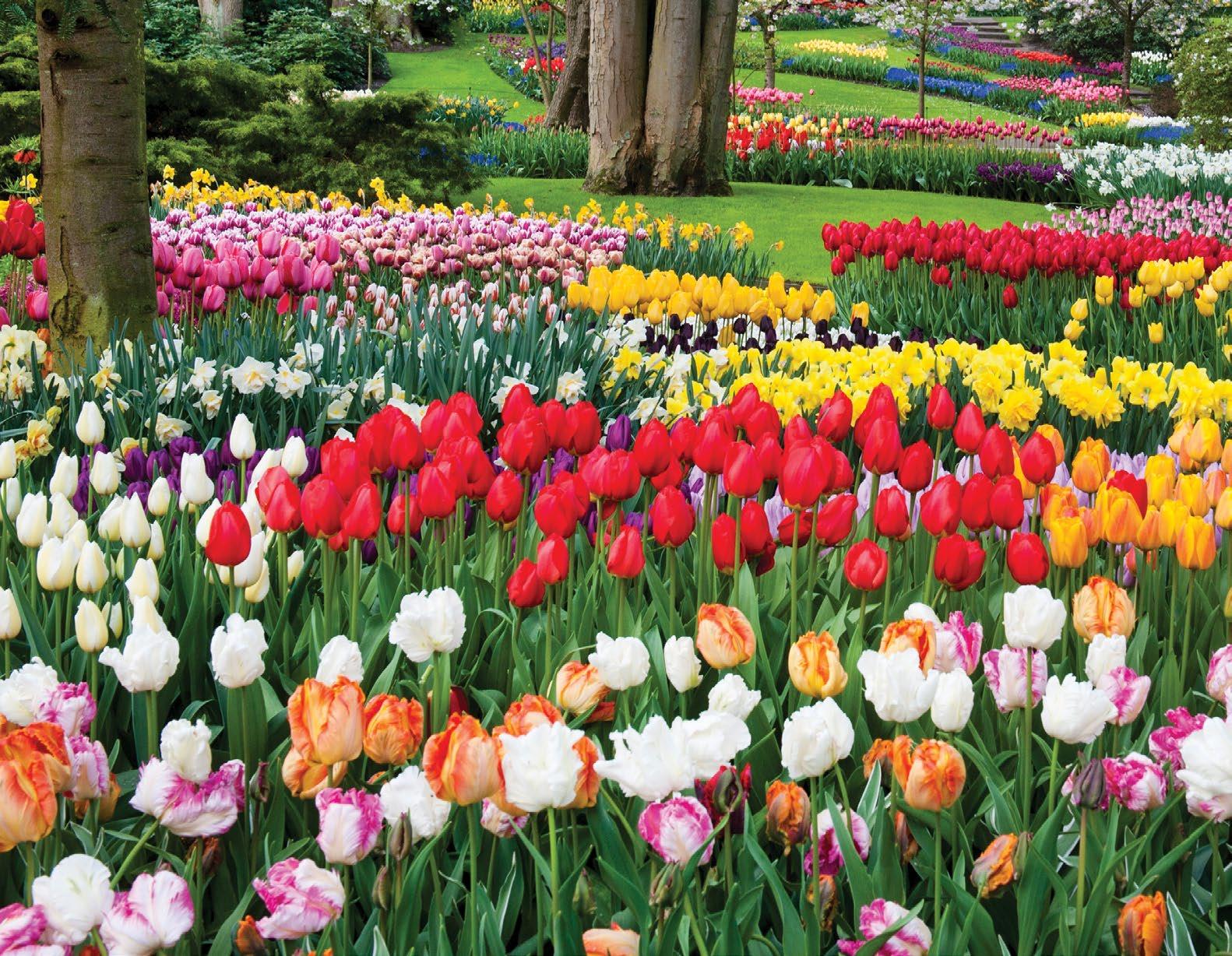
TRADITION
108 VOYAGER 8/2017
SALOME DADUNASHVILI
was exceptionally easy to breed as it mutates very quickly and it is possible to obtain hundreds of varieties in a very short time.
High society recognized this flower alone. Gardens competed for aesthetics. Cardinal Richelieu, Voltaire and royal persons became fans of tulips, including Franc II, the Emperor of Austria and Luis XXIV, King of France. But the biggest love affair was between this tender flower and Holland.
The economy of this small but rich country soon started spinning from tulip sales. The bourgeoisie wanted to catch up with the aristocracy and become distinguished by tulip diversity. The tulips loved Holland’s moist soil as well and soon the world bulb trade started to climax. It turned into a stable business by 1630.
Amsterdam, Utrecht, Rotterdam, and Leiden bloomed with a multitude of colors. Special storage spaces for trade purposes were created; lawyers who specialized in
flower trade agreements came forth. To understand the scale of this hysteria, let me tell you the prices: one tulip bulb could cost as much as 2,500 Guldens. You could buy 4 oxen, 4 pigs, 12 sheep and 500 kg of cheese, 2 barrels of butter and many other essentials for that price. The tulip trade resulted in 10 million gulden of total income, which equals all of the properties of the East India Company. The Dutch respected tulips in every way: they created hundreds of new breeds, painted their beauty in still-life art and priced them as gold.
Finally, when tulip mania reached such a scale that common sense got lost amongst the bulbs, the state announced a law against price inflation in the tulip trade in 1637. Hysteria was averted, though this tender flower, now with its Dutch-style petals, remains a symbol of the country.
Holland remains the world leader in tulip and flower production. Some 4.2 billion bulbs are cultivated on 100 hectares of land annually. Millions of flowers are placed in cool boxes, just like their sisters in the 16th century, to be shipped all over the world. Some 12.4 billion flowers and plants are sold at the biggest flower auctions and the yearly income is 4.5 billion euros.
Flowers are everywhere in Holland, though people from every corner of the world travel to see one park in the spring.
In 1949, 20 producers of flower bulbs appealed to the municipality to turn Keukenhof into a spring flower exhibit. The idea became a reality in 1950 and the park hosted its first visitors. Some 236,000 people visited in the first year. The tradition continues to this day and it is an important world florist event. The show is held for 8 weeks every year. Some 7 million flowers bloom in the park at that time. Keukenhof is a culmination of the Dutch flower world. However, Holland remains the country of flowers the other 44 weeks of the year too.
In 2018, Keukenhof will operate from March 22–May 13 from 8 am – 8:30 pm daily.
The price for adult admission is 16€; children under the age of 3 can enter for free while those aged 4-11 pay 8€. Keukenhof is located between Amsterdam and The Hague. You can take a train from Amsterdam (or the Hague) to the Schiphol station (two-way ticket costs 9.40€) and then take the #858 bus to the park. The journey takes one hour. We recommend buying a ticket that combines the bus and park entrance, which costs 24€.

109 VOYAGER 8/2017
2160 AB, Stationsweg 166, Lisse www.keukenhof.nl
DELFT
If you board a red tram #1 on a fine morning in The Hague, you’ll arrive at this small town in just 40 minutes.
This is neither The Hague's suburb nor a satellite city; it's a distinguished town in its own right with a great history. This is the place where Dutch independence originated and the great artist Vermeer died.

Delft is a mini model of Amsterdam, with its canals, smaller houses and protestant church founded in 1246. You can see it all in one day. The historic center of the XVII century, the Oude Kerk and the New Church (Nieuwe Kerk), the 109-meter bell tower, the Prinsenhof Palace and the historic gates are cultural masterpieces of the world, making Delft one of the Netherlands's best travel destinations.
DELFT IS THE PERFECT PLACE FOR DAY TRIP. THE CITY IS LOCATED BETWEEN ROTTERDAM AND THE HAGUE. IT TAKES 15 MINUTES BY TRAIN TO TRAVEL FROM THE HAGUE TO DELFT. TICKETS COST 3.5 EUR.
TRAVELING FROM AMSTERDAM TO DELFT TAKES ABOUT AN HOUR BY TRAIN AND A ONE-WAY TICKET COSTS 13 €.
You can also see exhibitions and view a video presentation in Nieuwe Kerk, which describes the history of the church and the royal family. If you’d like, you can ascend all steps of the 109-meter tower.

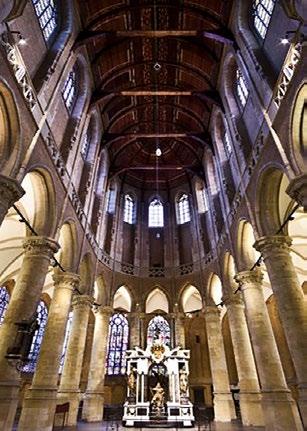
The church is closed on Sunday.
Markt 80
CITY HALL
This building is located opposite to the Nieuwe Kerk on the Markt Square. This Renaissance-style building dates back to 1620. Two years earlier, the administrative building was destroyed in a fire along with the old city. The current structure was built around the 13th century Gothic tower.

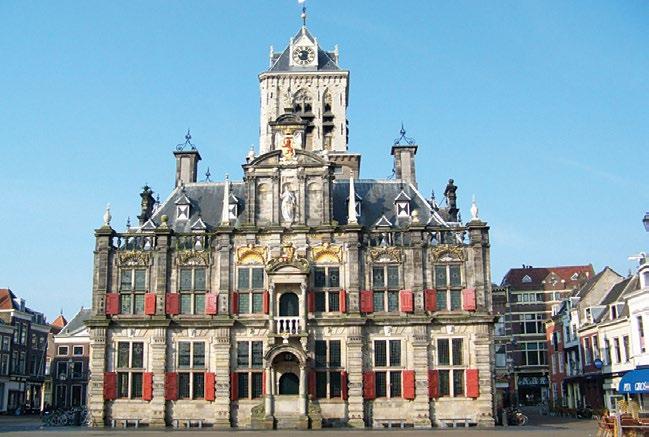
The tower used to be a prison. You can see the torture rooms and cells of the medieval time. The hall functioned as a court. The stairs outside the hall pass through the balcony where the death penalty took place.
Balthasar Gérard, the assassin of Willem I, was convicted here and severely punished.
NIEUWE KERK
The narrow tower of the new church is almost 109 meters tall, and its tomb is the final resting place for members of the royal family. There are sixteen colored windows in the church. You can see stained glass in the part of the new church where the choir sings and in several mausoleums, including the Hugo Grossius mausoleum.
110 VOYAGER 8/2017
PRINSENHOF
The main palace of Delft, the monumental late gothic building, was once a monastery of Saint Agatha. It was built in 1400. From the XVI century, Prinsenhof served as a residence of King Willem of Orange. It was on the stairs of this palace on July 10, 1584, that Balthasar Gérard killed the founder of the Royal Kingdom of the Netherlands.
YOU CAN TRAVEL THE CANALS INDEPENDENTLY OR VIA SPECIAL TOURS TO FEEL THE HISTORIC AND CULTURAL HERITAGE OF THE CITY. YOU WILL SEE ALL THE SIGHTS IF YOU RENT A WATER TAXI.
DELFT CANALS


Canals were taken into consideration when the city was planned. They were important for defense. The name of the city comes from the world “delven”, which means “digging up”. The “Old Canal” is the oldest. The city has been growing around it for 750 years. The rest of the canals are important as well. They are used for the same reasons as in olden times: transportation and pumping water for residential homes.
The king was buried in a new church, which led to the tradition of a burying the Royal Family members in Delft. The walls of the stairs still bear the traces of the bullets that led to his death. Hence, the name of the staircase: the "Death Hall."


The medieval tragic walls exhibit works of distinguished artists of the XVI-XVII centuries and modern art. The Delft porcelain collection is unique. You can see black and even yellow porcelain in Prinsenhof.
Open: Monday-Sunday - 10.00-17.00; Ticket price: 12 €
www.prinsenhof-delft.nl
OUDE KERK
Vermeer is buried in Delft’s oldest church (1246). Contemporary art exhibitions and organ music concerts take place there as well as church services.


Geestkerkhof 25
If you get tired of walking on foot or you decide to visit the “Royal Delft” factory, you will find little white electro mobiles on the main city square. These are delft’s tuk tuks. It costs 4 Euros to travel by this wonderful mode of transportation. In one hour, it will take you around the whole city. The tuk tuks have a set tourist route and will stop only in designated areas. If your destination point coincides with the route, the driver will take you there directly. Drivers are so friendly that if you ask them before and, they will pick you up at a certain point later in the day at an agreed time. Tuk tuks even took us to the station.

VERMEER CENTER
The Vermeer museum is located in Delft. However, please take into account that it is a practically virtual museum. The house where the artist lived does not have any interesting interior features and does not contain his personal items. Visit this museum only if you have no idea who Vermeer was. Open: : everyday 10.00-17.00; admission: adults– 7€, 7-14 –3€, free for children under 7.
Voldersgracht 21; www.vermeerdelft.nl
111 VOYAGER 8/2017
DELFT
DELFT BLUE
Ceramics made in Delft are world-famous. They have been made there since XVII century and were very popular in 1600-1800 and adorned the interiors of the rich families who competed with each other in terms of their Delft ceramic collections.
Despite the fact that the Delft craftsmen called their work china, it was a cheaper ceramic than real china.


Delft ceramic is not made from typical clay but from another kind of clay that
ROYAL DELFT

The royal ceramics factory was founded in 1653. It is the only blue ceramic producer remaining from the XVII century.
is covered with enamel after it is dried in the oven. The ceramics fade from oxidation.
Despite this, Delft blue ceramic was very popular and 33 factories operated here at the height of its renown. Only one of them still works todayRoyal Delft.

CHEESE & MORE

You’ll discover many small stores and cafes adorned with flowers on the main square. Don’t avoid these stores as since a visit will change your idea of this dairy produce forever.
Markt 43
HET GULDEN ABC
Not only will you be able to see the Dutch ceramics factory and witness the process of making ceramics but you can also visit its wonderful gift store where people with any size of budget can buy something.
The famous white and blue ceramics are handmade and hand-painted. Some of them cost 35,000 Euros, though you can buy an item for 20 Euros. For example, you can get Christmas decorations, ceramic klomps or miniature houses.

A café with a historic atmosphere is located on the most beautiful square of the Netherlands. Café Het Gulden ABC is named in honor of the printing press that used to be on the same site in the 17th century.
The former owner of the printing press, Jacob Disius, owned several Vermeer paintings. The collection was auctioned in Amsterdam on May 16, 1696. Have lunch, dinner or drinks in this historic building or cozy terrace at any time of year.
An excursion called “Discover the Royal Factory” is like travelling in time. It tells us about the past, present and future of the region’s ceramics and is definitely worth visiting.
We recommend dining in the factory café. Please visit the beer bar too. You should taste roulade and a cup of coffee even if you don’t feel like going through the whole museum. You’ll see Waldkorn roulette on the menu with brie, walnuts and honey. You will also enjoy wonderful views of the courtyard.
Open: everyday – 9.00-17.00 Rotterdamseweg, 196
The restaurant has several halls, all of them charming in their own way. A big terrace overlooks the square. You can visit the café for a drink of coffee or tea, freshly baked pastries, lunch or a tasty dinner.
Markt 34
112 VOYAGER 8/2017
DELFT
Utrecht, the fourth largest city in the Netherlands and one of the oldest, is located at the center of the country. It is also called the City of Knowledge and Culture because the oldest university in the Netherlands (1636) is located there.


More than 70,000 students study in Utrecht's high schools so the majority of the population is young. You can experience the pictorial landscape of this historic city while walking along the boat harbor and the romantic canals of the 14th century.


DOM TOWER
It is the oldest and tallest cathedral in the Netherlands. It was built in 132182. There are two chapels inside the church.
DE WINKEL VAN SINKEL
The first shopping mall opened in Netherlands in 1839; today there are wonderful cafes, restaurants and night clubs too. The building has a unique façade decorated by four gigantic cast iron statues.

Oudegracht 158
Its 13 bells, cast in 1505, weigh from 880 to 18,000 pounds each. The height of the bell tower is 112 meters. A wonderful view opens up from here, though you will need to climb 465 steps to reach it. The wall and cave paintings create an unforgettable impression. A quiet yard houses 140 different species of plants.
Domplein 21
There is a pedestrian street in the city center so you can simultaneously enjoy a relaxing walk and shopping. The narrow streets are lined with boutiques of famous brands: Lijnmarkt, Oude Gracht, Choorstraat, Oudkerkhof and Korte Minrebroederstraat - these streets are the best for shopping.
RIETVELD SCHRÖDER HOUSE
Schröder 's house was designed by the famous architect Gerrit Rietveld in 1924. In 2000, UNESCO granted it World Heritage status. Rietveld was a representative of the artistic movement called "De Stijl", led by Piet Mondrian.

They were searching for new ideals of harmony and order. Straight lines and primitive colors - this concept is fully relevant to the Rietveld Schröder House. The building is the best example of early Dutch Modernism.
Ticket price: 13€
Prins Hendriklaan 50, Utrecht
CENTRAAL MUSEUM
This museum hosts the largest collection of Gerrit Rietveld, the founder of Neoplasticism.

Admission price: 12.50€
Agnietenstraat 1
TRAJECTUM LUMEN
Trajectum Lumen is the name of a night tour held in the center of Utrecht. The world's most famous light painters present their works in the streets of the city. If you go on this tour, you will see Utrecht from a completely different angle. The light painting performance takes place on the building facades, bridges and alleys.
113 VOYAGER 8/2017
UTRECHT
UTRECHT
The Hague is the third largest city in the Netherlands. It is called the "Royal Residence" and "City of Peace and Justice." In the Netherlands, it is a joke that Rotterdam earns the money, The Hague dispenses it and Amsterdam spends it. The Netherlands governmental agencies, royal residence and the headquarters of more than 150 international organizations are set up in The Hague. The International Court of Justice, the International Tribunals, the fourth United Nations Headquarters (after New York, Geneva and Vienna), the Permanent Arbitration Court, Europol, the Peace Palace, the European Library, the NATO Consulting and Control Agency, the European Patent Office etc. are all located in The Hague.
THE HAGUE


The Hague is also home to offices of some of the world's largest companies such as oil producer Royal Dutch Shell and international tech giant Siemens A.G.
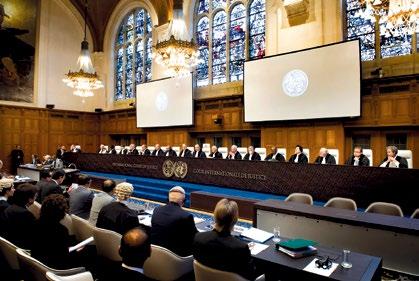


PEACE PALACE
The Peace Palace was built in The Hague to express the ideal of pacifism and the world peace. By the late nineteenth century, these principles were unprecedentedly popular. In 1913, when the palace was built, it was just as great as the idea of the world peace. The building was erected with the
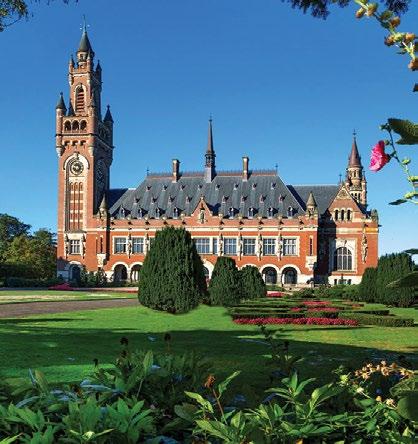
joint efforts of different countries around the world. During the course of your visit, you will find out how each country contributed to the gardens, architecture and interior design of the building. The Peace Palace could not find a better environment than The Hague - indeed the city of peace and justice. Today, the palace houses the Permanent Court of Arbitration, the Permanent Court of International Justice, The Hague Academy of International Law and the Peace Palace Library of International Law.
Carnegieplein 2
114 VOYAGER 8/2017
DES GRAVEN HAGE TRANSLATES AS "THE COUNT’S FOREST". THE HAGUE WAS FOUNDED IN 1230 WHEN THE DUTCH COUNT FLORIS IV BUILT A SMALL FORTRESS HERE. AT PRESENT, BUITENHOF PALACE IS LOCATED THERE.
SINCE THE XV CENTURY, THE IMAGE OF THE CRANE HAS BEEN THE SYMBOL OF THE HAGUE.
THE "ROTTERDAM-THE HAGUE" AIRPORT IS 15 KM AWAY FROM THE CITY WHILE AMSTERDAM AIRPORT "SCHIPHOL" IS 40 KM AWAY.
GEMEENTEMUSEUM


This museum holds a rich collection of contemporary art, including paintings by artists such as Claude Monet, Pablo Picasso, Egon Schiele, Wassily Kandinsky, Louise Bourgeois, and Francis Bacon.
color of the tiles, the bronze window frames, the sophisticated details and the interior are a spectacular sight.
The Fashion and Art Center presents Mondrian's biggest collection in the world, including the famous "Victory Boogie Woogie".
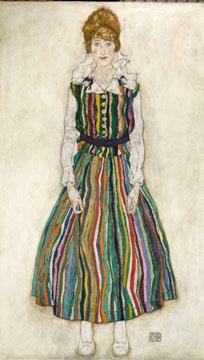


PRIN CE WILLEM V GALLERY
The gallery is located at The Hague historic center, the Buitenhof, a five-minute walk from Mauritshuis. The gallery is also called a hidden treasure of The Hague. Prince Willem V erected it in 1774 to hold his paintings. The walls are fully covered in the richness of his collection, as well as the works of artists such as Rembrandt, Wouwerman, Rubens and others.
Open: Tuesday to Sunday - 12.00-17.00;
Closed on Monday.
Price: 5 €
Buitenhof 33
LOUWMAN MUSEUM

This museum keeps the private collection of the most impressive cars in the world. You can witness the evolution of motor transport.
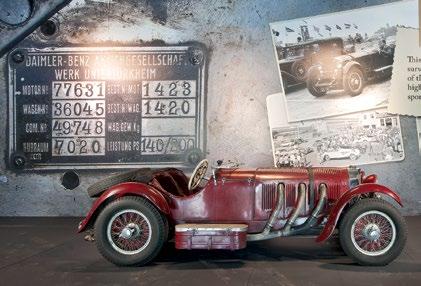
The permanent collection consists of 50,000 paintings, prints and posters of contemporary art, fashion, music, and decorative art.
This year, The Hague celebrates the 100th anniversary of Mondrian's De Stijl: a century ago, the art movement De Stijl was founded. Piet Mondrian was its most important representative, so in 2017, many exhibitions are planned in The Hague dedicated to the famous artist and the movement. The epicenter of the events is the Gemeentemuseum, which manages the three exhibitions of Mondrian and De Stijl.
Open: From Tuesday to Sunday10.00-17.00
Stadhouderslaan 41
Here you can see models of Formula 1 and hybrid cars and vintage and classic cars. You can chart the development of the car from horses and chariots to the first handmade transport, interesting boat-cars, coastal cars and swan machines, as well as James Bond's "Aston Martin" from "Goldfinger" and Elvis Presley’s "Cadillac Fleetwood".
The museum is open every day except Monday - 10.00-17.00 Ticket price: 14€
Leidsestraatweg 57
The author of the Art Deco style building, the Dutch architect Hendrik Berlage, is considered the founder of a new era of modern architecture. The

MADURODAM
The Madurodam is a model of the Dutch city in miniature on a scale of 1:25. It consists of typical Dutch buildings, whose origins are located in different parts of the country.
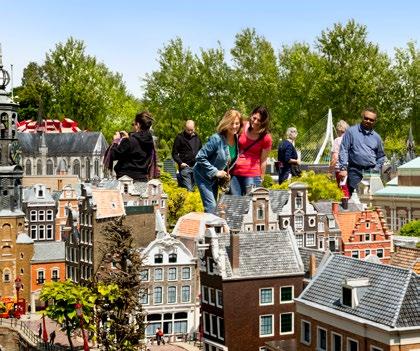
The buildings are mainly made of plastic, and genuine plants are used for the miniature greenery.
George Maduroplein 1
115 VOYAGER 8/2017
© Galerij Prins Willem V / Foto Frank van der Burg
THE HAGUE
IF THE GIRL WITH A PEARL EARRING HAS ENCHANTED YOU, THEN THE MAURITSHUIS IS YOUR MUSEUM; IT WILL SURELY SATISFY EVEN THE MOST DEMANDING ESTHETICS.

To get to the museum, you will have to pass the most impressive Parliament Square, which is a bonus. More than 200 works of Dutch and Flemish artists are the pride of the Mauritshuis.

MAURITSHUIS
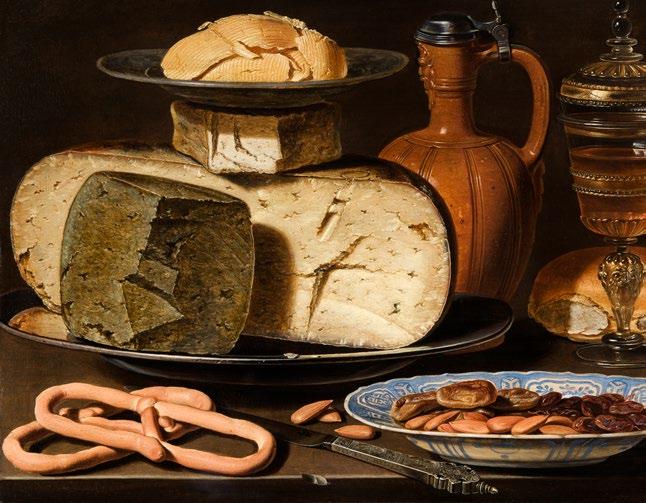
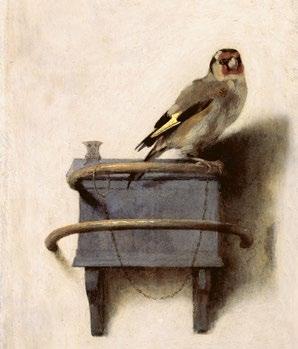
This is probably one of the best museums in The Hague. I would even claim that it is an ideal museum for a few simple reasons.
First of all, of course, this is due to the collection, which includes Vermeer’s "Girl with a Pearl Earring". Secondly, in my opinion, it is the unique magnitude. There are some monster museums that cannot be seen in one day. Moreover, perhaps for a few months or so, you have to dedicate yourself to the study of those collections. That’s not the case with Mauritshuis. 3-4 hours is enough to view this wonderful collection.
In addition, the impression is that the creators have selected the "Crème de la Crème" of their collection – the best of them – so you don’t spend your time in vain.
Vermeer’s “The View of Delft”, Carel Fabritius’ perfectly beautiful "Bird" and the 17th-century female painter Clara Peeters’ “Still Life” can all be found here. The latter is admired not only because she was one of the first who started depicted tables laden with food and flowers.
She had an extraordinary talent for planting messages for viewers. If you look closely, you’ll discover the artist's name on the knife, or see Clara's reflection on the metal lid of the clay jug.

THE MUSEUM IS LESS CROWDED AFTER 15.00 HOURS (EVERY DAY) AS WELL AS ON THURSDAY EVENINGS.
ADMISSION FOR ADULTS: 14 €.
OPEN: MONDAY - 13.00-18.00; TUESDAY-SUNDAY - 10.00-18.00
PLEIN 29, DEN HAAG
THE MAURITSHUIS HAS ONE OF THE BEST WEBPAGES I'VE EVER SEEN. YOU CAN EASILY FIND THE COMPLETE COLLECTION ONLINE IN HIGH RESOLUTION. YOU CAN ALSO KNOW IN ADVANCE WHICH MASTERPIECES ARE NOT BEING EXHIBITED OR HAVE BEEN REMOVED FROM THE MUSEUM. THE MASTERPIECES HERE ARE IN GREAT NUMBERS. WWW.MAURITSHUIS.NL
116 VOYAGER 8/2017
Johannes Vermeer. View of Delft, c. 1660-1661. Mauritshuis, The Hague
Johannes Vermeer.
Girl with a Pearl Earring, c. 1665. Mauritshuis, The Hague
Carel Fabritius. The Goldfinch, 1654. Mauritshuis, The Hague
Clara Peeters. Still Life with Cheeses, Almonds and Pretzels. Mauritshuis, Den Haag
Frans Hals. Laughing Boy, c. 1625. Mauritshuis, The Hague
REMBRANDT’S “THE ANATOMY LESSON OF DR. NICOLAES TULP” AND HIS 1669 SELF-PORTRAITS PAINTED SEVERAL MONTHS BEFORE HIS DEATH ARE WORTH A WHOLE MUSEUM. MAURITSHUIS ALSO HOUSES A NUMBER OF REMBRANDT’S WORKS.
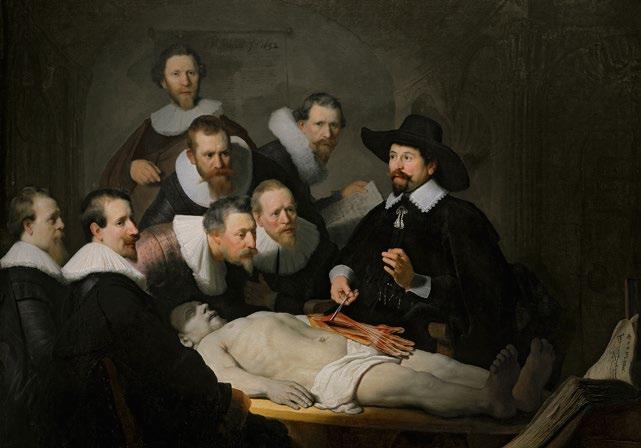
This is a museum of discovery. Here you will see that Rubens, who is known for his portraits of the most exquisite full-bodied ladies, is an amazing painter. The sensitivity and seeming simplicity of his "Old Woman and Boy with Candle" fully illustrates the greatness of the artist.


Another wonderful discovery involves a scene on ice, a favorite scene for Dutch and Flemish artists, which you may have seen many times. However, Hendrick Avercamp fills it with a remarkable sense of humor. You will feel the transparency and chill of the winter air.

Adriaen Coorte’s "Still Life with Strawberries" is one of the most inspiring paintings I have ever seen. This is not just because of the mouth-watering red berries but because of one white flower that did not grow into a strawberry.
Obviously, Vermeer's work deserves great interest. We must admit that the film has contributed to the popularity of the artist, but his merit is much more important in the development of genre painting.
It is much greater than just "good" drawing. If you are interested in this topic, you will be given a great opportunity to compare his works as the Mauritshuis has a great collection of Vermeer's work.
THE ROYAL GALLERY OF ART MAURITSHUIS IS LOCATED IN THE 17TH CENTURY PALACE IN THE HAGUE. ITS COLLECTION CONSISTS OF 800 PAINTINGS, 50 MINIATURES AND 20 SCULPTURES, AS WELL AS VARIOUS SKETCHES AND PRINTS. MANY OF THEM ONCE BELONGED TO PRINCE WILLEM V VAN ORANJE-NASSAU.
The Royal Gallery of Art Mauritshuis is located in the 17th century palace in The Hague. Its collection consists of 800 paintings, 50 miniatures and 20 sculptures, as well as various sketches and prints. Many of them once belonged to Prince Willem V van Oranje-Nassau.
Here you will see three of the most famous of Vermeer’s works: "Girl with a Pearl Earring", "View of Delft" and “Diana and Her Nymphs".
16 works of Rembrandt include “The Anatomy Lesson of Dr. Nicolaes Tulp”, "David and Saul", "Two Young Africans" and three self-portraits. The collection of the gallery preserves 30 Jan Steen paintings, which reflects the daily life of the Dutch in the 17th Century.
The former palace of Mauritshuis dates back to the 17th century. Johan Maurits built this house in The Hague's most prestigious neighborhood on Binnenhof, where the Dutch parliament assembles. The palace is situated on the edge of the beautiful lake, Hofvijver. Mauritshuis is one of the most attractive examples of Dutch architecture. Dutch architects Jacob van Campen and Pieter Post created it. The palace was built in 1633-44. Van Campan also erected the Royal Palace and the Rembrandtuis in Amsterdam.
117 VOYAGER 8/2017
Hendrick Avercamp. Ice Scene, c. 1610. Mauritshuis, The Hague
Peter Paul Rubens. Old Woman and Boy with Candles, c. 1616-1617. Mauritshuis, The Hague
Rembrandt. The anatomy lesson of Dr. Nicolaes Tulp, 1632. Mauritshuis, The Hague
MUSEUM / THE HAGUE
Rembrandt. Self-Portrait, 1669. Mauritshuis, The Hague
SCHEVENINGEN
This is the most popular sea resort in the Netherlands, which is very close to The Hague. The beach is ideal for sunbathing.

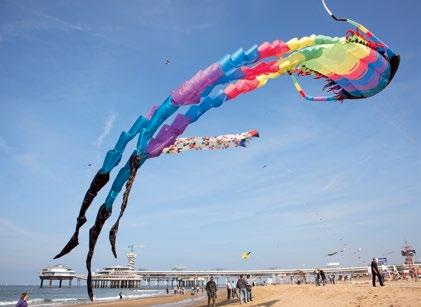
For sea world exploration, visit Sea Life Aquarium.
THE HARBOR
According to CNN, the Scheveningen harbor is among the top nine in the world. It continues the boulevard and "crosses" into the northern sea. It has a long and rich history. The landscape of the Scheveningen is absolutely unimaginable without this boat harbor.


There are lots of bars, restaurants and shops on the beach. This is a real mecca for delicious dishes, interesting hobbies and sea-view admirers.

PANORAMA MESDAG
Rembrandt is associated with Amsterdam, Vermeer with Delft, and Mesdag with The Hague. He painted the sea landscapes in the Scheveningen. "Panorama" is his most famous work.
SURFING
Scheveningen is a great place for surfing lovers. The coast is equipped with all of the necessary facilities, surfing shops and schools. The best surfing instructors will assist you. Surfer Village F.A.S.T. offers interesting architecture and a pleasant atmosphere, and the artificially produced waves will call you any time of the day.
KURHAUS
To see this unique work, you must go to a specially arranged place. Thanks to the panoramic picture of Europe, you will find yourself on the shore of the Scheveningen beach in 1880. The length of the canvas is 120 meters, the height 14m, and the diameter of the hall 40 m.

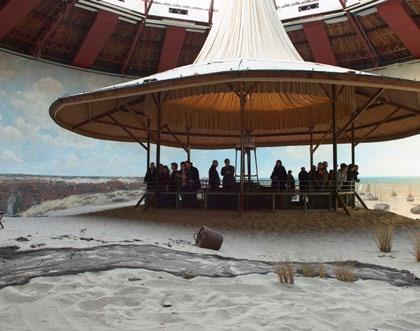
BEELDEN AAN ZEE
The calm oasis - "Statues at Sea" offers visitors rare examples of art that are located against the background of dunes. The museum is located around 200 meters away from Kurhaus Boulevard, around the pavilion built by Prince Willem in 1826. Here you can find sculptural images made from masonry and bronze. They are bored or cheerful, sturdy, or graceless. The central composition of the collection is a bronze statue of the royal family.
Hotel Kurhaus is a mix of comfort, traditions and history. In 1818, when the beach was a new destination for relaxation, the bath was opened for high-class public and soon became a "Grand Hotel".
In the Kurhaus, you can enjoy a swimming pool, relax in lounge chairs or tan on the terrace. The amazing sea view is the cherry on top.
The restaurant Waves at the Kurhaus has the largest terrace in the whole of Scheveningen. Their chefs cook delicious desserts while you enjoy the scenery. Here you can go for breakfast, lunch, dinner, or just a cup of coffee.
Standard room price: starting at 129 € Gevers Deynootplein 30

118 VOYAGER 8/2017
HAAGSCHE PASSAGE
This is the oldest shopping center in the Netherlands, with great architecture and truly outstanding shops. The passage between the Spuistraat, Hofweg and Buitenhof streets features fashionable clothes and jewelry, books, kitchen items and more.
De Passage 2511
DE BIJENKORF
This excellent department store is located in Grote Marktstraat Street in a unique building. It is one of the most famous stores in the Netherlands, where you can buy many famous brands, fashionable clothes, perfumes, books, interior items, decorative works, etc.

Wagenstraat 32
NOORDEINDE _ This unique area is located around the royal palace. Here you can find exclusive antique and jewelry stores. You can visit these places to view and purchase modern designs and classic works.
LIVINGSTONE GALLERY (Anna
THE HAGUE CENTER IS FOR SHOPPING. HERE YOU CAN FIND EVERYTHING: EXCLUSIVE HAUTE COUTURE, FAMOUS BRANDS AND DUTCH DESIGNER SHOPS.
PLAATS – this oldest square in The Hague houses exclusive shoe and jewelry stores. If you are looking for more exclusive brands, visit the Hoogstraat, Molenstraat, Noordeinde streets.
SPUI – big shops are located on the streets near Spui and Grote.
MARKTSTRAAT – a cozy shopping street with shoe and clothing stores.
DENNEWEG – employees of international high fashion stores are busy in this classical part of The Hague.
HAAGSCHE BLUF – This is one of the hotspots of Hague shopping, where you can see many outstanding shops.


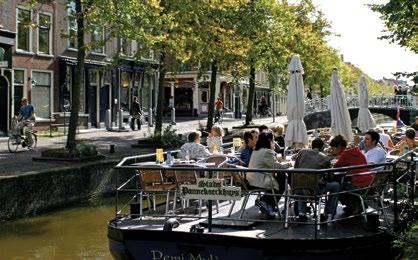
HEMA
Everything is for sale here - from clothing and food, to family and school items. Besides, Hema is famous for its hot smoked sausages (Rookworst), which you have to taste at least once.
Grote Markstraat 57
exhibit their works. Here you can see many paintings and sculptures.
NEELTJE TWISS (Denneweg 10)
This beautiful building holds a collection of contemporary art, antiques and decorative items.
RESTAURANT ALEXANDER

According to Gault Millau, it is one of the best restaurants in the Netherlands, where diners are offered white and black truffles and high-quality caviar and champagne.
WATERPROEF
Modern French cuisine is located in Scheveningen and has the best wine list in The Hague.
Dr. Lelykade 25, 2583 CL Scheveningen
CALLA'S
This respectable restaurant is located in a historic building. Classic French cuisine and a variety of wines await you in this Michelin-starred restaurant.
Paulownstraat 7a-b)
A gallery of contemporary art gives young talented artists an opportunity to
CHIEFS EN SPIRITS (Prinsestraat 49) – An art gallery focused on art works from all over the world. Here you will find many paintings and sculptures of African origin.
Small shops and supermarkets do not accept 500 € and 200 € banknotes. There is no restriction on the amount of money you can bring to the Kingdom of the Netherlands.
119 VOYAGER 8/2017
THE HAGUE
–
–
COMMENT
Laan van Roos en Doorn 51a
Denneweg 138 Den Haag www.restaurant-alexander.nl
ROTERDAM
PORT OF ROTTERDAM
The Rotterdam International Port is the largest in Europe and ninth largest in the world.

Currently the area of the port is 12,606 hectares; it stretches along the North Sea coast, 42 kilometers in length. 30,000 marine vessels drop anchor here annually. The port connects the railway link with the rest of the country and the whole of Europe. Rotterdam's port works with the largest cargo flows, most of which are oil and oil products, ore and coal.
The annual income of the port is 12 billion euros and 175,000 people work there. There are several types of tour to view the port. From the ship's boats, you will see the Rotterdam port routes and warehouses equipped with the latest technologies and thousands of containers from around the world.
KUNSTHAL
Every year, Kunsthal hosts 25 new exhibitions that cover all forms of cultural expression. Experimental exposures are risky and modern. Exhibitions present old and new art, photography, design and everything geared towards art lovers.
Just like Rotterdam's other museum buildings, Kunsthal is an architectural landmark. The writer Rem Koolhaas decided to set up an additional 3,300 sq. for the museum, allowing for five large exhibitions to take place at the same time. Kunsthal is located in Rotterdam Museum Park – a perfect place for relaxation.
Open: Tuesday-Saturday – 10.00-17.00; Sunday – 11.00-17.00; Price: 12€

Westzeedijk 341
KUBUSWONING
ERASMUSBRUG
The Erasmus suspension bridge is located in the center of Rotterdam on the Maas River. It’s the bridge that you come upon when coming from the sea. Thanks to its incredible construction and asymmetric drawing, the Erasmus Bridge became a symbol of the city. It was called "the Swan". The author of the project is architect Ben van Berkel and the bridge is 802 meters long and 139 meters high. Its southern part opens. This bascule bridge is the largest and heaviest in Western Europe.
SPIDO
At any time of the year, Spido offers a variety of tours in the port. The choice is yours: a 75-minute cruise through Rotterdam port, a long summer trip or a one-day trip.

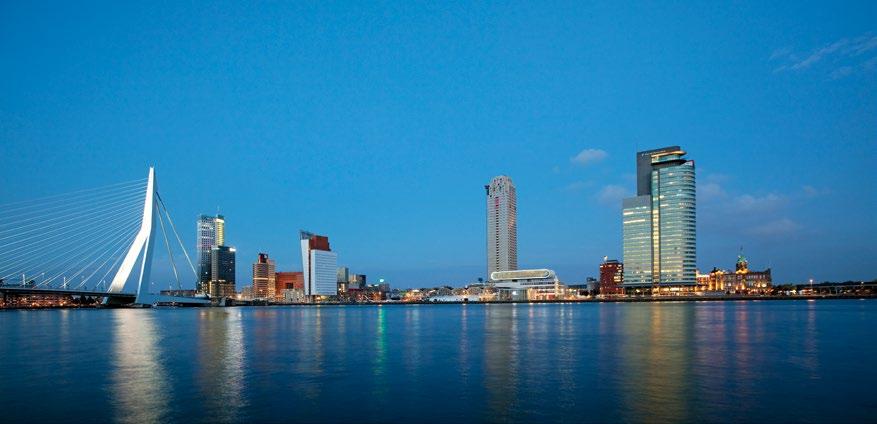
Spido helps you get to one of the largest ports in the world. There are hundreds of modern ships that you can find and get familiar with the latest technologies used for cargo handling.
These buildings are one Rotterdam’s postcards. Thirty-eight houses are located in the center of Rotterdam, in the center of Blaak and Oude Haven. They are tilted by 45 degrees and attached to column-like buildings. These are the first Cube-style houses in Holland, built in 1984 by the architect Piet Blom. The architecture and exterior design reiterates the construction of trees, and the "group" of houses reminds you of the forest. According to Blom’s concept, a village was to be created in a big citya cozy shelter where people would be in an unusual environment.
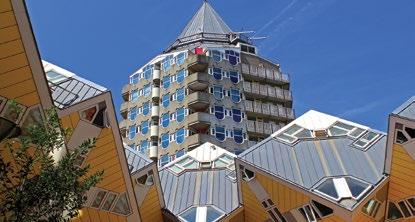
120 VOYAGER 8/2017
ROTTERDAM IS A MULTIFACETED PHENOMENONTHE OLDEST PORT CITY, FAMOUS FOR THE BEST BARS AND CLUBS, SHOPPING, AND AVANT-GARDE ART.
HOTEL NEW YORK
There are several distinguished hotels in Rotterdam. The Hotel New York is the most famous of them. In the past, thousands of emigrants traveled from here via SS Rotterdam to America. Today the ship is attached to the port and is partially rebuilt as hotel. A night spent here is exceptional.

Hotel New York's terrace, which belonged to the former residence of Holland America Line, will surprise you with a magnificent view of the Maas River.

Hotel New York's restaurant and bar make an unforgettable impression on gourmands. The café-restaurant is located on the first floor, serving 400 guests at the same time from early morning to late evening. Guests can enjoy an à la carte menu.
It serves the best seafood in Rotterdam, so I recommend you book a table in advance.
Koninginnenhoofd 1

GROOS (Schiekade, 203) – a conceptual shop that sells only items made in Rotterdam.
ANSH (Mauritsweg, 51) – ANSH (short version of Another Shop), Women Fashionable Clothing Store offers a wide choice of exclusive brands.
BETSY PALMER (Witte de Withstraat, 9a) – is an extravagant women's shoe shop for those who love great shoes.
GINZA (Pannekoekstraat, 6a) – the most exclusive store of sport shoes in the Netherlands - offers you a wide selection of tennis shoes, premium class brands and Japanese street style clothing.
THE HISTORIC SITE IS PRESERVED IN THE VICINITY OF THE CUBE-SHAPED HOUSES. HERE YOU WILL FIND A CALM ATMOSPHERE, BEAUTIFUL VIEW AND SOME QUIET CAFES. OLD BOATS ARE CLAMPED DOWN AT THE HARBOR. THERE ARE ALSO CRANES, SHIPS AND LOTS OF OLD MECHANISMS.

DE MARKTHAL


Rotterdam's closed market area is as big as a football stadium. It is full of fresh fish, meat, vegetables and delicacies. Apart from its architectural qualities, it is an ideal shopping destination for real gourmands who want to spend a tasty day. 100 stalls, 15 stores and 8 restaurants are located here. Fresh bread, cheese, fish, poultry, plants and edible blossoms are all available under one roof.
Stores open: Monday-Thursday, Saturday – 10.00-20.00; Friday – 10.0021.00; Sunday – 12.00-18.00.

Binnenrotte / Blaak , Behind the Rotterdam Blaak station
PARKHEUVEL
This Michelin-starred restaurant is known for its exquisite cuisine and well-chosen wine list. It is located in a park near Parkhaven's port.
Heuvellaan 21
DUDOK
The café in the city center is a distinctive place for meetings. Enjoy coffee with a family-recipe apple pie or a cool drink in the atmosphere filled with the spirit of art and architecture.
Meent 88

121 VOYAGER 8/2017
ROTTERDAM
MAASTRICHT
HET VRIJTHOF
Maastricht is full of historic squares and buildings. You should definitely see visit Het Vrijthof.
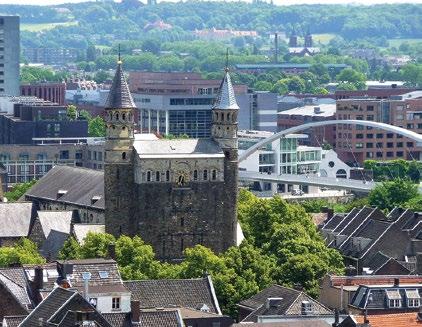

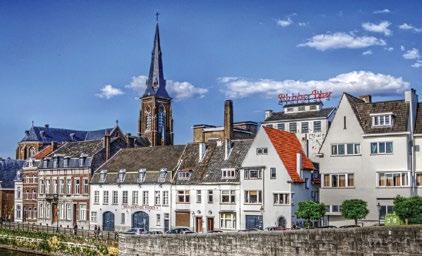
North and south meet in Maastricht; it is on the crossroads between three countries – the Netherlands, Belgium and Germany: the Euregio Maas-Rijn region. There are many museums, churches, historic buildings, hidden narrow streets and large squares in the city. You can find any type of architecture here, starting with Roman structures and ending with the Bonnefantenmuseum's modern design.
MAASTRICHT DIFFERS COMPLETELY FROM THE REST OF THE NETHERLANDS. YOU GET A VIEW OF ITS TWENTY CENTURIES OF HISTORY IN THE CENTER OF THE CITY. UNTIL THE SECOND HALF OF THE 19TH CENTURY, MAASTRICHT WAS A DEFENSE CITY-FORTRESS AGAINST ENEMY INVASIONS WITH ITS STRONG WALLS AND BUNKERS. MANY BUILDINGS WITH MILITARY HISTORY CAN BE FOUND HERE.
SINT-SERVAASBRUG
This stone 13th century bridge was built by the Romans. The renewed stone version of this bridge dates back to 1275. In good weather, it is very pleasant to watch the boats floating on the river Meuse. The Maastricht locals claim that Sint-Servaasbrug was the first bridge built in Netherlands.
ONZE-LIEVE-VROUWEBASILIEK

The Our Lady’s Basilica dates back to the 9th century. It is a renewed version of a Roman Catholic basilica.
It is the oldest Christian church in the Netherlands. You will see many examples of religious art here, including hand-embroidered mantles, silver sculptures and other holy objects.
Our Lady’s Basilica is located on the Onze Lieve Vrouweplein square. Called at one time the most beautiful square in the country, it is filled with open-air cafes where you can have a meal and enjoy the atmosphere.

Onze Lieve Vrouweplein 7 www.sterre-der-zee.nl
BASILIEK VAN ST. SERVAAS
This historic church is known as the resting place of the 4th century missionary Saint Servatius. For many pilgrims, this place is also interesting due to the church’s treasury. The Roman Basilica is located on the Vrijthof square.
Keizer Karelplein 3
MUSEUM AAN HET VRIJTHOF
This museum preserves Maastricht’s history, art and artefacts. The museum's collection, located in the captivating red building, includes paintings of Dutch and Flemish masters starting from the 17th century, as well as works of the Hague School, and sculptures from the medieval and Renaissance periods.
The museum introduces visitors to the city’s cultural identity through an exhibition titled "500 Years in Maastricht". Here you can also view modern art exhibitions. The territory of the museum is as unique as the exhibits within it. The building, which dates back to the 16th century, is called the Spaans Gouvernement. The Prince of Spain, Charles V, and his wife, Isabel, lived here during their visit to Maastricht. Their portraits can be found in the palace yard.
Open: every day except Monday — 10.00-18.00
Vrijthof 18
122 VOYAGER 8/2017
YOU CAN TRAVEL TO MAASTRICHT FROM AMSTERDAM. IT TAKES 2.5 HOURS BY TRAIN AND A ONE-WAY TICKET COSTS 25 EUROS.
THE NEW MODERNIST BUILDING OF THE MUSEUM WAS CREATED BY THE FAMOUS ITALIAN ARCHITECT ALDO ROSSI.

BONNEFANTENMUSEUM MAASTRICHT
The Fine Arts Museum offers a unique combination of old and contemporary art. On the first floor you will see paintings from the Renaissance and medieval periods and an impressive collection of Flemish paintings from the XVI-XVII centuries.
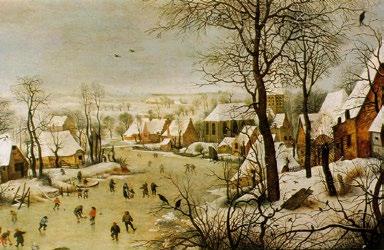
The museum collection includes important works by Veronese, Donatello, Tintoretto, Bruegel, Van Dyck and Rubens. On the second floor, the contemporary art museum presents American minimalism, Italian Arte Povera and conceptual art by European artists.

Open: every day except Monday — 10.00-17.00
Ticket price: 12€
Avenue Ceramique ; www.bonnefanten.nl
During the reign of King Louis XIV of France, D'Artagnan was captain of the king’s guard musketeers. He died during the Franko-Dutch War, on June 25, 1673 in Maastricht. His tomb is in the Cathedral of St. Petrus and Paulus in the Wolder district.

THE STATUE OF D'ARTANAN
"Un pour tous, tous pour un" ("one for all and all for one") – You can read this phrase on a statue in Aldenhofpark.
The real D’Artagnan was different from the character in Alexander Dumas’ novel and did not serve during the period of Cardinal Richelieu.
Aldenhofpark 4-5
RECOMMEND
IN DE MORIAAN
The smallest open-air café in the Netherlands, located right on the Op de Thermen square. With your glass of wine, you should order a cheese plate and cooked escargot (Stokstraat 12).
GRAND CAFÉ D’N INGEL
Very pleasant relaxation awaits you on this café’s terrace located in the most beautiful square of Maastricht (Vrijthof 13 ).
MAASTRICHT VINEYARDS
The oldest vineyards in the Netherlands, set on the Limburg gorges near Maastricht, date back to Roman times.

Try wines made from Pinot Noir, Riesling and Müller-Thürgau grape varieties.
WYCK: Full of fashionable boutiques, interior design and antique shops, art galleries and delicacies.
JERKERKWARTIER: This street hosts the best art studios, antique shops and restaurants.
BREDESTRAAT:
Located near Vrijthof square, this street wins the hearts of guests of all tastes thanks to its fashionable shops.
RECHTSTRAAT: here you will find well-known brand stores.
MAYFAIR (Stationsstraat 20): This street is a concentration of sophisticated male brand shops of British style.
PL Line (Bredestraat 7a): This beautiful historic building houses the world’s best designers.
LUTGARDE BAGS & MORE (Havenstraat 16): Beautiful leather bags, scarfs, gloves and jackets.
CAFÉ DE TWEE HEEREN
This place is known for its delicious lunch and dinner menu.
Platiel 17

CAFÉ DE BELSJ
The walls of this brown pub are lined with old paintings. Among its many tasty dishes, you will find an onion soup cooked according to a family recipe and a very diverse cheese plate.
Maastrichter Heiden-
straat 7
HARBOUR CLUB
This impressive restaurant is built on the water. You can enjoy tasty dishes and drinks on a terrace by the blazing fireplace.
Bassinkade 4
123 VOYAGER 8/2017
TRY ZUURVLEES IN MAASTRICHT – A MEAT DISH WITH CHIPS AND APPLE SAUCE, LOCAL BEER AND WINES.
MAASTRICHT
GIETHOORN
You will not see any cars in this village, called the Venice of Netherlands, because all the village houses are located on small peat islands. The islands are connected with wooden bridges. Giethoorn was founded by peat miners. Pools and lakes emerged as a result of cutting peat; between them, hay-roofed houses were constructed. The only ways
DE LINDENHOF
to commute between the islands were the wooden bridges or traditional Giethoorn narrow boats.

ZAANDAM
In the Golden Age of the Netherlands, the Zaan river was a center of grain production and played a crucial role during the first industrial revolution. The energy of thousands of windmills was supplied to saw wooden materials used in shipbuilding as well as paper production.
ZAANSE SCHANS
Giethoorn is also known for its gastronomy. Most of the restaurants are by the water. Among them is a two-Michelin-starred restaurant, De Lindenhof. It has held an honorary place among the best restaurant of the Netherlands for years, and its Grand Chef - Martin Kruithof - is known outside of the Netherlands as well. The restaurant can be visited from Wednesday to Sunday for lunch at 12.00-14.00 and dinner from 18.00 to 21.00.
The restaurant hosts a six-room hotel. If you wish to stay, you should book your room in advance:
www.restaurantdelindenhof.nl

Gourmands also recommend the following restaurants: Hollands Venetië; Beulakerweg 77 and Akhtenhaus ('t Achterhuus; Dominee to Hylkemaweg 43).
THE DUTCH VILLAGE OF GIETHOORN, IN THE OVERIJSSEL PROVINCE, IS LOCATED ON THE TERRITORY OF WIEDEN NATIONAL PARK. IT IS BEST TO TRAVEL FROM AMSTERDAM BY CAR; THE TIME REQUIRED TO GET THERE IS 1.5 HOURS.


It is impossible not to visit the most famous landmark of Zaandam – Zaanse Schans, a medieval Dutch stylized village with an operating wind mill.
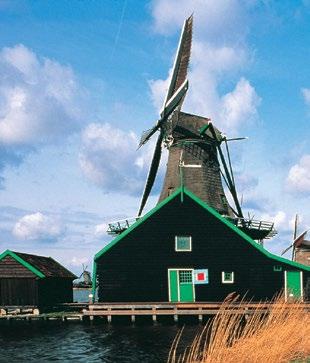
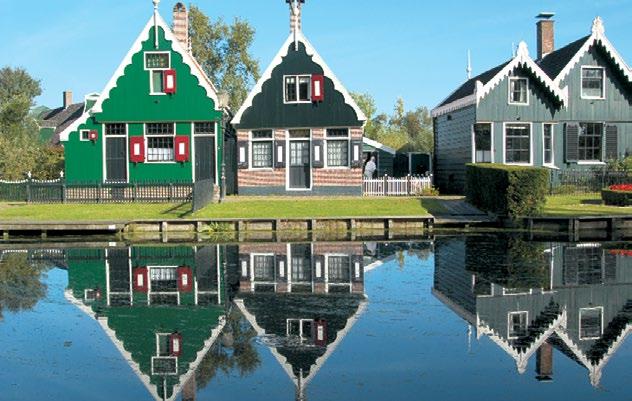
You can look at the workshops where they currently make klomps.
Old wooden houses still stand here. The local residents dressed in colorful national costumes
will offer you 50 types of cheese for tasting, followed with a suitable wine.
Wooden shoes – klomps – were the traditional footwear for centuries. The oldest klomps were found in Amsterdam and Rotterdam, and date back to the 13th century. These wooden shoes are exactly the same as they make them today in the Netherlands. Today, most klomps are bought as souvenirs by foreign tourists.
Modern klomps have found their way into the world of high fashion and even became a component of high fashion. In 2007, the designers of the famous brand Horstring & Rolf – Viktor Horstring and Rolf Snoeren – revived folklore motifs in their autumn collection.
124 VOYAGER 8/2017
The northern Holland city of Zaandam is located 10 minutes away from Amsterdam. It is known for being located in the neighborhood of the famous village (open air museum - Zaanse Schans).
WINDMILLS

There was a time when the Netherlands was called the country of 10,000 windmills. More than a thousand tall historic windmills are still in the country today. The tall windmills come in many forms, including a column, a hollow column, a tower and an octagonal mill. Every one of them is essentially a variety of the rotating mill in the form of a winged vertical pillar; the wings spin in the direction of the
wind. In some tall windmills, the middle area is wider – the interior of the column is more spacious to allow the miller to live there. In the past, windmills were built for different purposes. The most important of them was to transport water from riverbeds to make the soil fit for cultivation. In the 14th century, hollow mills were used to drain swamp areas. In general, every kind of windmill had its own purpose in the Netherlands: water transportation; drainage of lowland regions; sawing of wood materials; grinding of grain etc.
Some of the current mills are still used for drainage, such as two of the 20 mills in Kinderdijk and the "Molen De Otter" of Amsterdam.
The mills that are currently working may soon be stopped as the number of high buildings around them increases and they are no longer able to "catch" the wind in the same way as before. I recommend that you make a windmill visit a definite part of your trip.
WINDMILLS AT KINDERDIJK
To get a better impression of Dutch windmills, visit the Kinderdijk, which is 25 km away from Rotterdam. The most beautiful landscapes open up from these structures. You will also be able to see how the millers used to live with their families.


17 out of the Kinderdijke's 20 mills were built in 1740 as part of a unified water resource management sys-
DE GOOYER WINDMILL
This grain-grinding mill is one of six mills of the same type that have survived in Amsterdam and is located near the city’s historic center.
It was built in 1725 and moved to a different location in 1814 to "recapture the wind" as in the previous location new constructions hampered air flows.
Erected near a famous brewery, this windmill stands on the banks of the river Ij and attracts many visitors. "Molen de Gooyer" is considered to be the tallest wooden windmill in Netherlands.

Funenkade 5 1018 AL Amsterdam
tem in order to avoid flooding. Today they are regarded as a symbol of the Dutch system of water management. The mills are lined in two rows facing each other, creating an impressive view.
UNESCO recognized the uniqueness of the region in 1997. If you take a bus or travel by boat from Rotterdam, it will take you only 30 minutes to get there.
The museum entrance fee is 6.50 €.
125 VOYAGER 8/2017 GIETHOORN / ZAANDAM
LEIDEN
In the 17th century, Leiden was one of the Netherlands's largest and richest cities. It is the home of many famous artists, including Rembrandt. Even today, when walking in the streets of Leiden, you will certainly feel its historic atmosphere.

Leiden is a colorful university city with many canals, strange houses and museums. It is a great place for walking and enjoying the artistic environment.
MARGRIET VAN BREEVOORT’S SCULPTURE, “HOMUNCULUS LOXODONTUS” IS A NEW SIGHT IN LEIDEN. IT IS LOCATED AT THE LEIDEN UNIVERSITY HOSPITAL.

Haarlem, the capital of Northern Holland, is half an hour away from Amsterdam. For centuries, it was the historical center of the region. The local population was celebrated and enriched by cultivating tulip bulbs. Haarlem also proudly bore the name of the flower cityBloemenstad.

TEYLERS MUSEUM
THIS OLD CITY IS 35 MINUTES’ DRIVE FROM AMSTERDAM. THERE ARE OVER 3,000 HISTORIC BUILDINGS THERE. THE CITY AREA IS JUST 23 SQ. KM SO ANYWHERE YOU LOOK, YOU'LL FIND A "MONUMENT".

CORPUS
The journey in the human body museum begins with the knee and ends in the brain. During a 55-minute excursion through the seven-story space, you will see how the body works when we sleep, when we move, when we talk ... simulated processes are transmitted to enormous monitors. All exhibits can be touched by hand here. In the unique museum information center,
doctors provide visitors with information about healthy lifestyles and nutrition.
Price: 12€
Willem Einthovenstraat 1
In 1778, the Teylers Natural Science Museum was created for educational purposes in Haarlem. It houses not only a natural collection but also works of art, including Michelangelo, Raphael, Rembrandt and others. The museum has a unique collection of books and engineering tools.
It is the only museum in the world located in an authentic 18th century building and the interior remains in its original condition.
FRANS HALS MUSEUM
Visit the museum of the great Frans Hals, a painter of the Golden Age. It was founded in 1862. Here you will see a beautiful collection. Open: Tuesday-Saturday11.00-17.00; Sunday and Holidays12.00-17.00. Tickets sold online.


This is the first museum founded in the Netherlands in the era when scientists and inventors began to systemize the accumulated knowledge about the universe. Open: Tuesday-Sunday – 10.0017.00; Closed on Monday. Ticket price: 12.50€

Spaarne 16
www.teylersmuseum.nl
Price for visitors 19-24 years: 6 €; for adults: 12.50 € Groot Heiligland 62

126 VOYAGER 8/2017
HAARLEM
LEIDEN / HAARLEM
THE TRADITIONAL FESTIVAL BLOEMENCORSO - THE FLOWER PARADE - STARTS FROM NORDWEIG AND ENDS IN HAARLEM.
Water has a great share on the physical map of the Netherlands. The three large rivers of Europe (Rain, Maas and Shelt) flow through the Dutch territory to reach the ocean and their aggregation creates the entire delta.
26% of the Netherlands territory is below the sea level. During the centuries of battling the water, the Dutch created a very sophisticated system of protective barriers, dikes and dams and managed to dry a significant area of land.
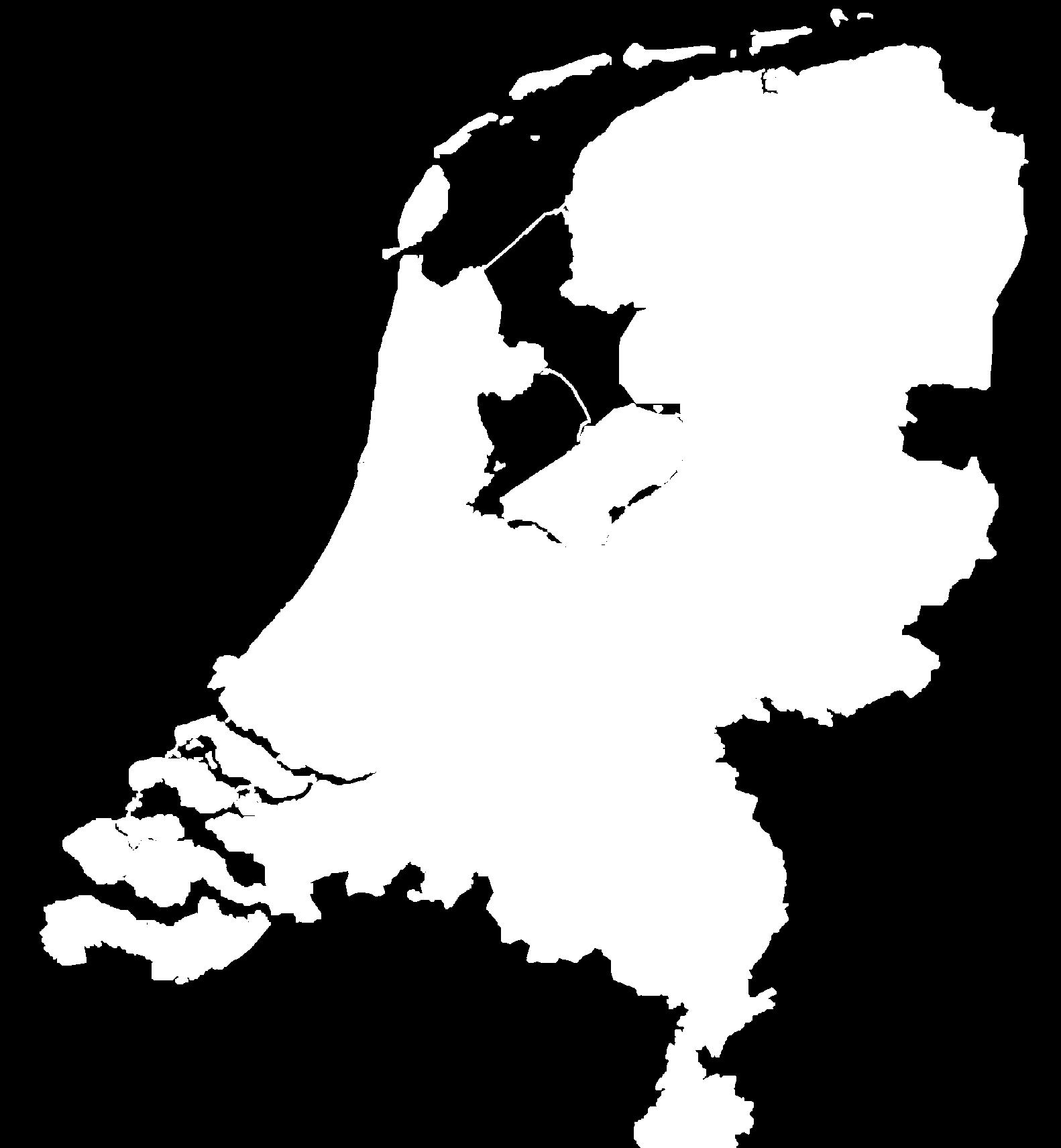
NETHERLANDS VS HOLLAND
What is the difference between the Netherlands and the Holland? The Netherlands is made up of 12 provinces, though many still say "Holland" when speaking of this country. In turn, the Holland is comprised of only of two parts - namely Noord and Zuid-Holland. The twelve provinces together are called "the Netherlands". As for the country's full name, it is "the Kingdom of the Netherlands".
The country’s area is: 41 543 km 2 (18,41% of which is water)
Land: 33 800 km 2

Total population: 17 003 214
Population density per 1 sq. km: 503
THE LEADER OF THE STATE IS KING WILLEMALEXANDER. HE IS THE FIRST KING OF THE NETHERLANDS SINCE 1890. THE QUEENS RULED THE KINGDOM OF THE NETHERLANDS WERE QUEEN SINCE WILLEM III.

The territory currently held by Netherlands was known as “THE REPUBLIC OF SEVEN UNITED LANDS” from 1588 to 1795. In 1795, it was conquered by the French army and became the "Batavian Republic". Later, Napoleon Bonaparte crowned his brother Louis here, and the Republic was transformed into a Kingdom in
The country’s capital is Amsterdam though the government is in The Hague.
40% of the population lives in the so-called “Randstad” - this is what they call the aggregate of Amsterdam, Rotterdam, Hague and Utrecht.
1806. The Netherlands remained a kingdom even after the defeat of Napoleon.
At that time, the region of Holland has contributed greatly to the development of local economy and welfare, which led to the fact that Holland became a spoken name of the country.
Dutch is the state language of Netherlands. People from the Friesland province can choose between the Dutch and the Frisian, which is the only officially recognized regional state language. Other regional languages in Netherlands are Limburg and the so called Low German (Low Saxon dialects). Many Dutch are fluent in both German and English.
The current colors of the Netherlands flag are red, white and blue. The roots of the old flag come from orange, white and blue, of the prince flag that the Dutch army used during the eighty-year war with the Spanish Habsburgs. After the war ended, the old flag was replaced with the new, redlined state flag. Willem of Orange has once chosen the orange color. To this day, the Dutch have great respect for this color, even though the flag does not have a line of this color.

Governance Form: Constitutional MonarchyParliamentary Democracy. Religion: 44% of the population does not follow any faith
29% are Catholics
19% Protestant
6% Muslim
1% Hindu
1% Buddhist
The Kingdom of the Netherlands consists of four countries, the Netherlands is the largest in Western Europe, while the other three are located in the Caribbean: Aruba, Curaçao and Sint-Maarten. They have a status of self-governing state formations. There are three more territories in the Kingdom - Bonaire, Sint Eustatius, and Saba - as special administrative units –public bodies in the Caribbean Netherlands.
127 VOYAGER 8/2017


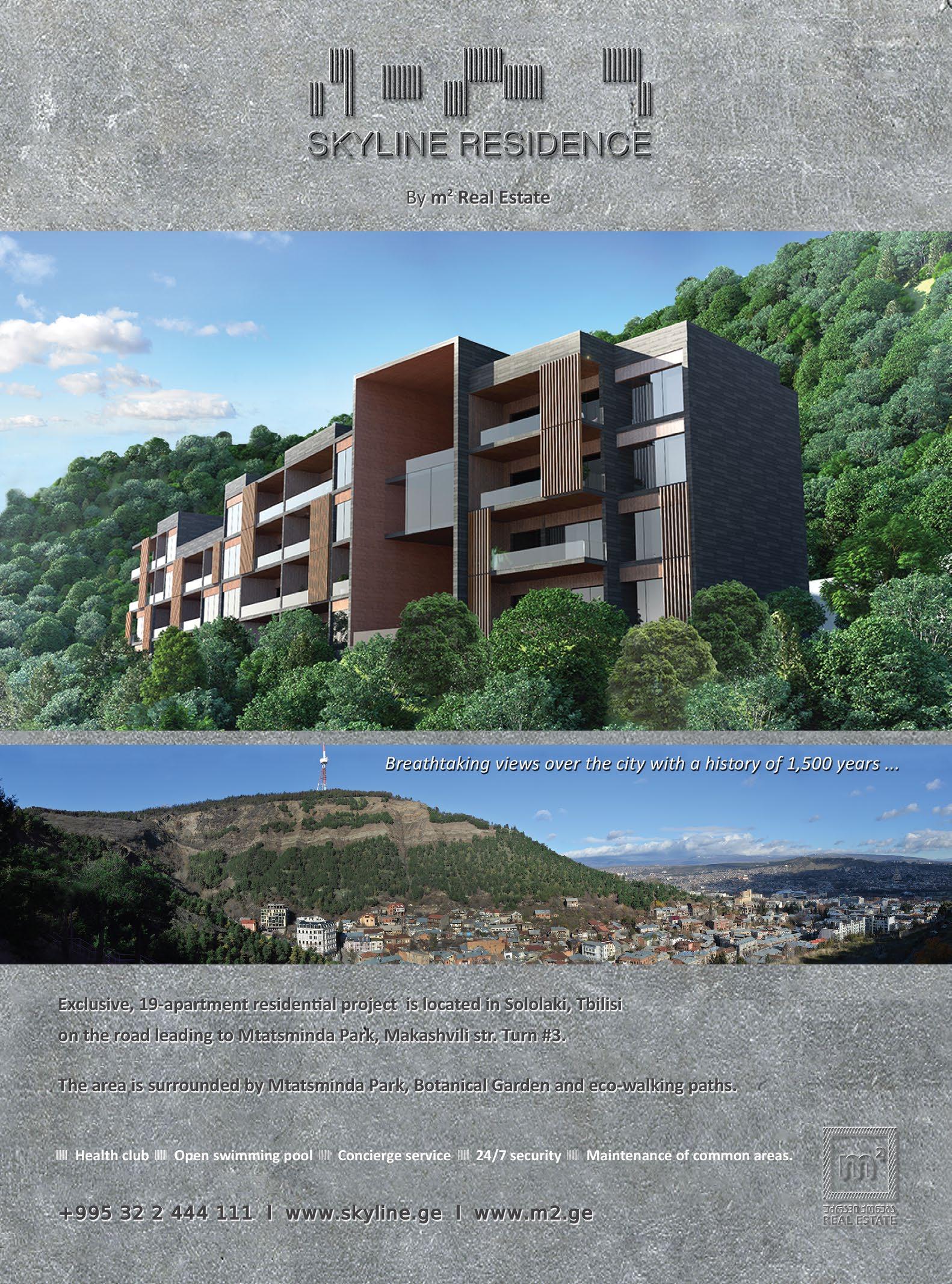



























































































































 ROUTE RECOMMENDED BY VOYAGER
ROUTE RECOMMENDED BY VOYAGER






































































































































 LASHA BUGADZE
LASHA BUGADZE






























 THE AMERICAN SOCIETY OF CIVIL ENGINEERS (ASCE) BELIEVES THAT "ZUIDERZEE" PROJECT, TOGETHER WITH "DELTA", IS ONE OF 7 WONDERS OF THE MODERN WORLD.
AFSLUITDIJK, A 30-KM LONG DAM, A PROJECT BY " ZUIDERZEE "
The Oosterschelde is the largest of the 13 dams of the “Delta” system.
THE AMERICAN SOCIETY OF CIVIL ENGINEERS (ASCE) BELIEVES THAT "ZUIDERZEE" PROJECT, TOGETHER WITH "DELTA", IS ONE OF 7 WONDERS OF THE MODERN WORLD.
AFSLUITDIJK, A 30-KM LONG DAM, A PROJECT BY " ZUIDERZEE "
The Oosterschelde is the largest of the 13 dams of the “Delta” system.






























 Self-Portrait as a Painter, 18871888. Vincent van Gogh. Amsterdam, Van Gogh Museum
Sorrowing old man ('At Eternity's Gate') 1890. Vincent van Gogh. Kröller-Müller Museum, Netherland
Self-Portrait as a Painter, 18871888. Vincent van Gogh. Amsterdam, Van Gogh Museum
Sorrowing old man ('At Eternity's Gate') 1890. Vincent van Gogh. Kröller-Müller Museum, Netherland





 IRINA BAGAURI
IRINA BAGAURI


 © Rahi Rezvani, Nederlands Dans Theater, by Sol León & Paul Lightfoot, Stop-Motion.
© Rahi Rezvani, Nederlands Dans Theater, by Sol León & Paul Lightfoot, Stop-Motion.
© Rahi Rezvani, Nederlands Dans Theater, by Sol León & Paul Lightfoot, Stop-Motion.
© Rahi Rezvani, Nederlands Dans Theater, by Sol León & Paul Lightfoot, Stop-Motion.
© Rahi Rezvani, Nederlands Dans Theater, by Sol León & Paul Lightfoot, Stop-Motion.
© Rahi Rezvani, Nederlands Dans Theater, by Sol León & Paul Lightfoot, Stop-Motion.



 © Rahi Rezvani, Nederlands Dans Theater, by Sol León & Paul Lightfoot, Safe as Houses.
© Sharon Mor Yosef, Nederlands Dans Theater, by Jiri Kylián, Tar and Feather.
© Rahi Rezvani, Nederlands Dans Theater, by Marco Goecke, Woke up Blind.
© Rahi Rezvani, Nederlands Dans Theater, by Sol León & Paul Lightfoot, Safe as Houses.
© Sharon Mor Yosef, Nederlands Dans Theater, by Jiri Kylián, Tar and Feather.
© Rahi Rezvani, Nederlands Dans Theater, by Marco Goecke, Woke up Blind.


 © Joris-Jan Bos, Nederlands Dans Theater, by Hans van Manen, Two.
© Rahi Rezvani, Nederlands Dans Theater, by Franck Chartier, The lost room.
© Joris-Jan Bos, Nederlands Dans Theater, by Hans van Manen, Two.
© Rahi Rezvani, Nederlands Dans Theater, by Franck Chartier, The lost room.











 Christien Meindertsma
Christien Meindertsma




 1. Jaap Eden, the multi-time speed skating champion
2. Olympic champion of 1928, a female gymnast team
3. Olympic Games in 1928 in Amsterdam
1. Jaap Eden, the multi-time speed skating champion
2. Olympic champion of 1928, a female gymnast team
3. Olympic Games in 1928 in Amsterdam

 1. Gold Medalists of the 1900 Paris rowing tournament – Roelof Klein and François Antoine Brandt with an anonymous boy.
1. Gold Medalists of the 1900 Paris rowing tournament – Roelof Klein and François Antoine Brandt with an anonymous boy.



















 Gert-Jan Hageman
Gert-Jan Hageman




























 BY COMPOSITION AND AGING:
BY COMPOSITION AND AGING:































































































































